Introduction
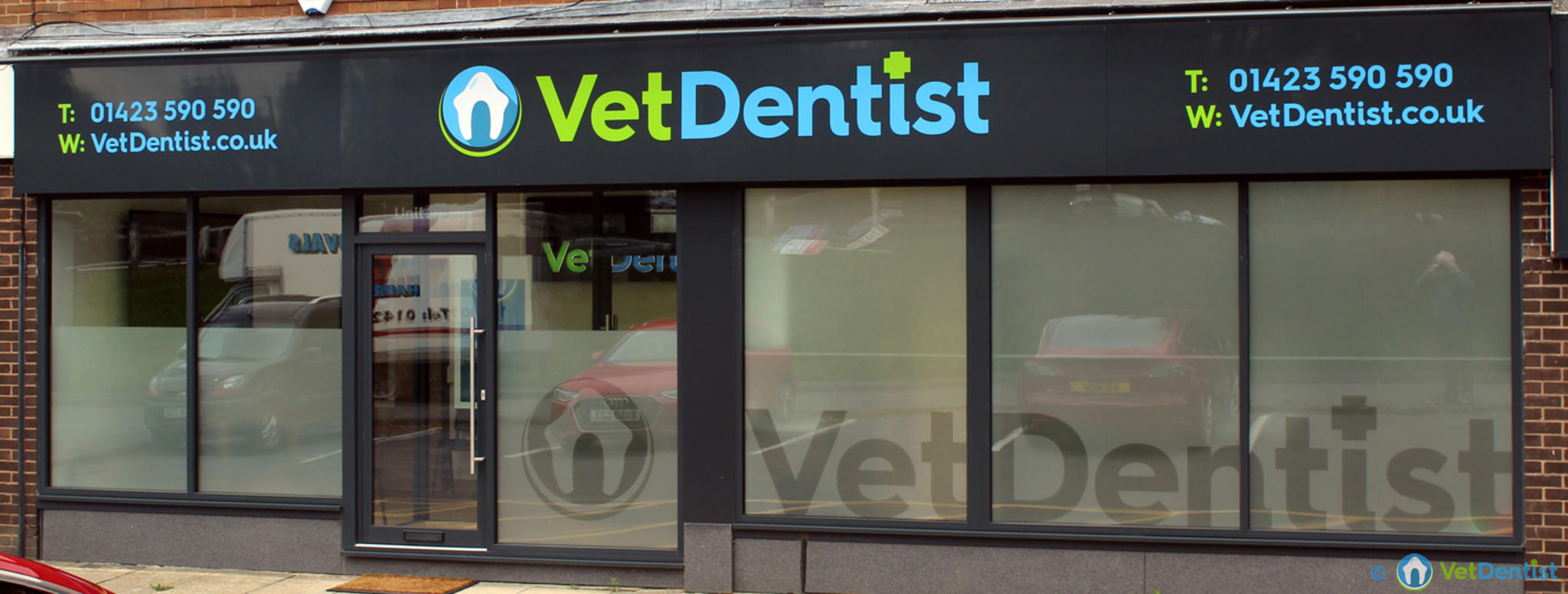

This is a slightly unusual webpage in that it is designed to provide a resource for links from other areas – most notably the 360’ tour. As such, it would make a pretty boring read if you are simply scrolling down through it. However, there will be some “dental nerds” (Bob counts himself amongst them!) who are interested in exactly what facilities and which kit is available. The information also provides a handy aide-memoire for helping to update our eye watering contents insurance policy!
Reception
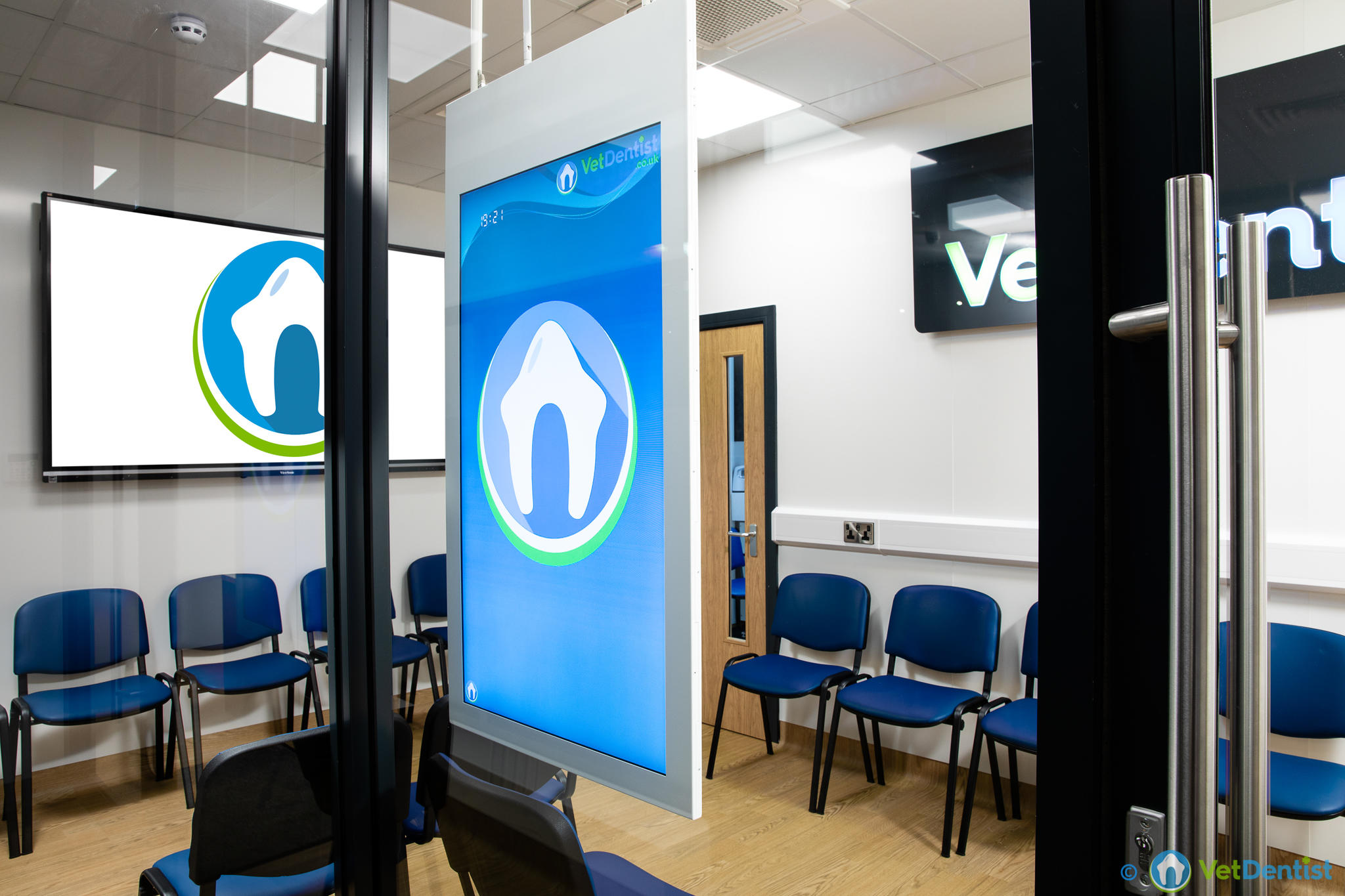
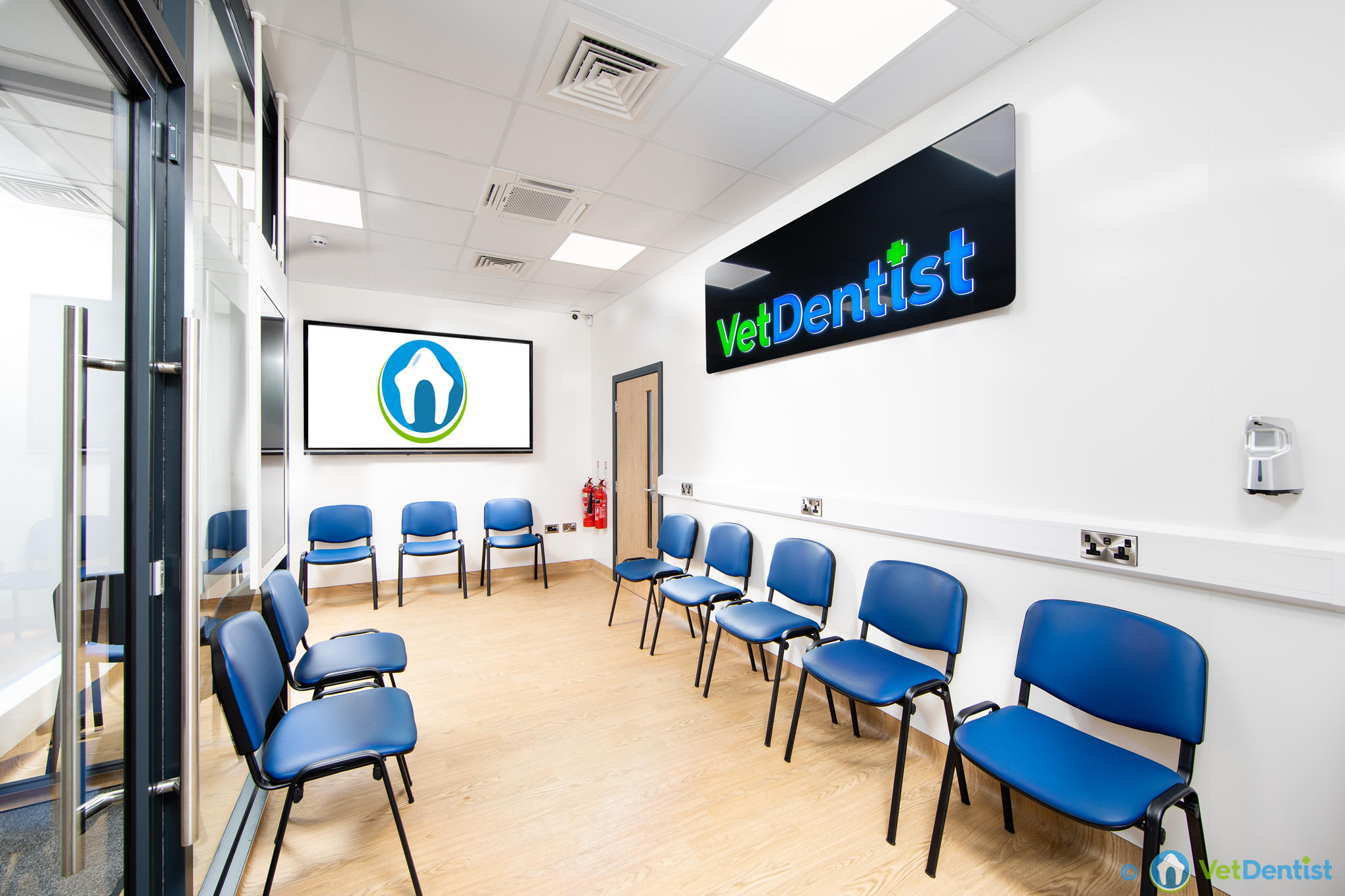
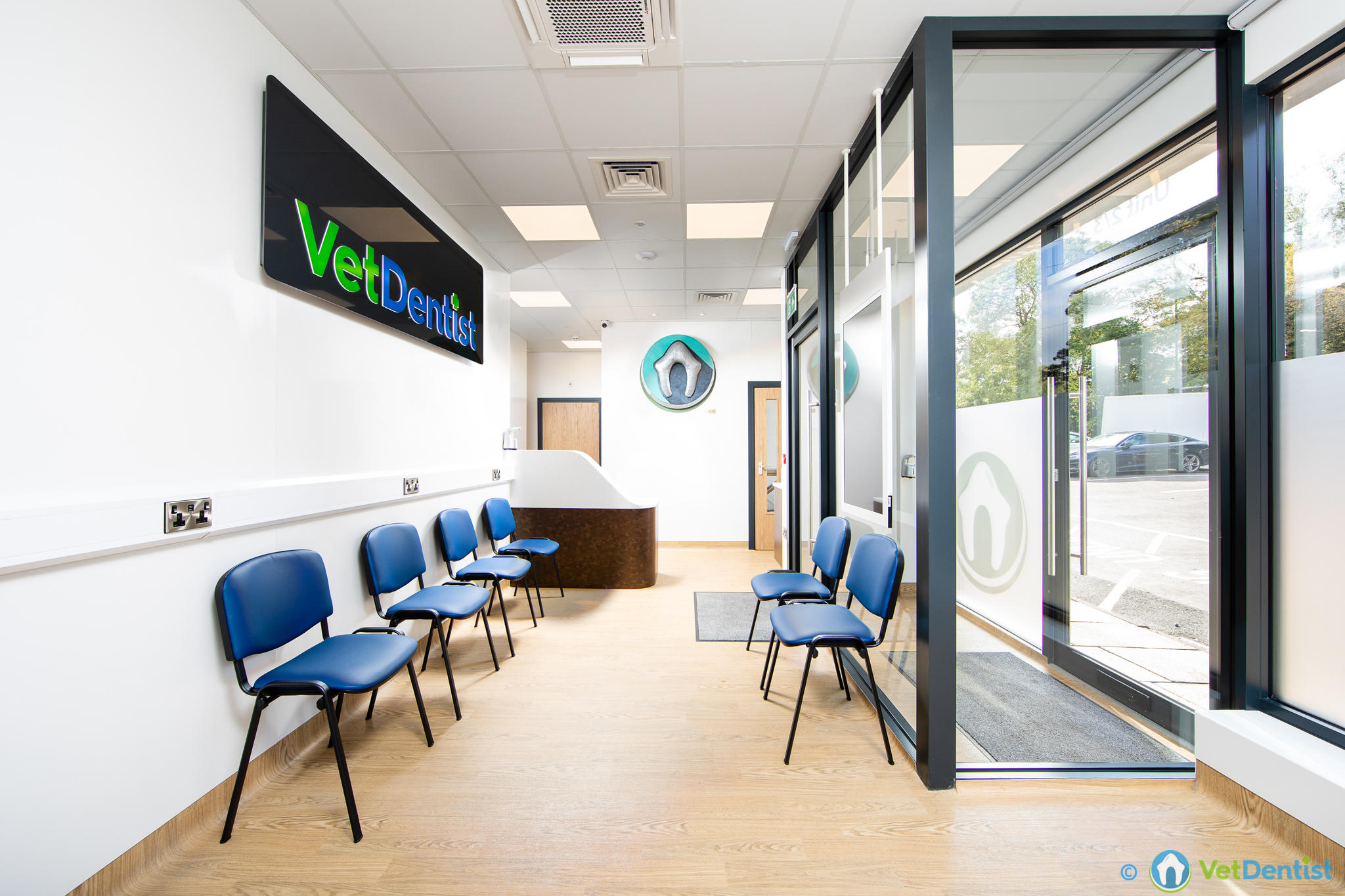
The Reception area includes an entrance lobby. This helps ensure the security of our patients, but also helps assist climate control for the practice. Within the lobby is a double sided display panel, the content of which can be personalised. Within the reception area itself a further large displays helps provide information for our clients. This can include details of our anaesthetic regimes, post operative care, or overviews of some conditions. High speed Guest WiFi is available, together with charging points for client use. Electric blinds help in limiting solar gain during the summer months. The diffused glass allows privacy for clients. Whiterock wall covering and Altro coved flooring has been used to provide a durable, hygienic, easily cleanable surfaces.
Lecture Area


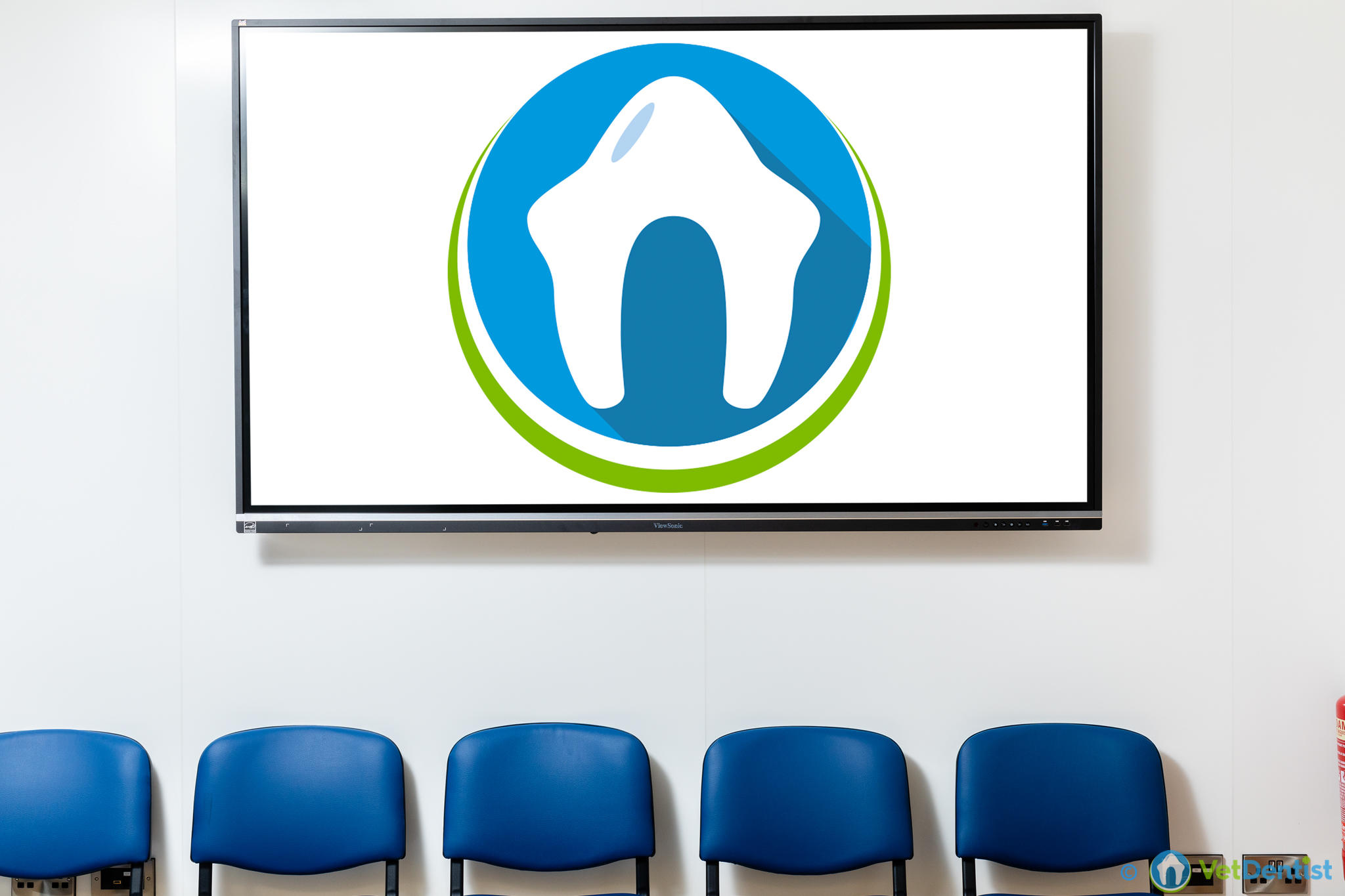
The whole reception area can be converted into a small lecture theatre. The reception desk station is mounted on wheels allowing it to be neatly moved to an alcove, freeing seating space. The large touch display screen allows an interactive lecture format, also allowing web casting for a fully immersive experience. The electric blinds help to create a “black-out” effect allowing lectures to be presented during daylight hours. The lectern was created by Tom Campbell and incorporates the “Pet Health Centre” logo of Bob’s previous veterinary practice.
Roundel
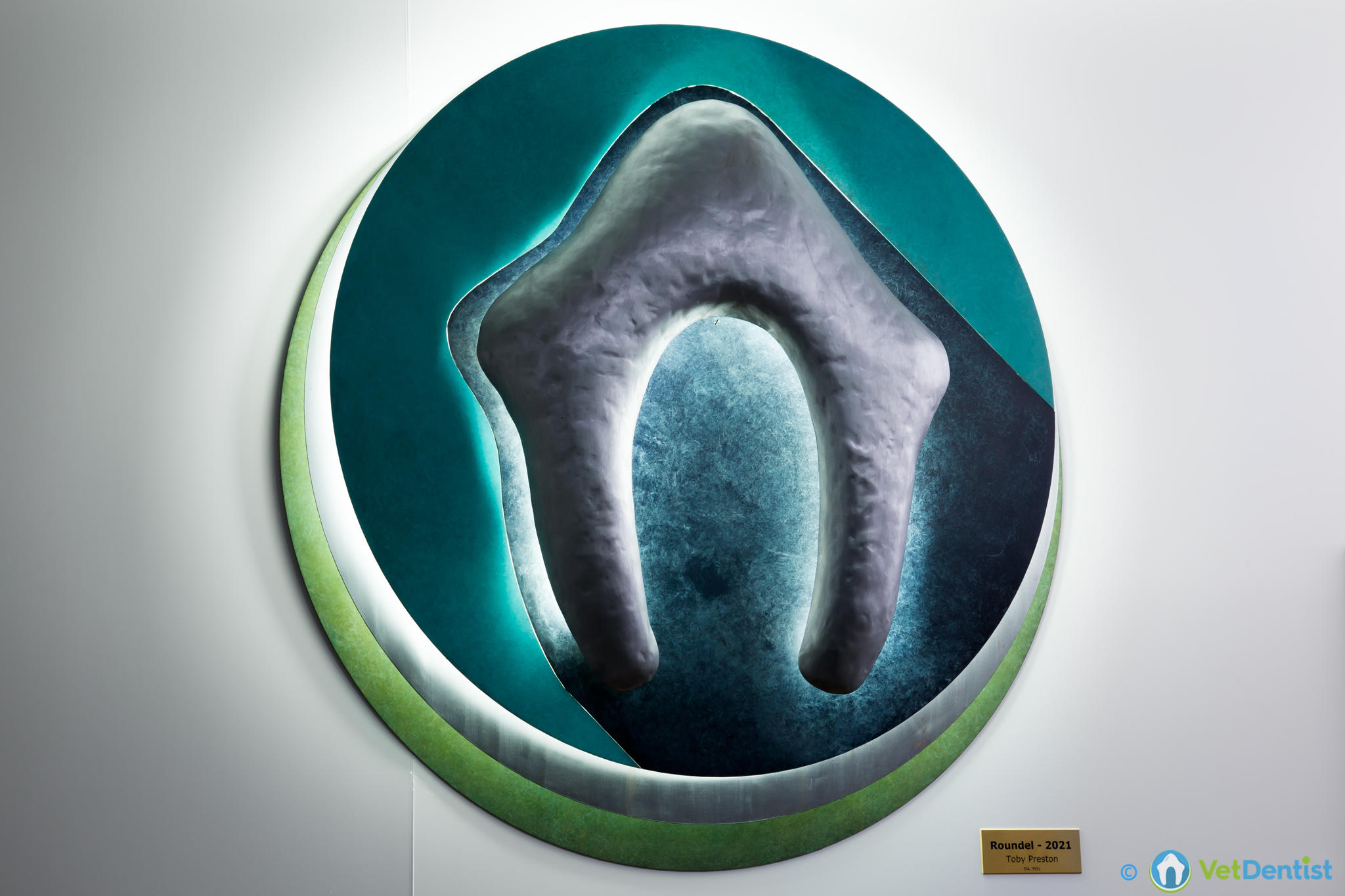

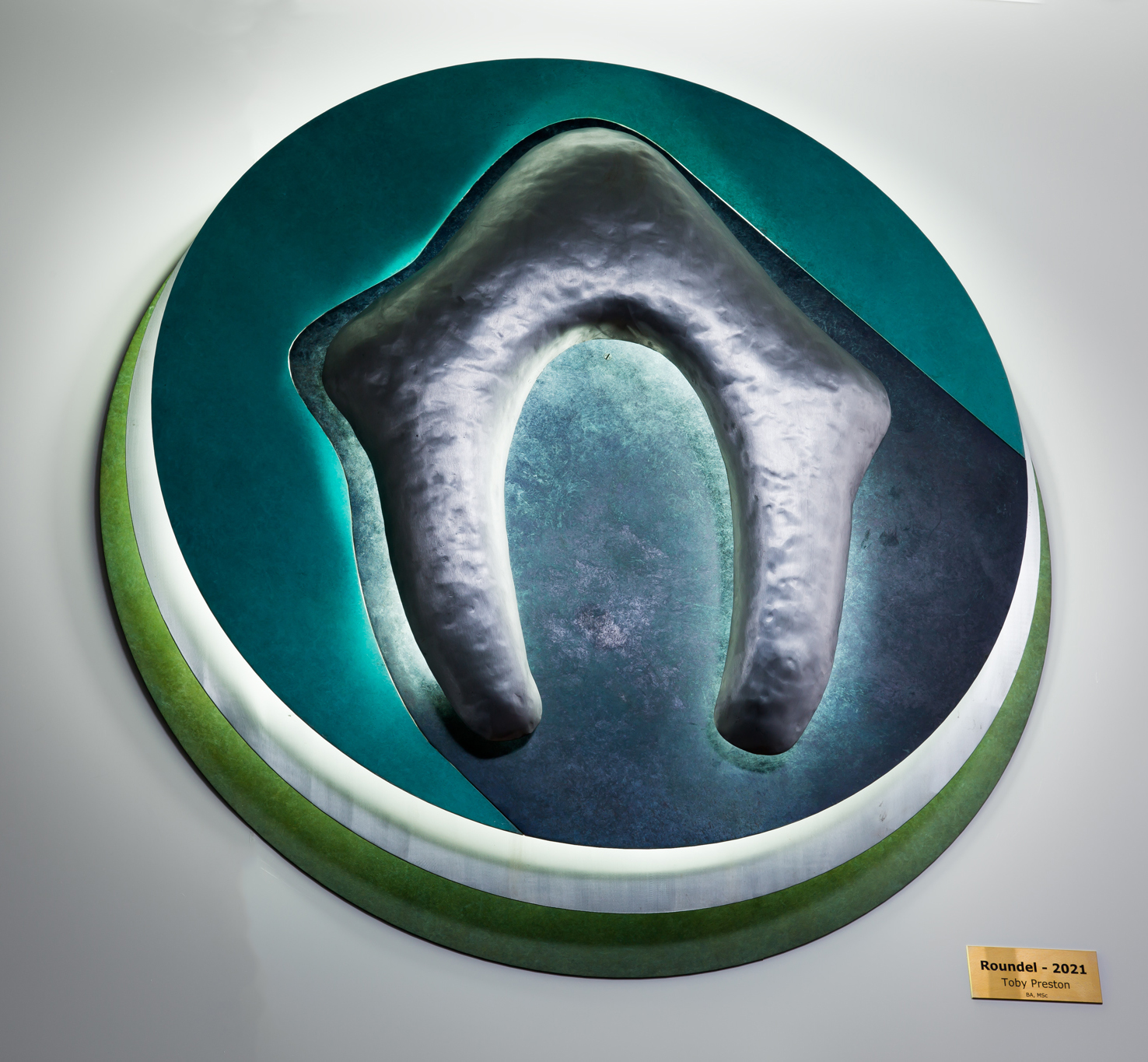
The Roundel is a unique artwork in anodised brass and hammered steel inspired by the VetDentist logo. The artist, Toby Preston, is a qualified architect currently working in interior fixtures and fittings and design. The internal lighting system creates different effects for the artwork.
Consulting Rooms
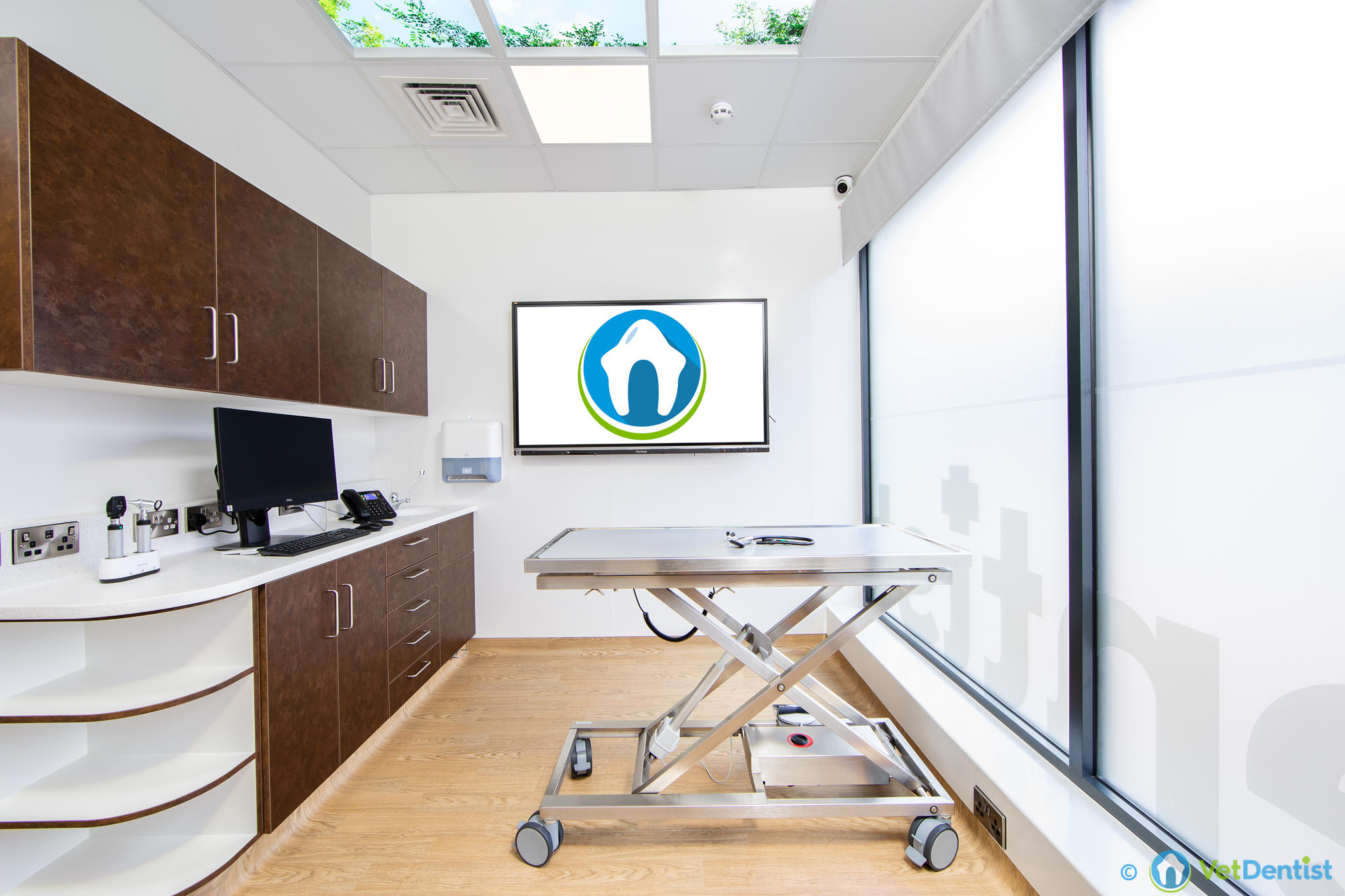
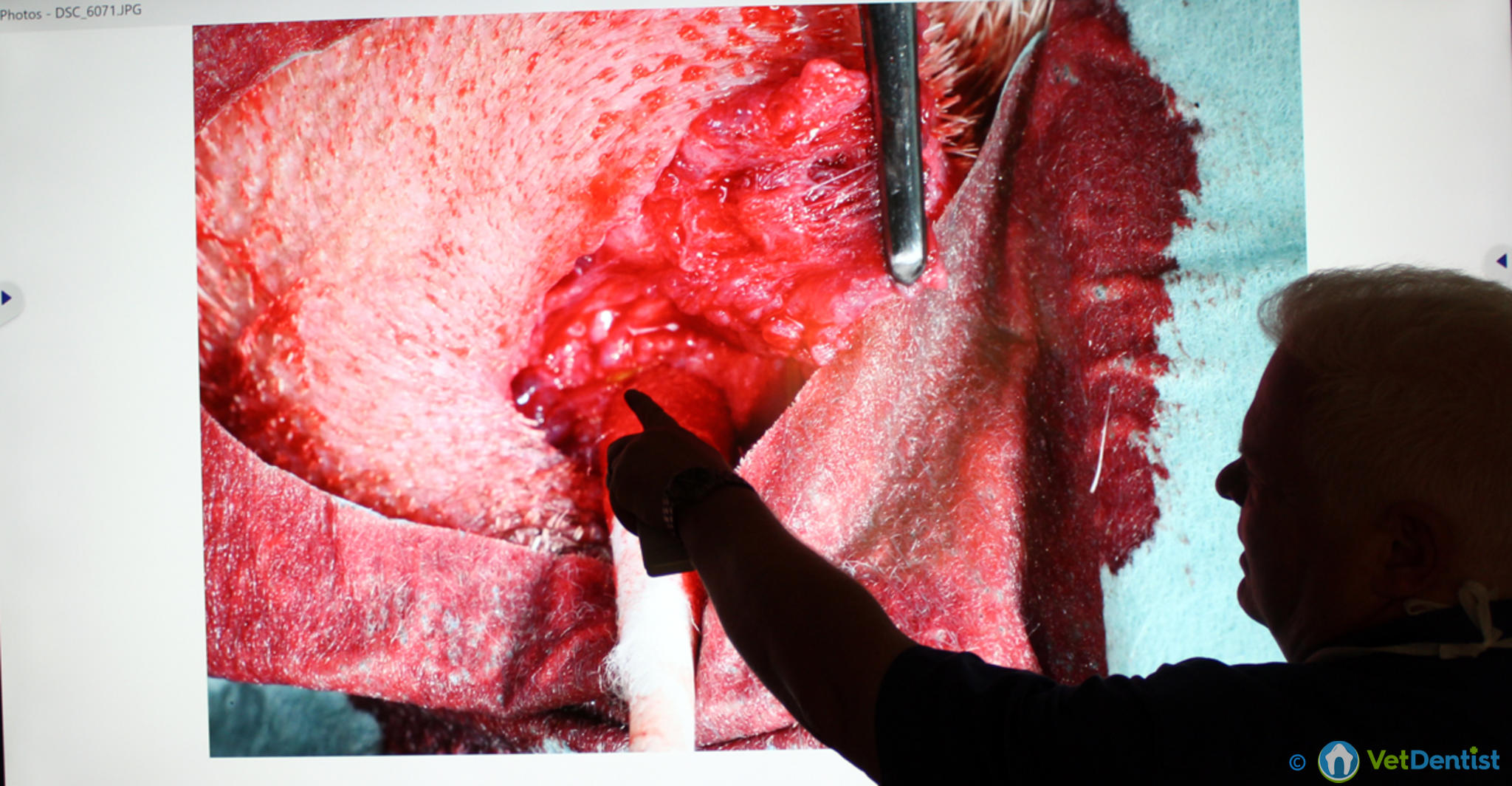
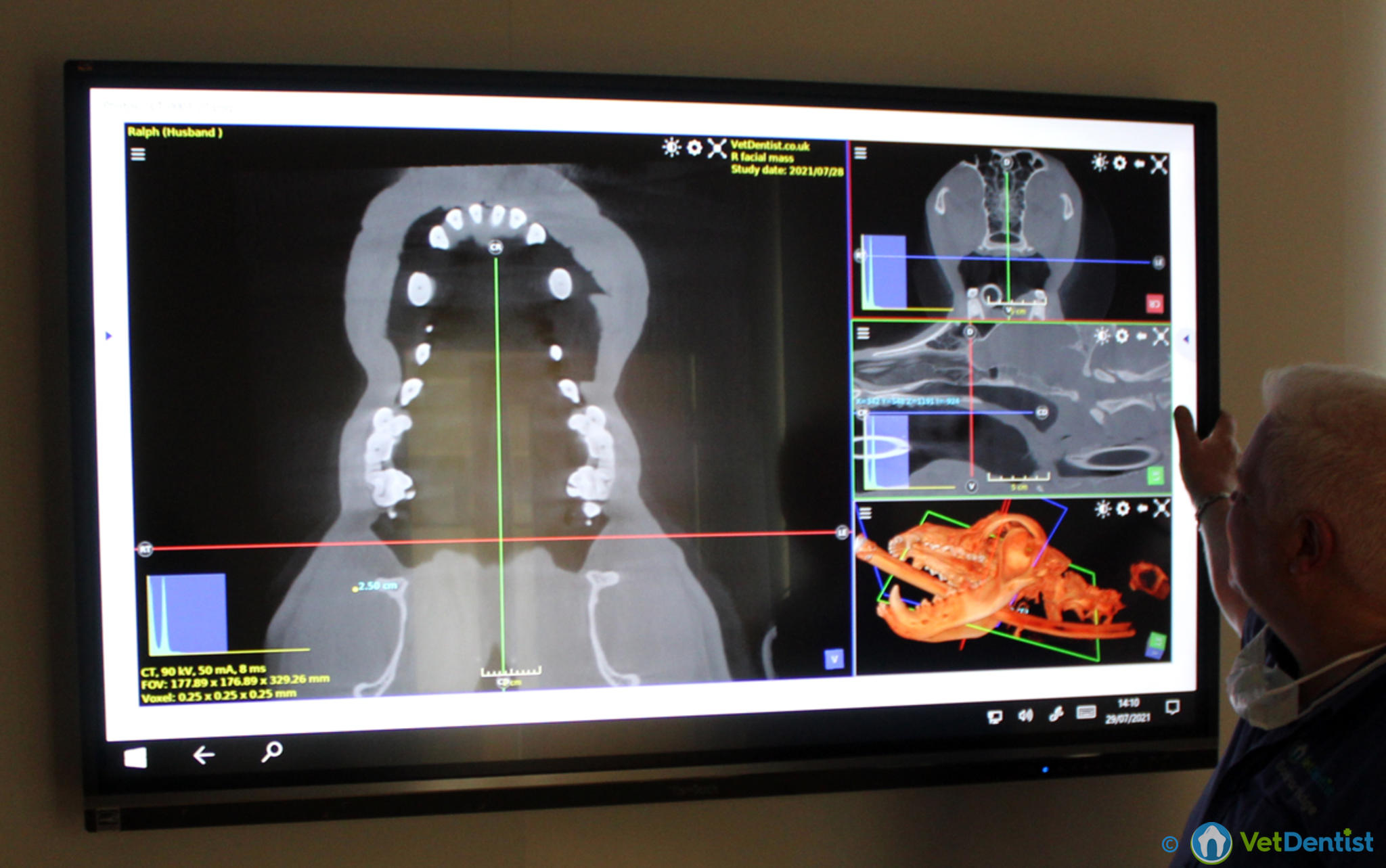
The consulting rooms are designed to be light and spacious, creating as relaxed an atmosphere as possible. LED Sky Panels have been used to give an impression of an open ceiling, with natural daylight. The examination tables are fully height adjustable, allowing patients to be comfortably examined. The tables also include weighing scales, helping to reduce stress for our patients and ensuring accurate drug dosing. Our computerised patient records are securely stored on the web, together with clinical images, laboratory reports, radiographs and CT scans. The large display screen allows patient images to be displayed and assists in client communication. The purpose built cabinetry also houses printers and scanners. Whilst we aim to be paper-light, we do like to be able to give clients a concrete estimate of costs to take home. The Corian worksurface blends into the sink creating a hygienic seal. Hands-Free paper towel dispensers also assist in maximising the clinic’s hygiene. Whiterock wall covering and Altro coved flooring has been used to provide a durable, hygienic, easily cleanable surfaces.
Eisner, Emily, Holmstrom EEH Dental Operatory
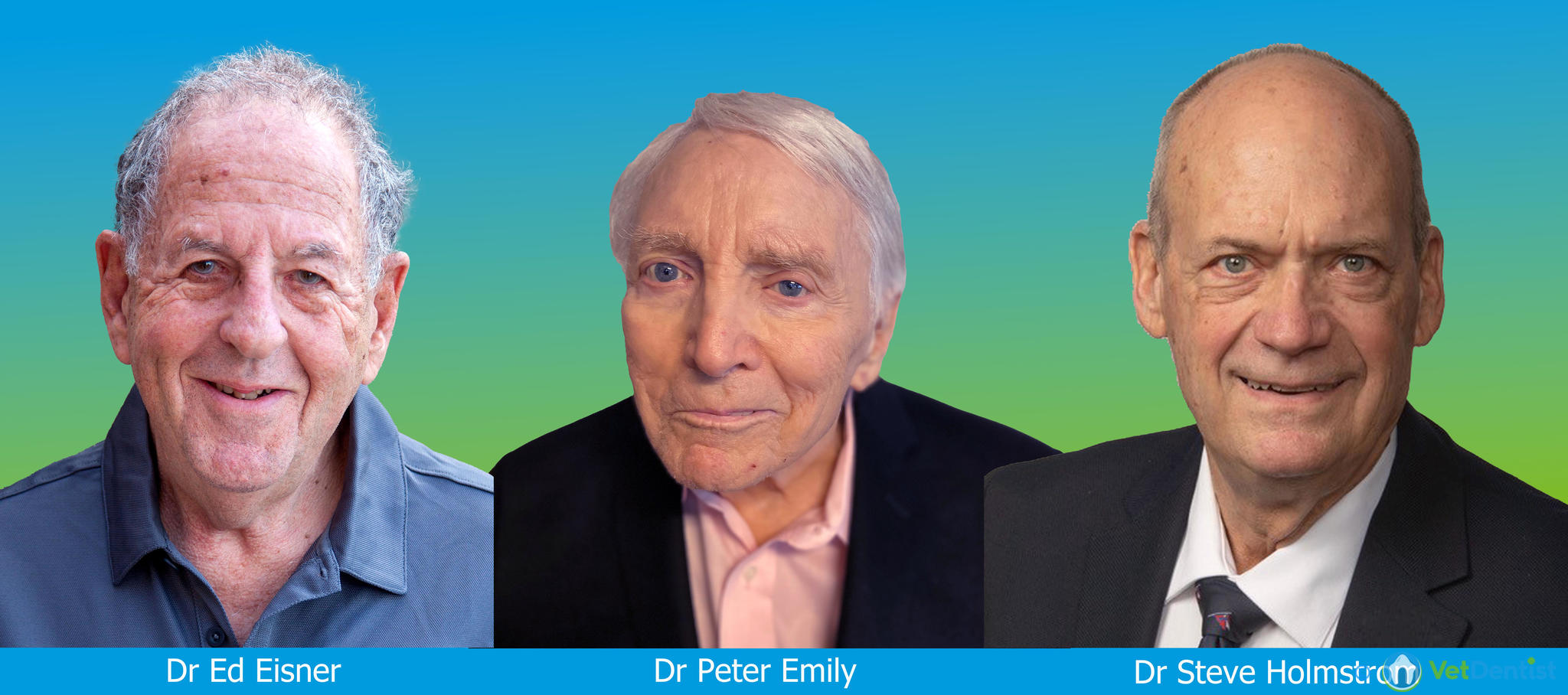
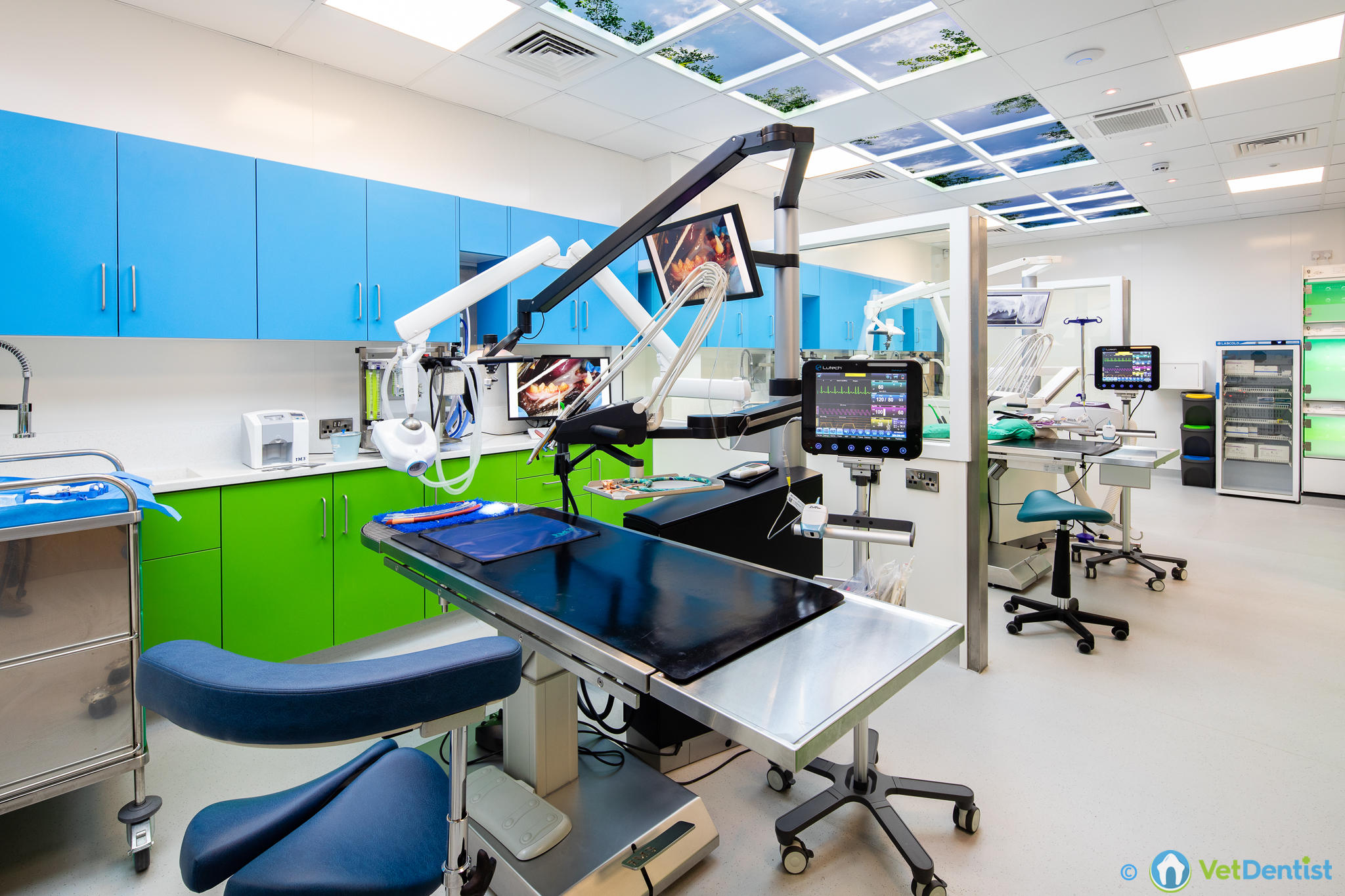
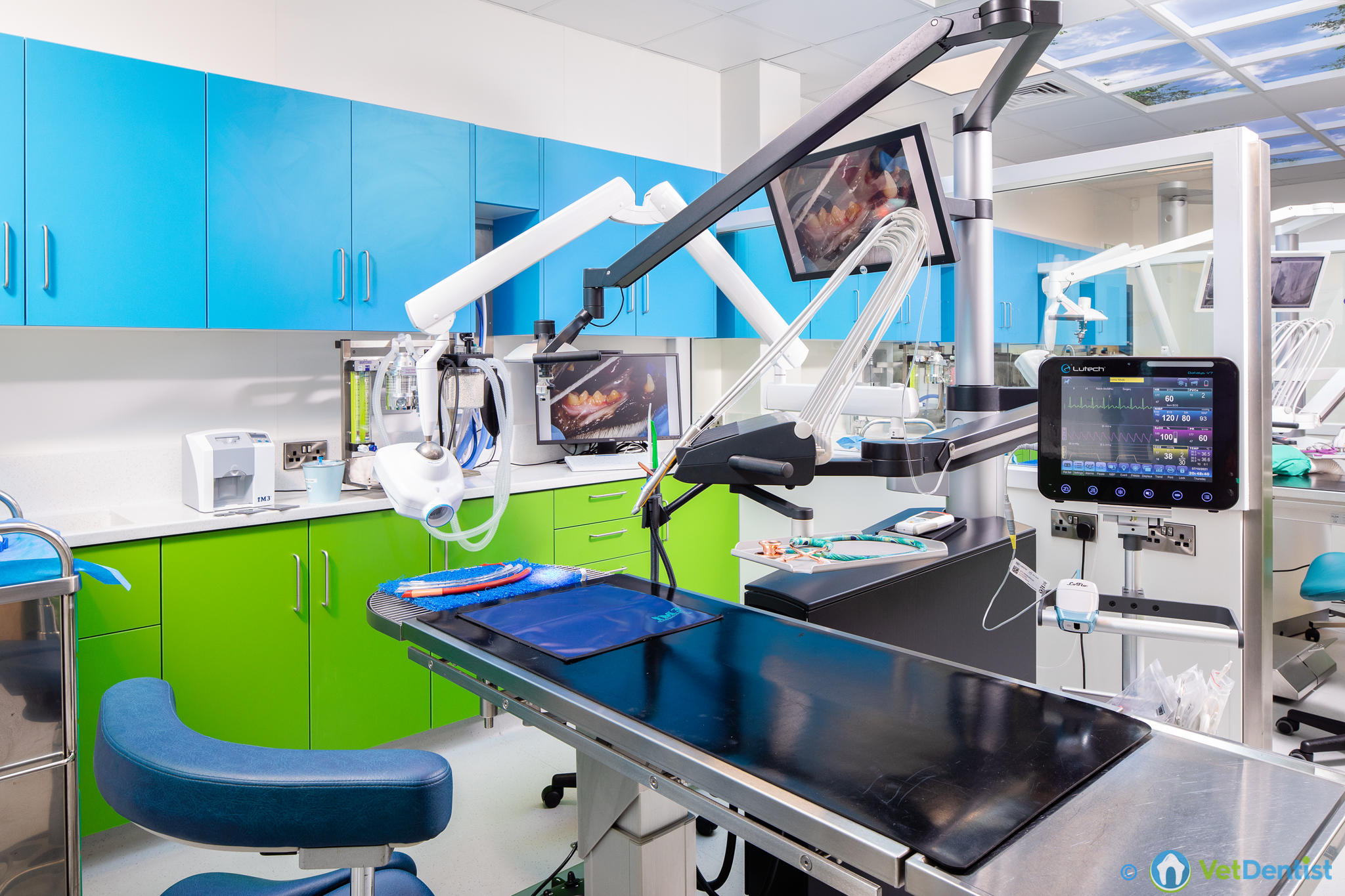
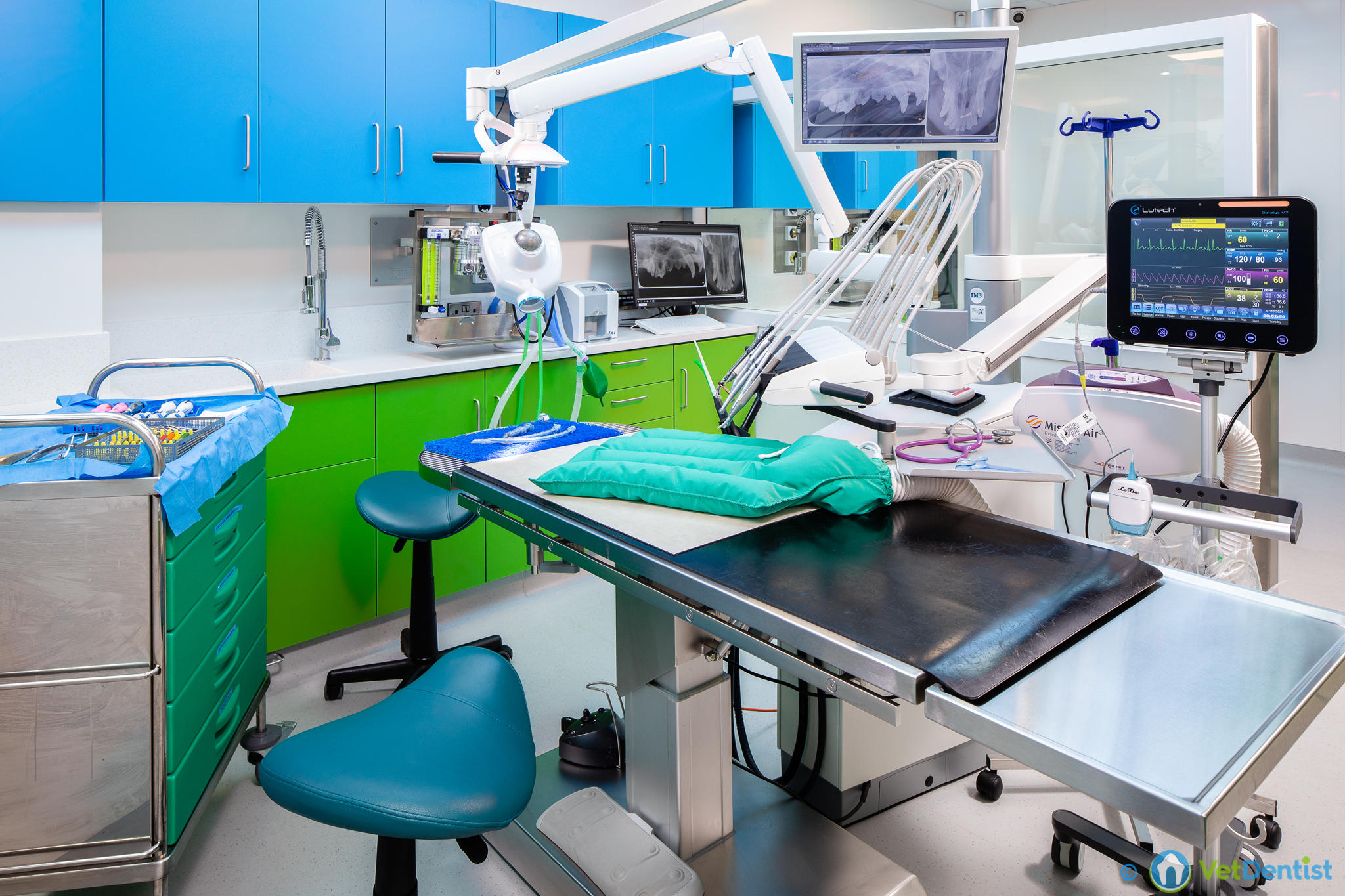

The Eisner, Emily, Holmstrom Dental Operatory is named after some of the founding giants of Veterinary Dentistry. Bob Partridge is pleased to call these leaders of the profession long-standing friends.
The design of the EEH Dental Operatory is a division into separate work area bays. However, unlike many designs, the EEH avoids the feeling and atmosphere of compartmentalisation, isolation and claustrophobia. The EEH incorporates very high ceilings, additionally LED Sky Panels create the impression of an open sky above. The lighting covers the range of true daylight – helping to decrease stress levels.
VetDentist has made the major investment into using lead glass dividers to physically separate the work areas, whilst maintaining a visual integrity of the whole operatory. We understand that these are the largest glass panels that have been installed in Europe and possibly worldwide. The result is that the EEH operates as a single unit, with team members working collaboratively, allowing easy supervision and support – however staff safety from x-ray radiation is ensured.
Whilst the lead glass panels were one of the largest single costs of the refurbishment – the benefits are well worth the investment.
Custom built cabinetry from a dental specialist company, provides storage and working spaces for the procedures. The cabinetry was selected to tie in with the colour scheme of the logos and is an almost perfect pantone match.
Dr Ed Eisner
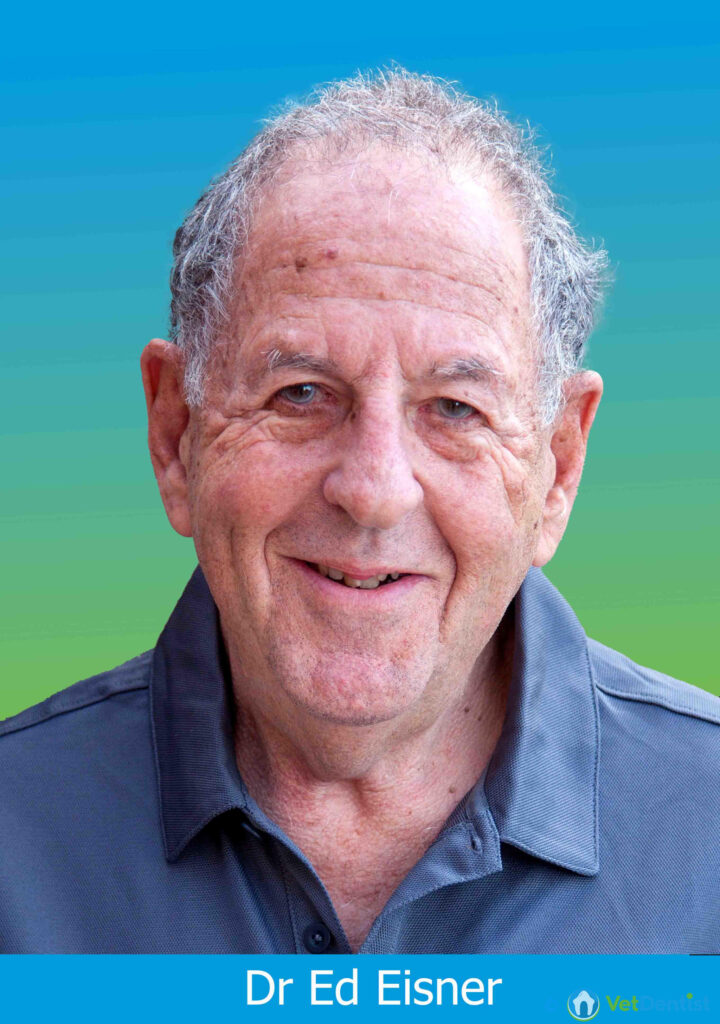
Dr. Eisner received his AB and DVM degrees from Cornell in 1960 and 1964, is a Diplomate and Past President of the American Veterinary Dental College, and is a Founding Certificate Holder in Zoo and Wildlife Dentistry.
Dr. Eisner is also a Past President of the Academy of Veterinary Dentistry., and a past president of the Colorado State Board of Veterinary Medicine. Dr. Eisner retired, after fifty-six years, from veterinary practice in July, 2020, where he was Director of Dental Services at the VCA Animal Specialty and Emergency Center, a referral and emergency practice in Highlands Ranch, Colorado.
Dr. Eisner’s referral practice had been serving the Rocky Mountain Region since 1983. He served as the initial president of the Peter Emily International Veterinary Dental Foundation from 2005 through 2014 and continues to be active on its Board of Directors and as chair of its Veterinary Dentists Without Borders program.
Dr Peter Emily

Dr. Emily is an accomplished human and veterinary dentist with a career spanning over 50 years. He received his Doctor of Dental Surgery at Creighton University, Omaha Nebraska and his Certificate of Periodontology from the University of Pennsylvania. Dr. Emily later went on to receive his post-graduate certification in Pediatric Dentistry, Endodontics, Oral Surgery and Restorative/Prosthetic Dentistry from the Dental Division of Denver General Hospital. Dr. Emily is an Honorary Diplomate of the American Veterinary Dental College and the Academy of Veterinary Dentistry. He has previously held the position of Faculty Affiliate of Animal Dentistry at Colorado State University, School of Veterinary Medicine, is a past Dental Faculty Affiliate at the University of Missouri at Columbia, and has worked as Director of Exotic Animal Dentistry at the Denver Zoological Gardens. Dr. Emily has also worked extensively on the biomechanics of movement and kinesiology. Dr. Emily is past president of the American Veterinary Dental Society (AVDS). When the AVDS wanted to become a board specialty, Dr. Emily was one of four – himself and three veterinarians – who approached the specialty board to understand the requirements for board recognition. Dr. Emily was one of three – with two veterinarians – who developed and administered the initial Academy of Veterinary Dentistry entrance exams. Later, the three veterinarians and Dr. Emily developed and administered a 3-part exam process for acceptance into the College of Veterinary Dentistry, and this same 3-part format is still used today. For years he helped the animals of Siegfried and Roy. The Denver Zoo has also called upon Dr. Emily to perform repairs on the beak on hornbills and toucans, as well as caring for kangaroos, wild dogs, polar bears, grizzlies and orangutans, to name but a few of the many species on which Dr. Emily works. In the early days, many zoos did not have the proper facilities for working on exotic animals, so improvisation was key. For example, at the Denver Zoo, Dr. Emily improvised, using the hydraulic lift of a pickup truck to perform a surgical root canal on a polar bear. Dr. Emily has written and presented extensively including author and co-authorship of three veterinary dental textbooks and multiple dental publications and manuscripts. He has lectured extensively on all phases of animal dentistry for over 20 years to veterinary groups and dog clubs throughout the USA, Europe, Australia, New Zealand, China, Brasil and Japan. In addition, he has conducted extensive research and development of veterinary dental medicaments and oral health aids.
Dr Steve Holmstrom

Dr. Holmstrom was certified by the American Veterinary Dental College (AVDC) in 1989. Dr. Holmstrom earned his DVM degree from the University of Missouri in 1972. He is the past president of the AVDC, Academy of Veterinary Dentistry, American Veterinary Dental Society, and two-times president for the Peninsula Veterinary Medical Association. Dr. Holmstrom has consulted for the National Aeronautics and Space Administration Ames Research Center, University of California at Berkeley’s Office of Lab Animal Care and numerous pharmaceutical and dental companies. He has held several professional offices in committees and colleges and has received several awards including the AAHA Far West Practitioner of the Year and the University of Missouri Alumnus of the Year. He has written numerous articles and publications, including a textbook on veterinary dental techniques, now in its third edition, and published in Japanese, Spanish and Italian. Dr. Holmstrom has also written a textbook for veterinary technicians and is the Guest Editor for two editions of Veterinary Clinics of North America. He speaks frequently on veterinary dentistry at major national and international meetings. For recreation Dr. Holmstrom is an underwater SCUBA Instructor, Ham radio operator, motor home enthusiast, and avid sailor. He is a past Commodore of the Sequoia Yacht Club in Redwood City.
Cat Condo Kennels
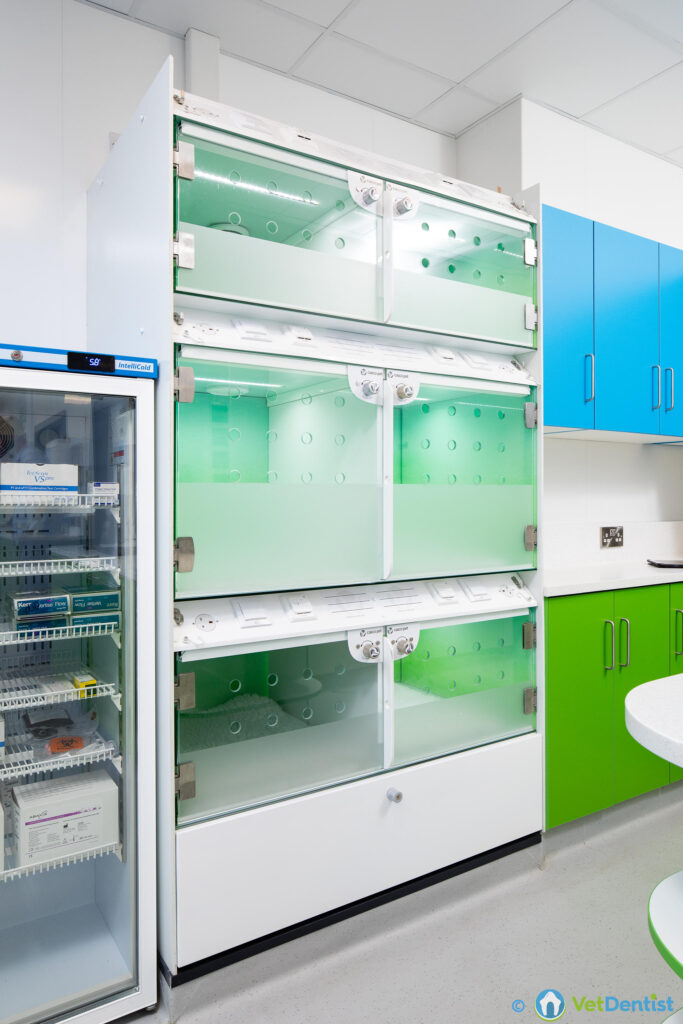
The Cat Condo kennels are specially built to meet or exceed the Gold standards of International Cat Care. They are designed to minimize stress for feline patients. The green-coloured glass has been shown to have a calming effect, the “smoked” bottom half allows cats to “hide” and increases their sense of security. Each kennel has soft, warm, hygienic bedding. These are laundered using our dedicated industrial cleaning machine between patients to minimize any infection transfer risks. We also use little “escape pods” for very nervous patients. The kennels are individually heated with thermostatically controlled units built into the floors. The lighting levels can be adjusted to suit patient needs. Each kennel has its own separate extraction ventilation system. This minimizes odours – helping to avoid stressing neighbouring cats, but also helps prevent spread of any viruses between patients. It also helps keep the practice smelling fresh! The kennels are easily kept under observation by the team and are designed for easy cleaning to maximize hygiene.
Dog Ward

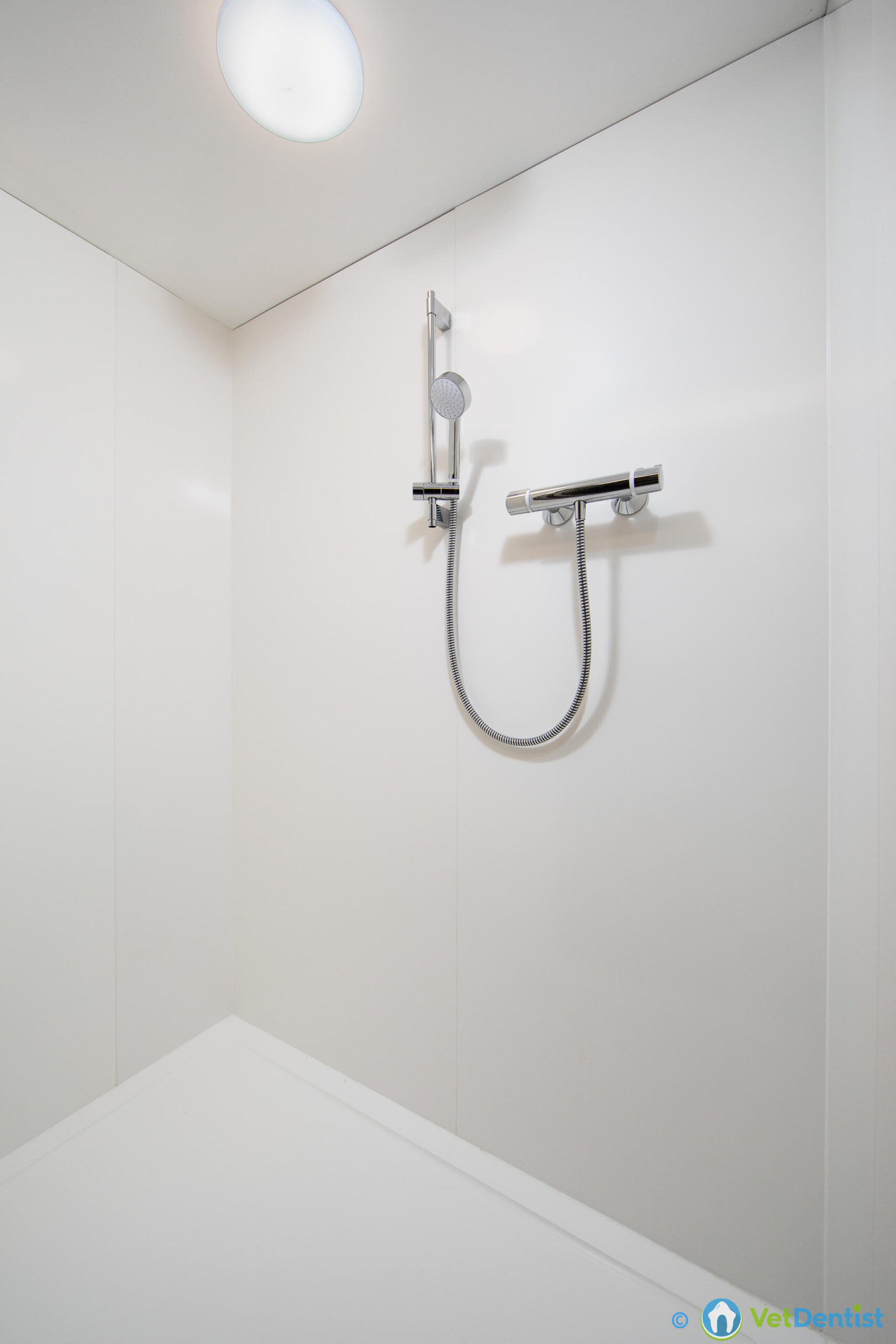
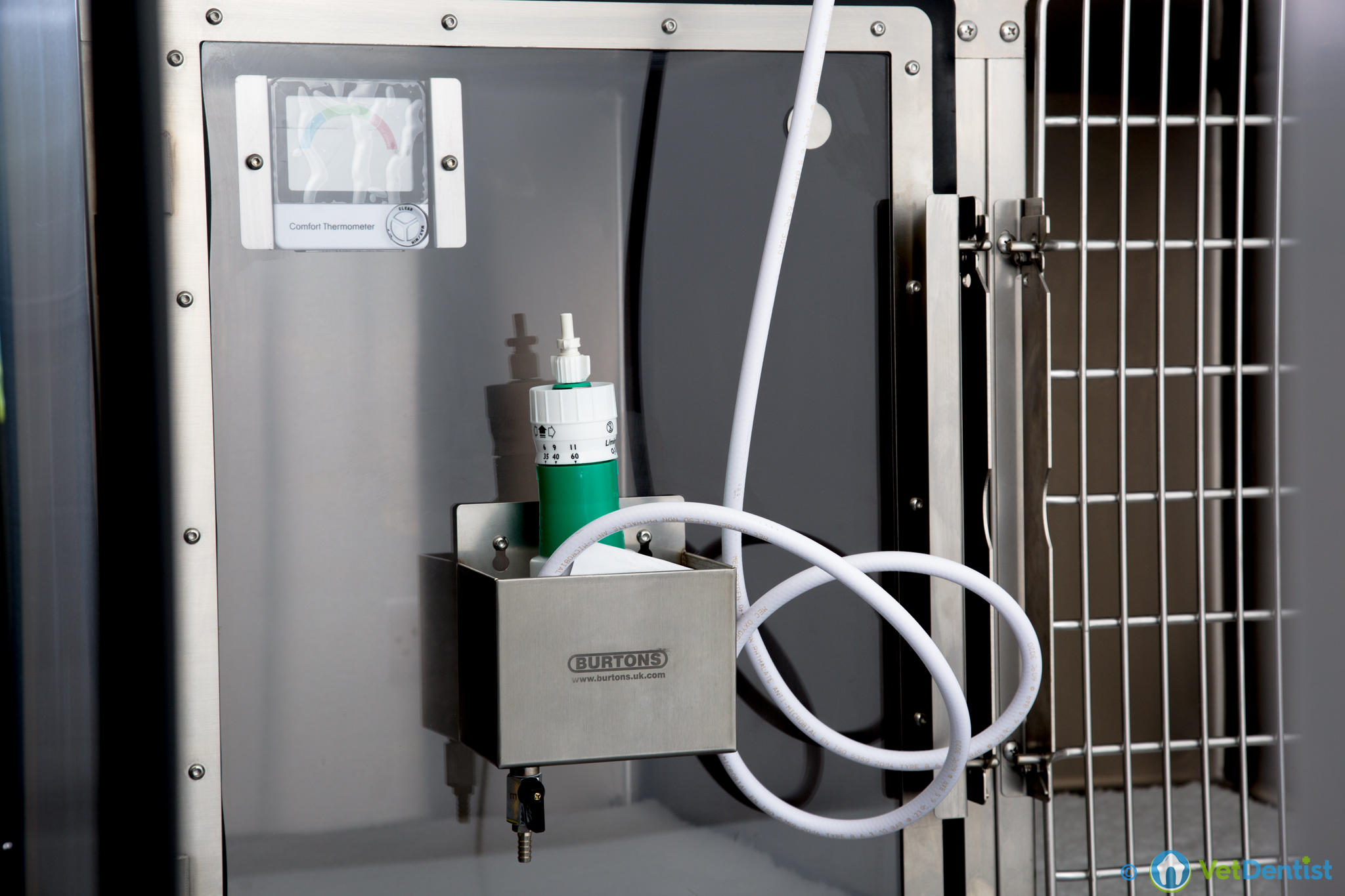
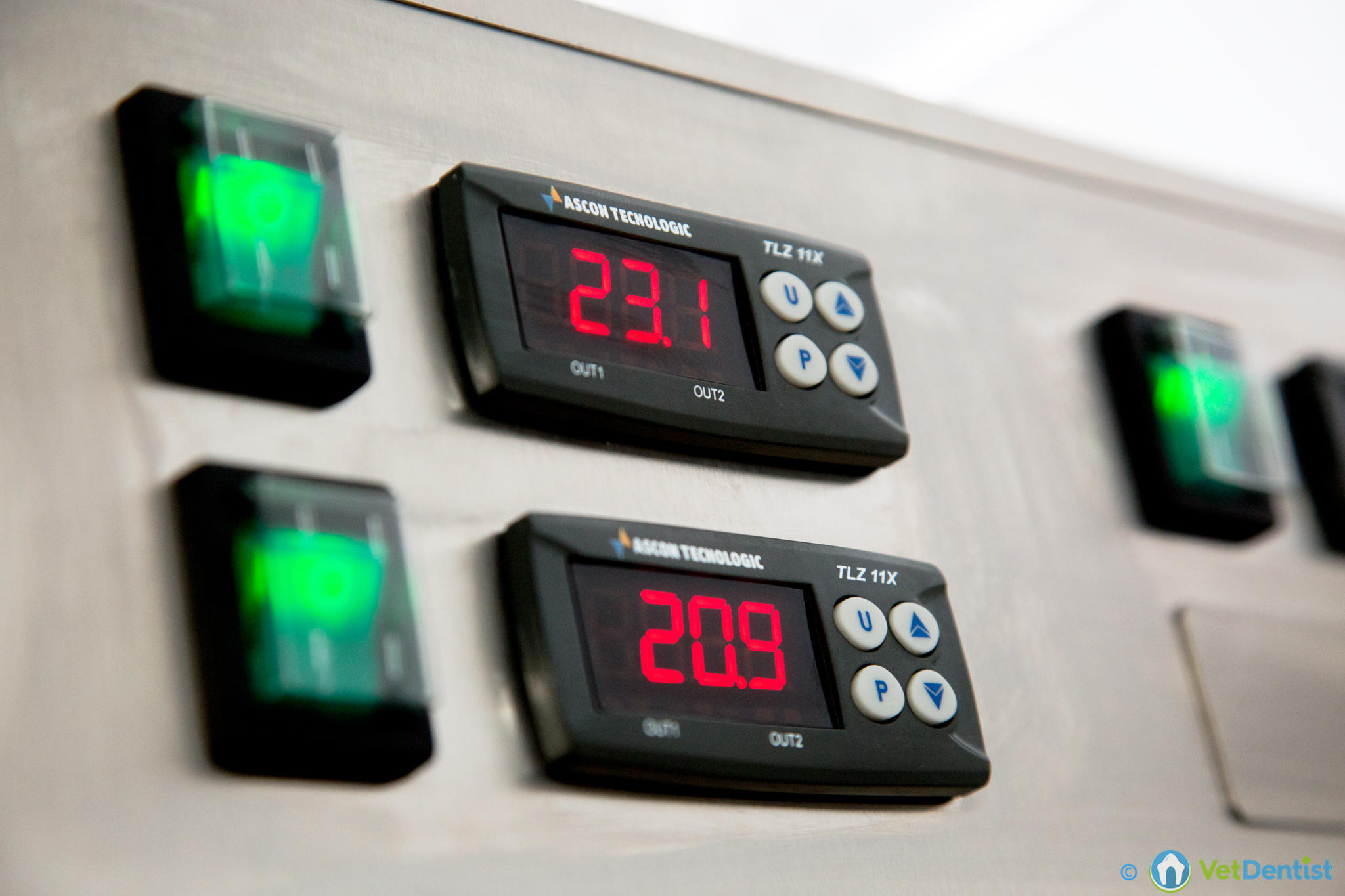
In addition to our purpose built walk-in kennel, there are two banks of dedicated stainless-steel kennels. These are designed for efficient cleansing and hygiene between patients. Each kennel has warm, hygienic soft bedding. These are laundered using our dedicated industrial cleaning machine between patients to minimize any infection transfer risks. The kennels are individually heated with thermostatically controlled units built into the floors. Sound deadening is built into the kennel structure to help decrease stress. Some of the kennels are equipped with an oxygen tent. This allows pre-oxygenation of high-risk patients prior to anaesthesia, it can also assist recovery of patients. Preoxygenation is also always used when anaesthetising “small furries”, rabbits etc. The large “walk-in” kennel includes a shower facility for any patient that needs a wash & brush up. In addition to close supervision by the nursing staff, CCTV is also available for patient monitoring.
Procedural Gas Supply Control
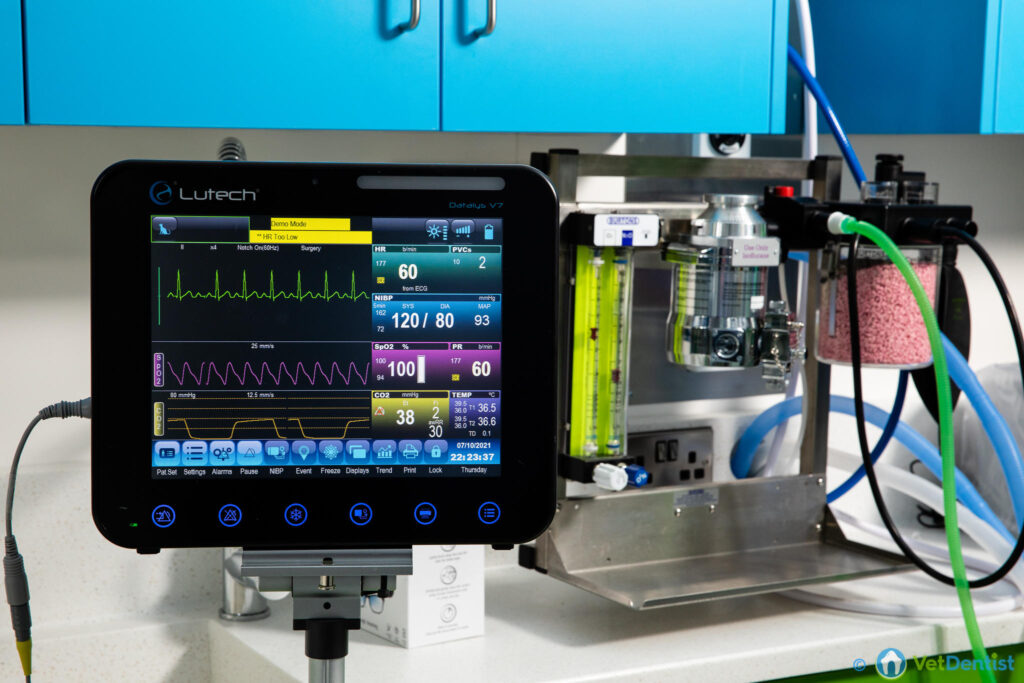
The “StarShip Enterprise” Display panel is sited in clear view in the EEH Dental Operatory. This controller links to the Plant Room and the supplies of anaesthetic gases, scavenging, surgical air supplies and the oxygen concentrator. The system monitors the pressures within each of the pipelines and will automatically power-up the units should pressure fall. In the unlikely event that the units are unable to restore pressures within the oxygen supply, or the surgical air – then the control unit will automatically switch to the reserve gas cylinder supplies located outside. As a further fail safe – should the cylinder run low – then the alternate reserve cylinder would be brought into use. All of this is done automatically. These are the steps we have taken to ensure security of gas supplies – a large capacity reserve within the pump, a very large storage container outside, a reserve emergency supply cylinder of gas, a second additional reserve gas safety cylinder. Effectively a belt, a pair of braces, a second belt, and a second pair of braces! These measures are designed to ensure we can operate on patients as safely as possible.
Piped Gas Supplies




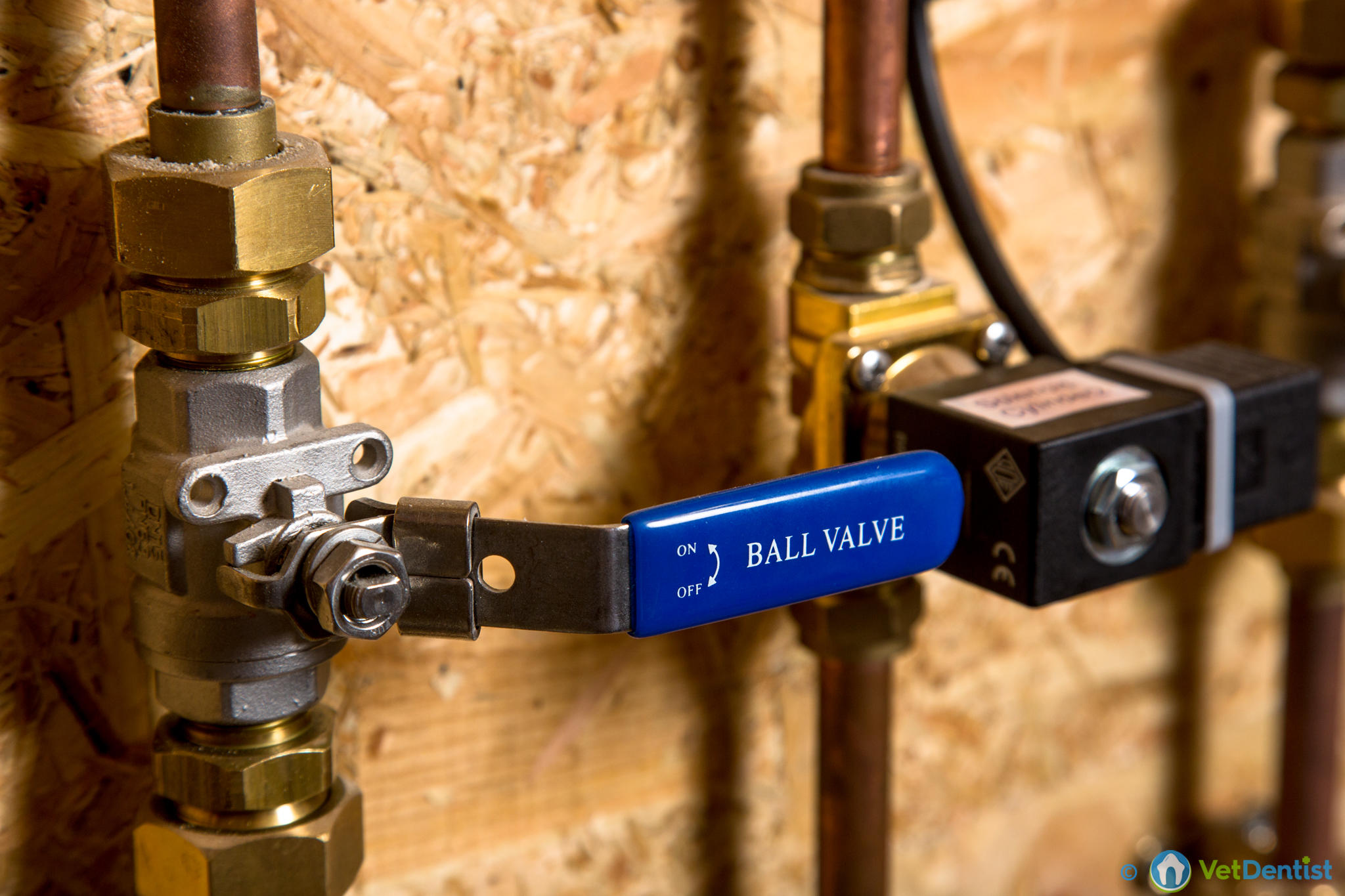
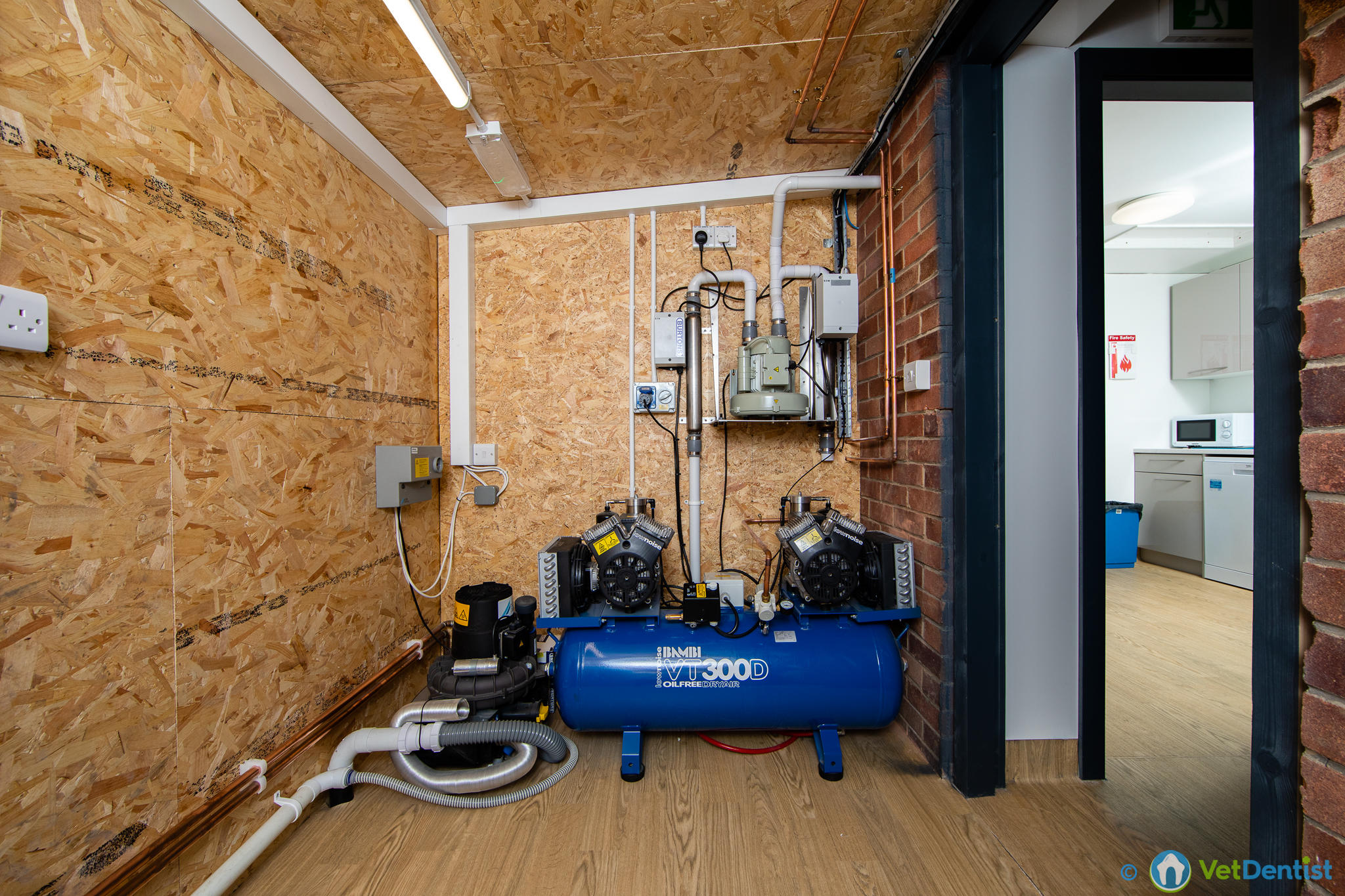


The piped gas system comprises many metres of securely soldered pipes within the fabric of the building. Delivered to each operative station are oxygen, nitrous, and surgical compressed air supplies. Additionally, there is a scavenging system for expired anaesthetic gases and pipework for surgical (dry) suction.
Anaesthetic Supply Heads
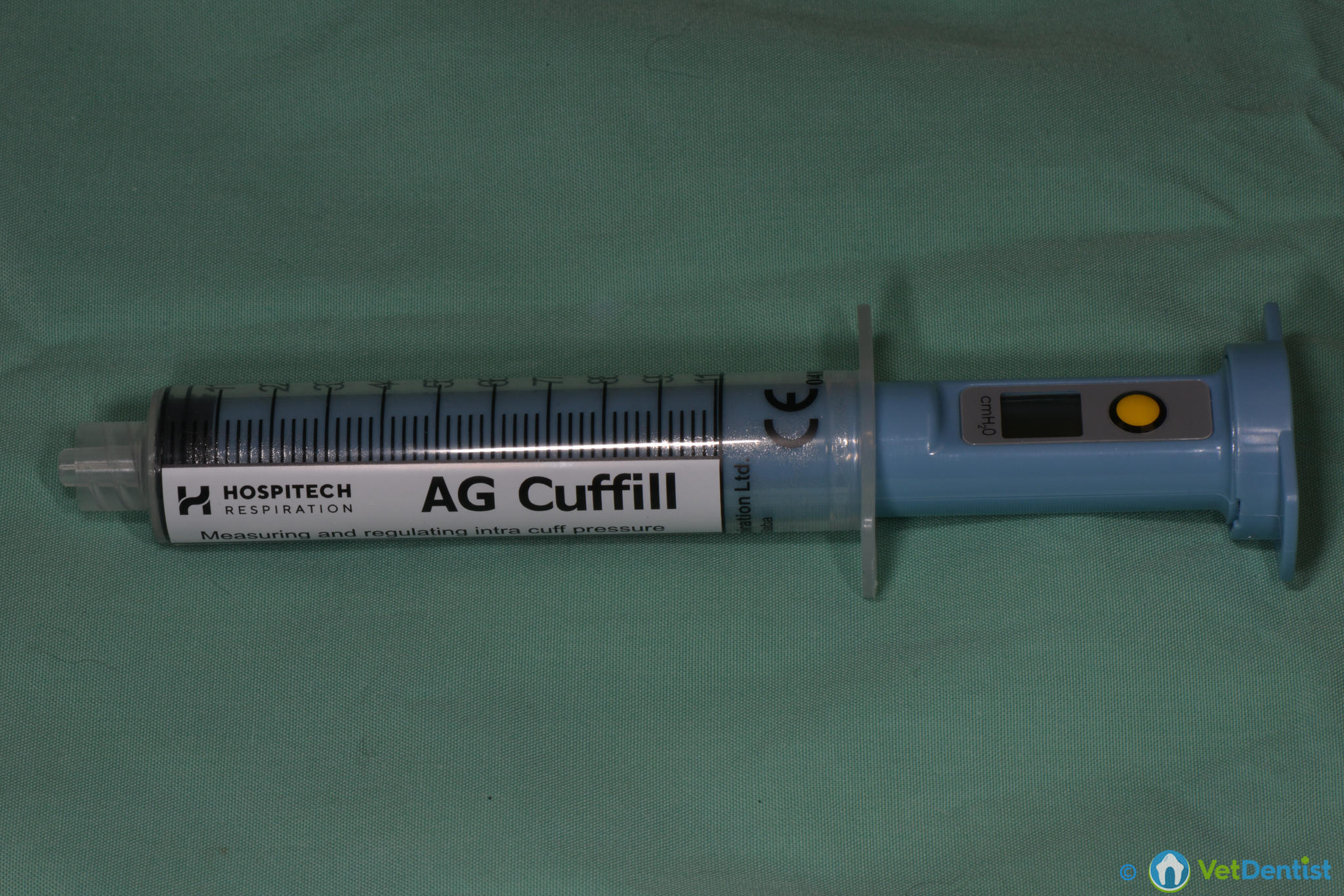
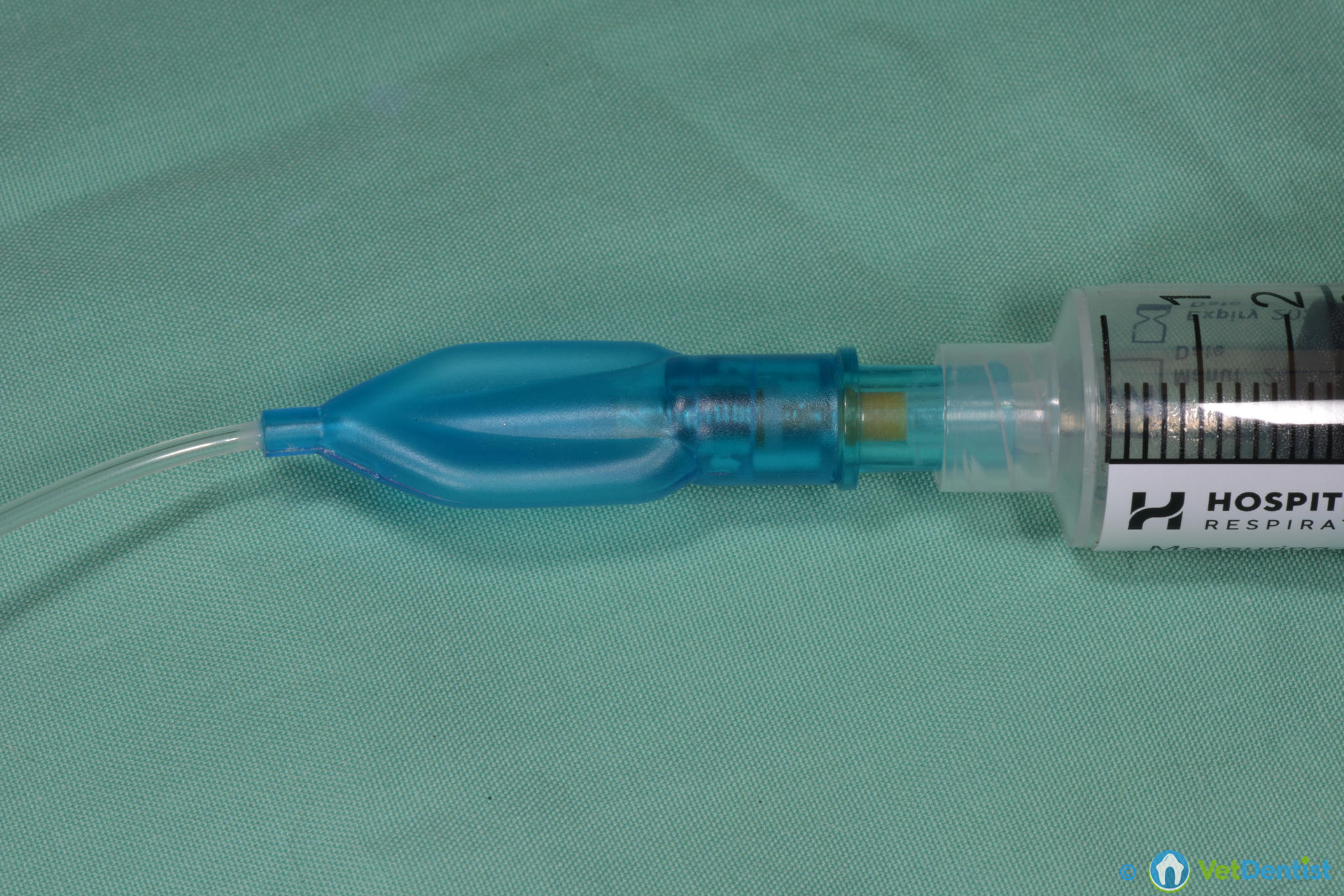
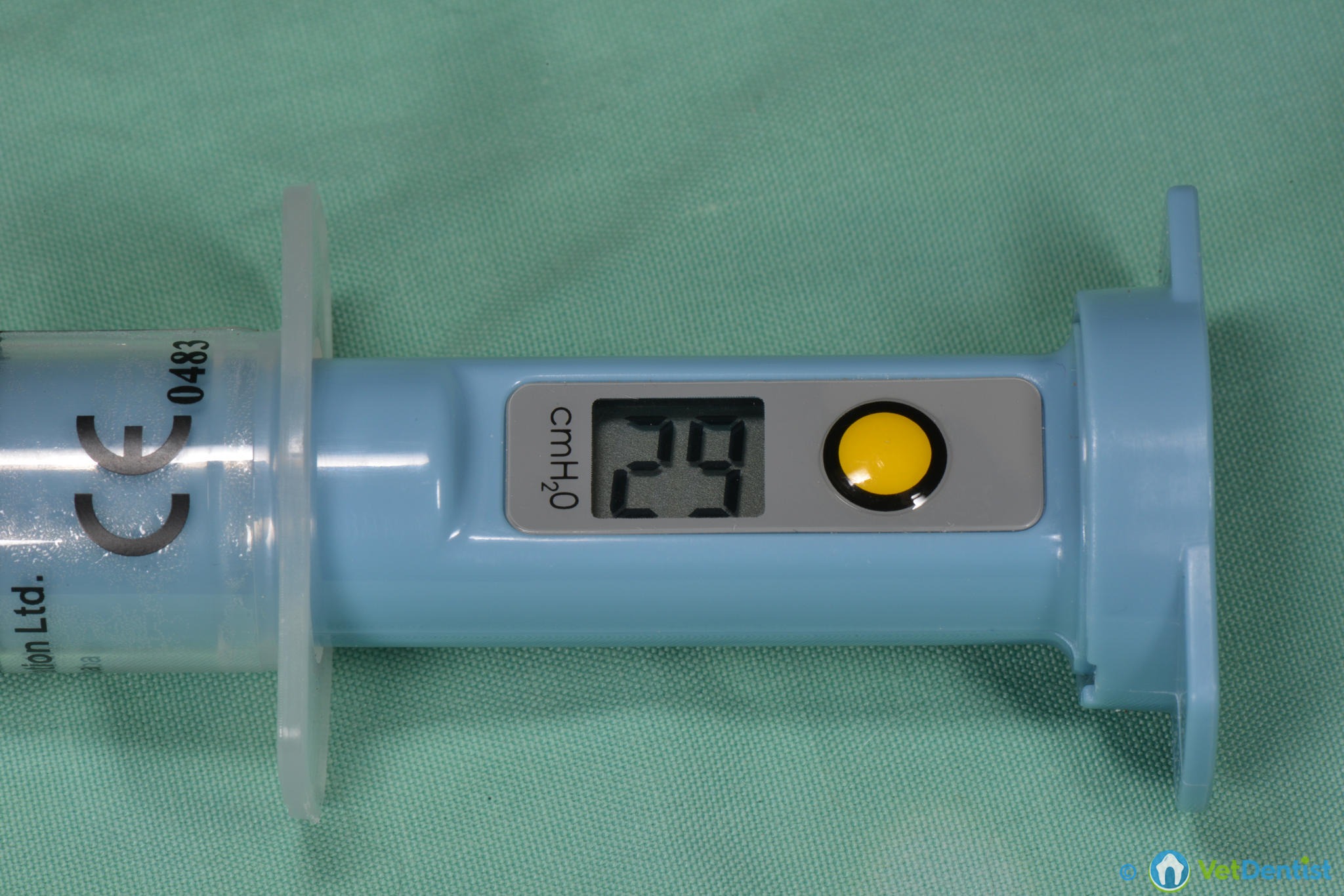
We use gas for maintenance of the anaesthetic for our patients – as this gives us the most flexible control. A variety of different circuits and soft endo-tracheal tubes are used to suit each patient. A special pressure sensitive inflator is used to inflate the “cuff” that seals the tube in the airway. This helps prevent leakage of anaesthetic gases – but avoids any danger of pressure damage to the sensitive lining of the trachea.
Waste Gas Scavenging
The anaesthetic scavenging system actively sucks waste gases away from our patients and vents them to the external atmosphere. This helps avoid any danger to staff or patients from inadvertent inhalations. The practice has always worked on the basis of providing the highest possible level of safety.
Ventilation and Air-Conditioning Systems
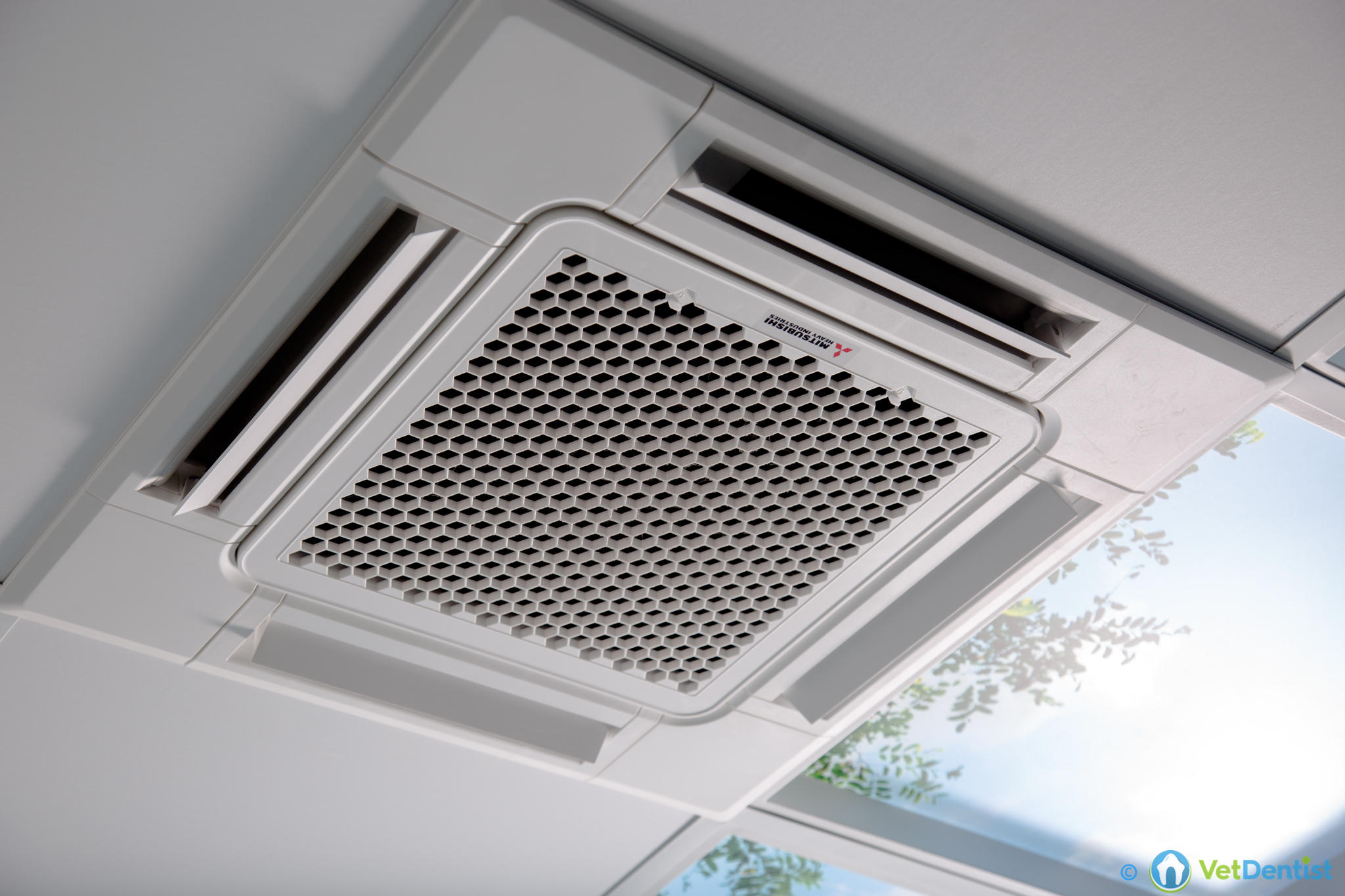
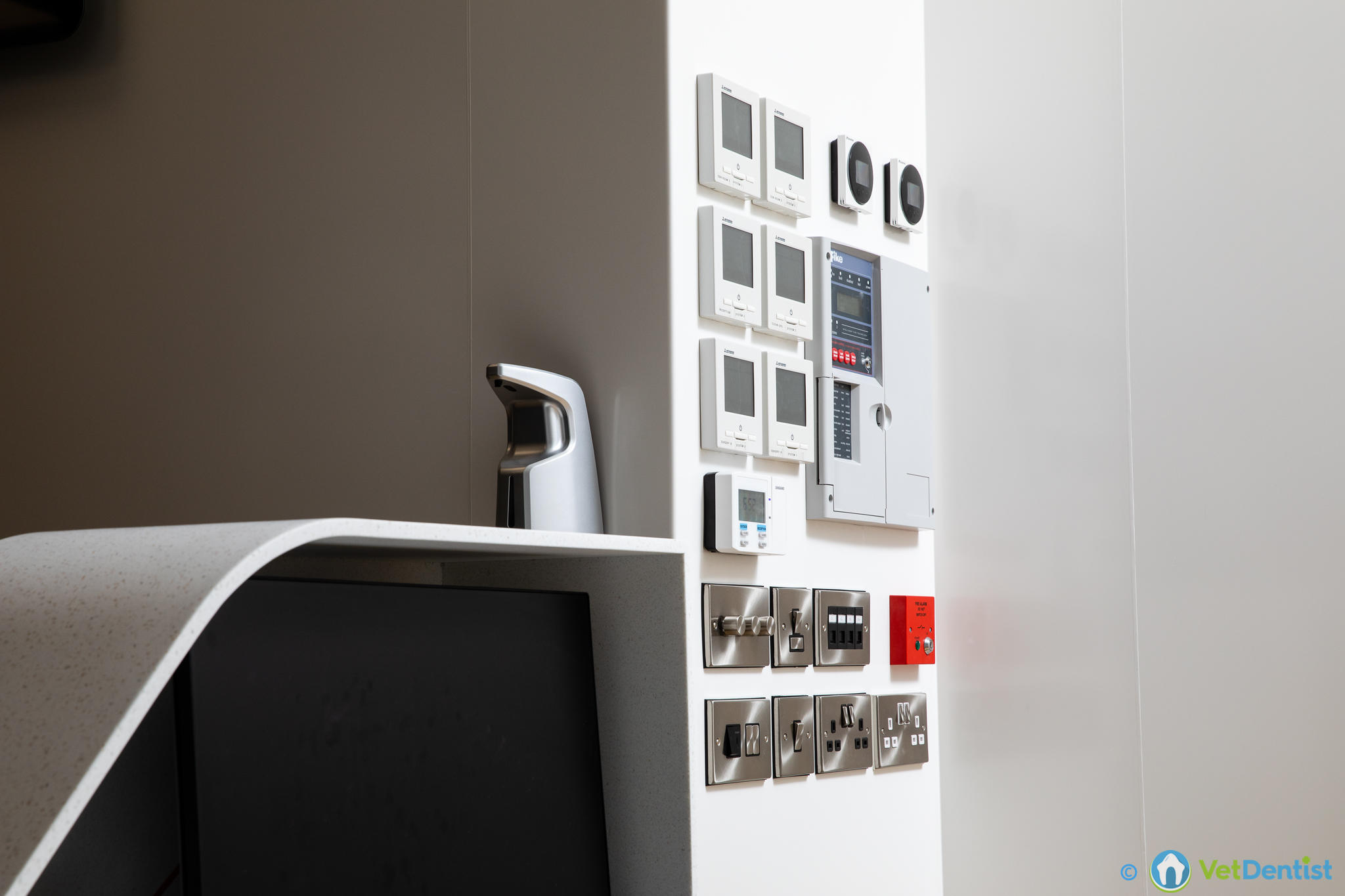


Air Conditioning is installed throughout the building. Air quality is one of the best measurements of a good working environment. The units ensure that the climate is controlled to provide the best working conditions for staff and optimal conditions for our patients. The ventilation system also extends throughout the premises. Whilst providing fresh air the system additionally provides suitable airflow around the dental operatory to minimize risks to staff. The recommendations for human dental practice regarding air flow rates for COVID have also been followed – providing additional security for staff and clients. Centralising the controls helps to minimise our carbon footprint. HEPA air filtration helps to minimize the possibility of cross infections. A heat exchange system helps minimize our carbon footprint, by using the heat (or cooling) of extracted air to adjust the temperature of incoming air.
LED Sky Panels
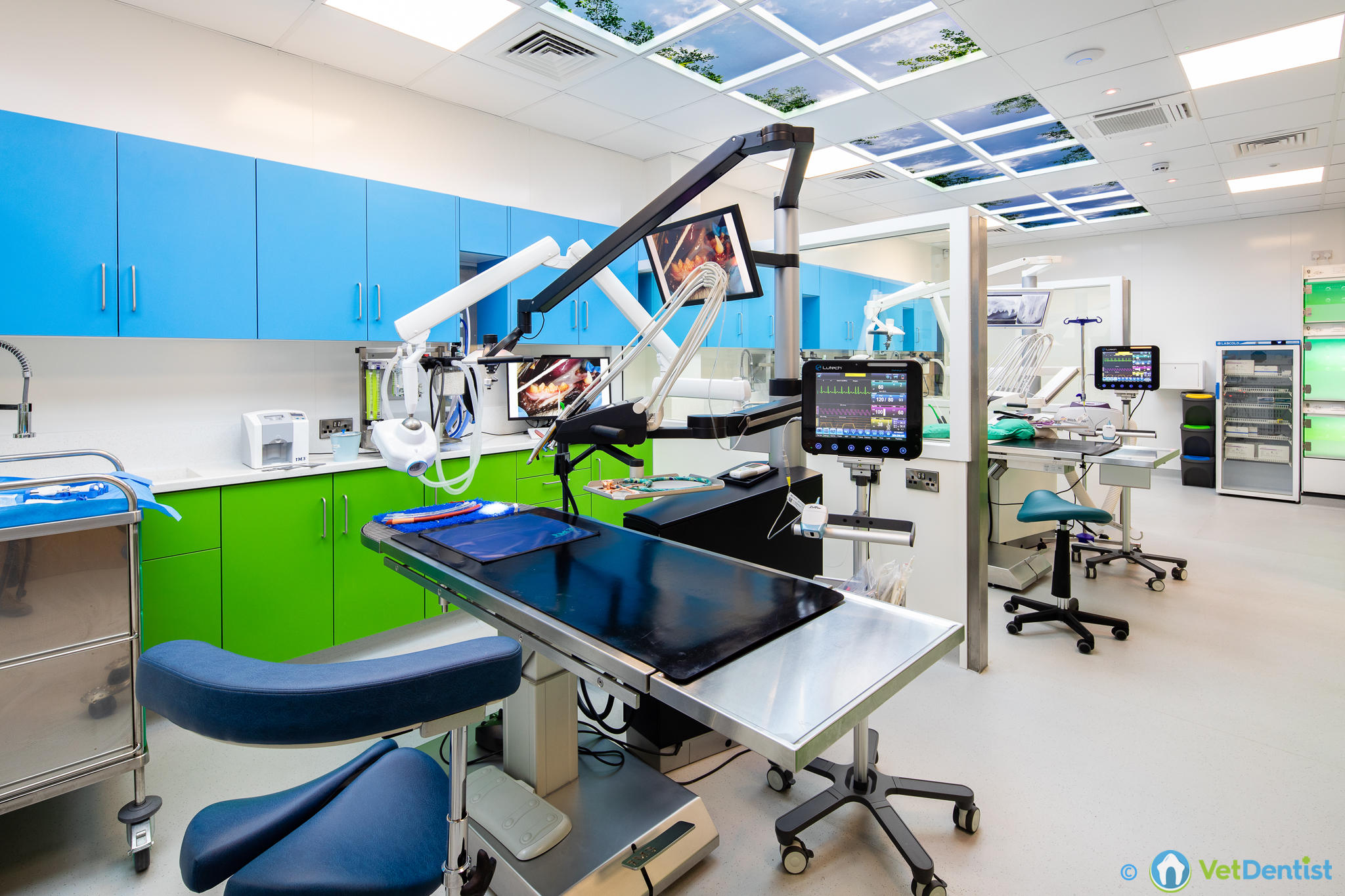

The LED Sky panels were specially designed for VetDentist. They bring the warmth of a summer day sky into the heart of the practice. By using the most modern edge light technology and a full colour printing process, with fade resistant inks; the feeling of an open outlook is present throughout. This has proven benefits in terms of helping to combat seasonal affective disorder, but also helps instil an aura of calm for the team and patients alike. It can be a little disconcerting to look up at a sunny sky when you have just come in from the rain – but all of the team appreciate the mood enhancement a sky view provides. For more information see http://your-visualite.co.uk/
Pro X Dental Unit

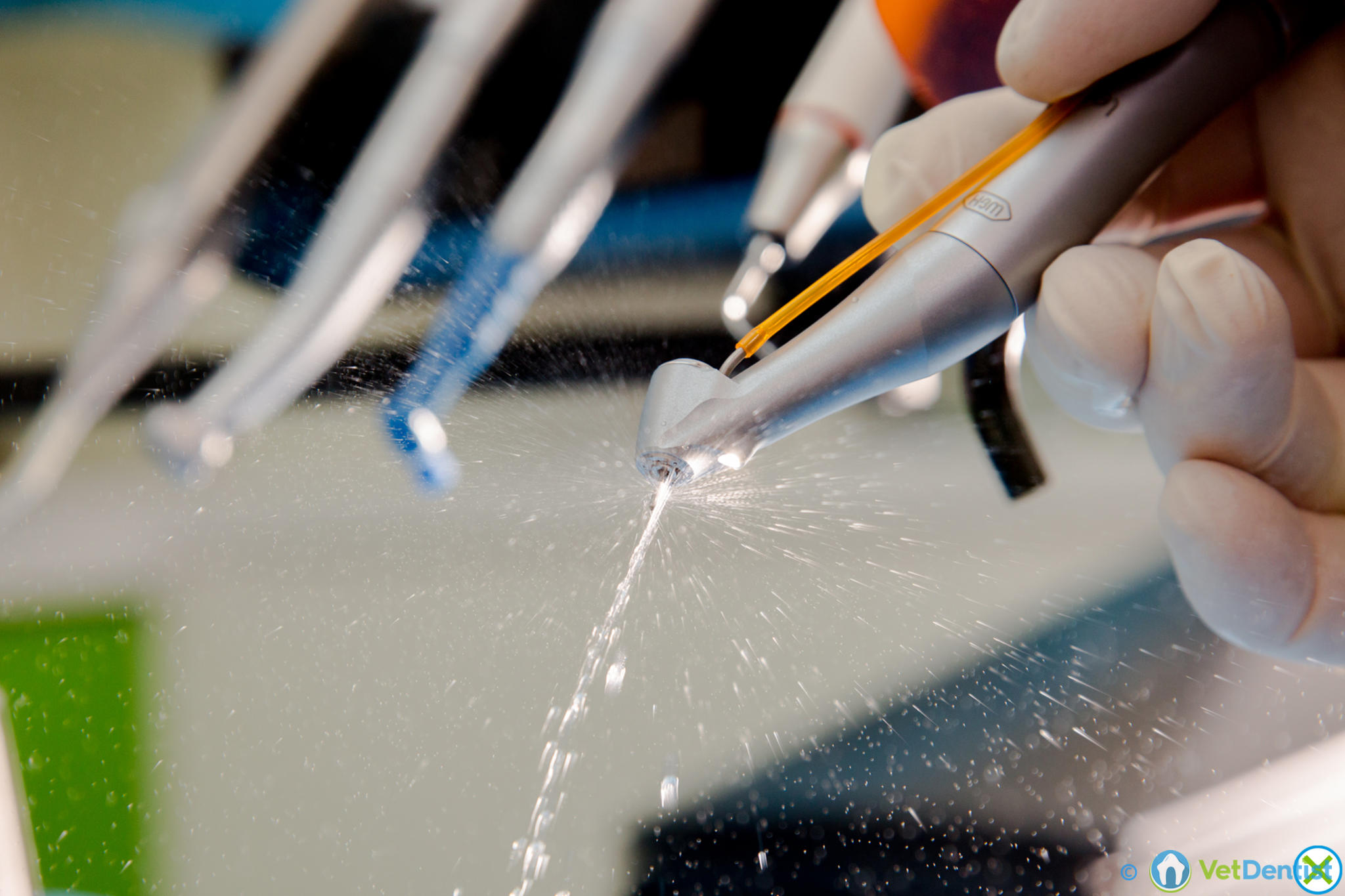
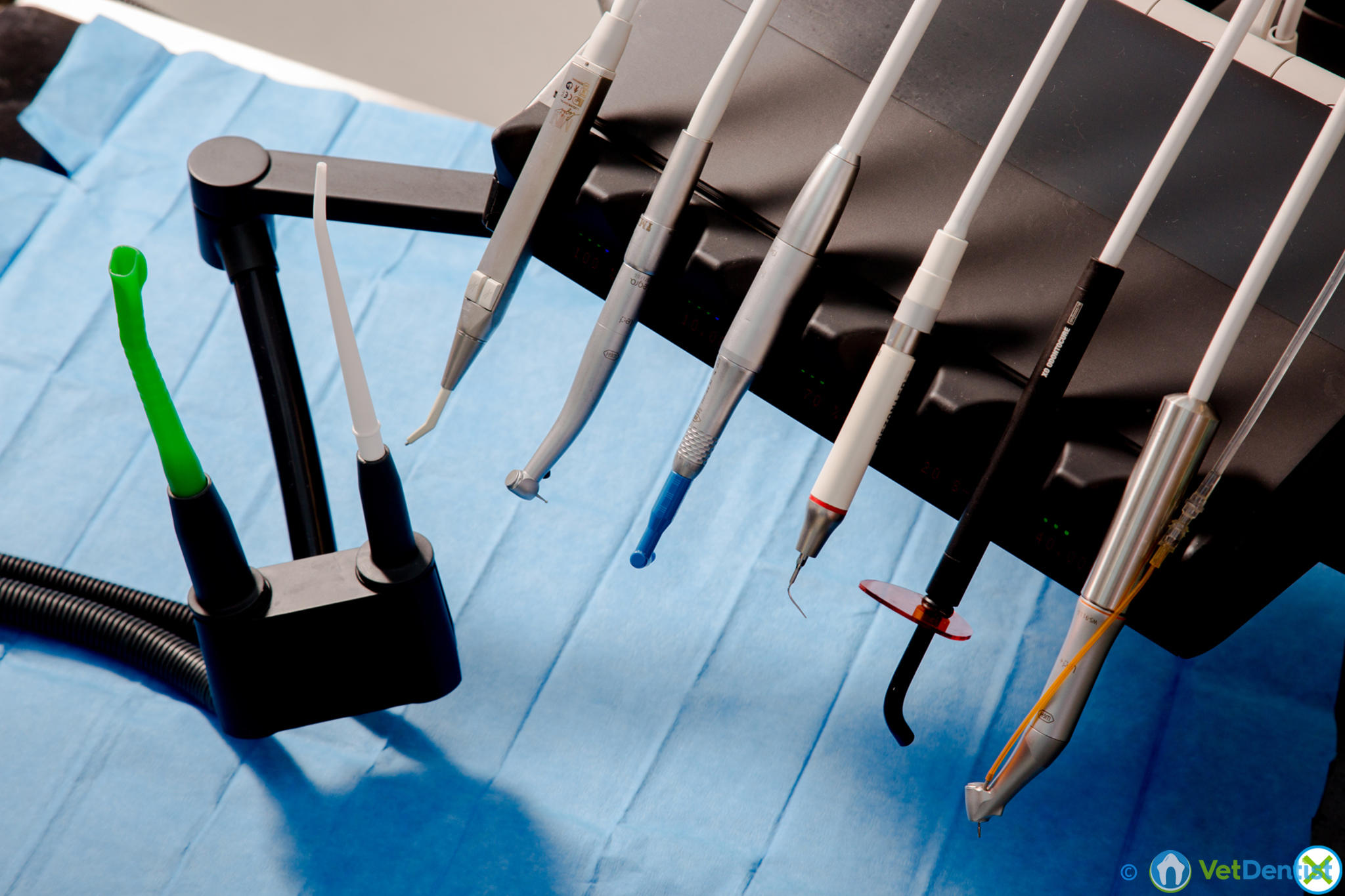
The Pro X is the flagship of iM3’s veterinary dental range. The dental treatment centre incorporates not only high and low speed dental engines – but also micro-motors. These can deliver controlled power and use sterile irrigation fluid delivered through a sterile handpiece to the operative site. This helps reduce the changes of complications during the dental procedures. The Pro X also houses the dental x-ray generator (www.VetDentist.co.uk/equipment/https://www.vetdentist.co.uk/wp-content/uploads/2022/03/#xray_generator) and detailed camera systems (www.VetDentist.co.uk/equipment/https://www.vetdentist.co.uk/wp-content/uploads/2022/03/#cameras). These help provide the best imaging solutions to help visualise disease and provide effective treatment. The “wet-suction” unit www.VetDentist.co.uk/equipment/https://www.vetdentist.co.uk/wp-content/uploads/2022/03/#dental_suction Is easily available to nurses assisting during the procedures. The use of the “European Style” drop over handpiece system allows the instruments to be finely balanced to avoid operator fatigue on longer operations. This helps improve patient safety.
High Speed Dental Handpieces
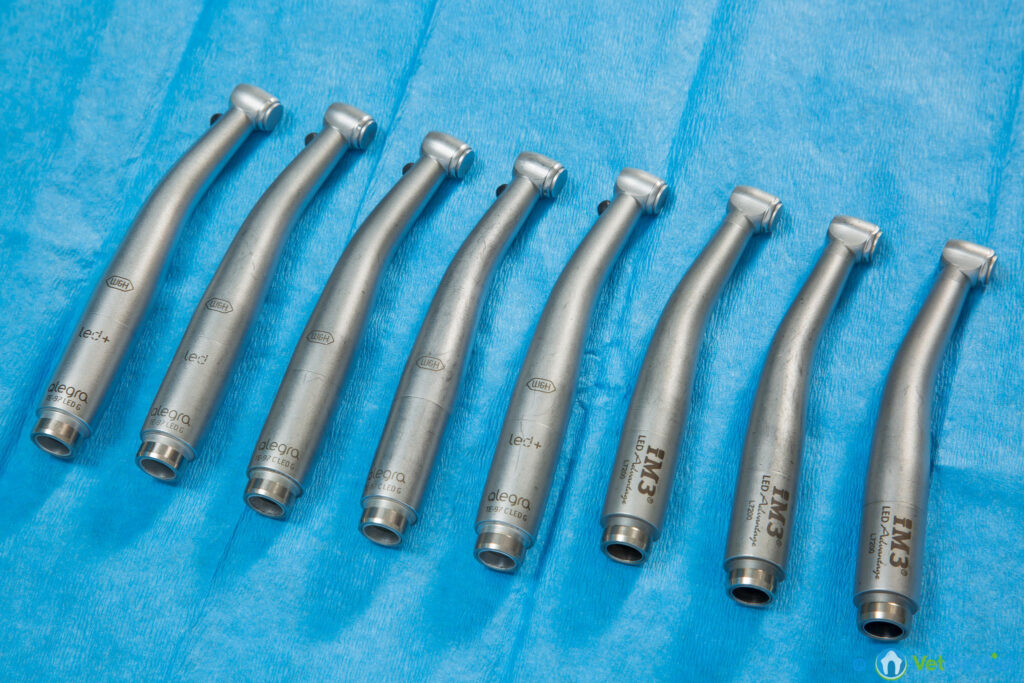
High speed handpieces are the mainstay of most veterinary practices. At VetDentist they are just used for sectioning teeth into separate root portions for extraction, or for shaping teeth, restorations, or for accessing the pulp chambers for endodontic procedures. We do not use the high speed handpieces for bone surgery – this is done using our sterile irrigation system and surgical handpieces. Having a number of sterile handpieces available ensures that procedures are not delayed – or patient safety compromised. Each of the handpieces incorporates LED lighting to assist in accurate surgery.
Contra-Angle Dental Handpieces

These handpieces are used to deliver a slow control function, we use them during endodontic procedures and helping to finish restorations
Surgical Saw Dental Handpieces
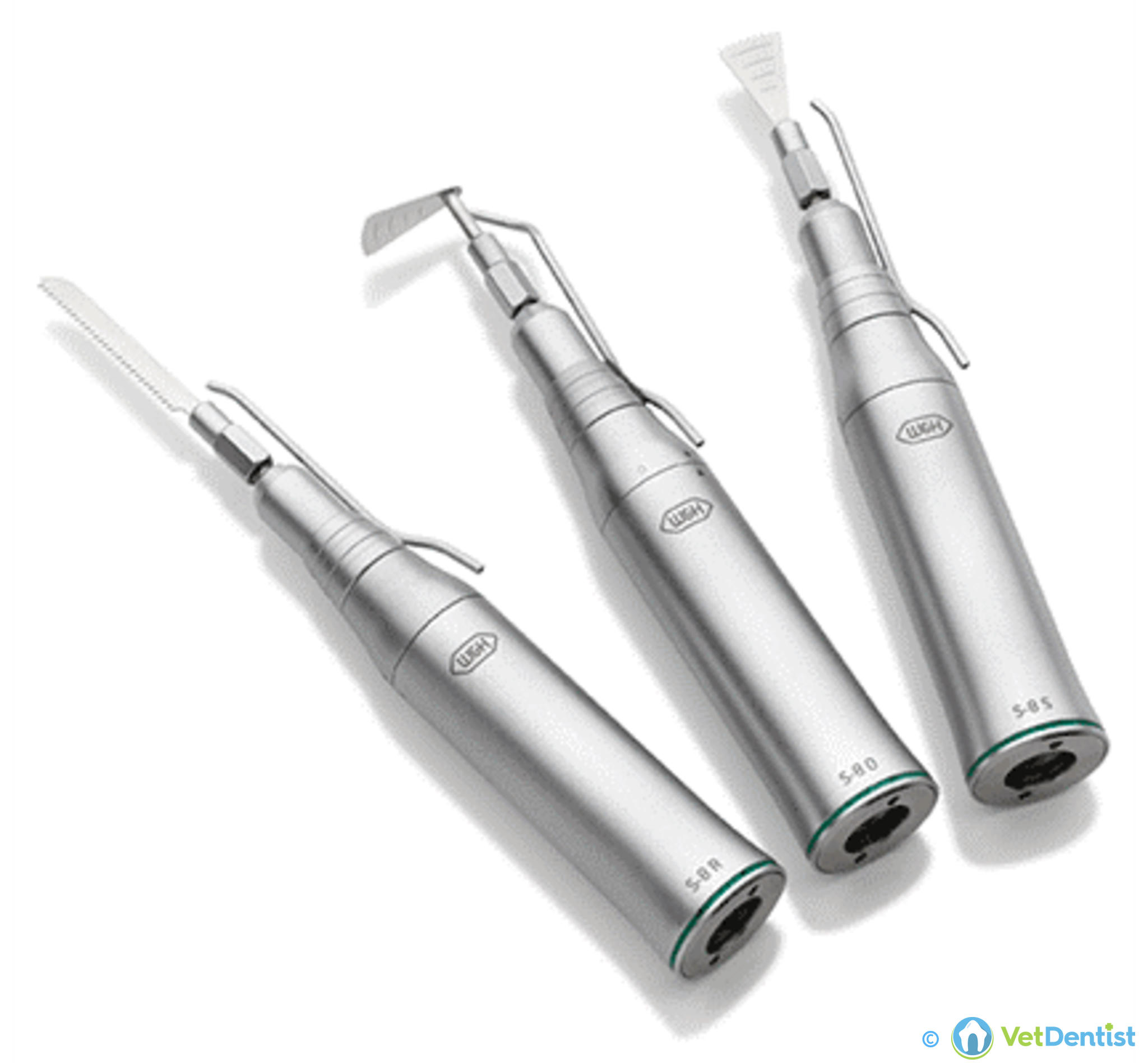
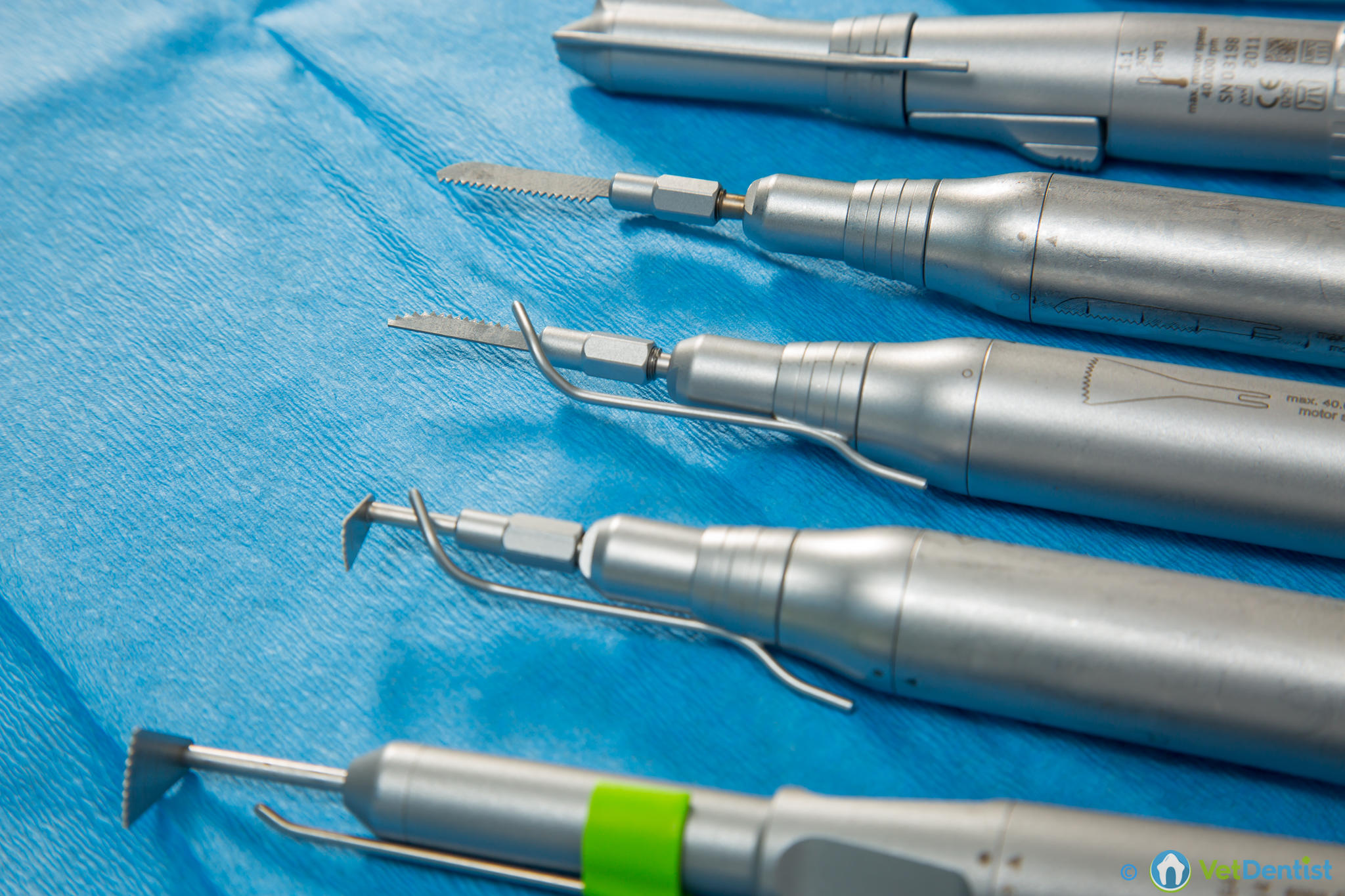

These surgical handpieces are used to deliver bone cutting. We use them when the bone density, or volume, means that the Piezotome would take time to perform. The sawing action can be delivered in different directions – parallel to the axis (sagittal), at 90’ to the axis (oscillating), or forward/reverse along the line of the axis (reciprocating). The ability to use different handpieces in different situations provides a great deal of flexibility for the surgeon in an attempt to provide the best outcome for our patients.
Surgical Dental Handpieces



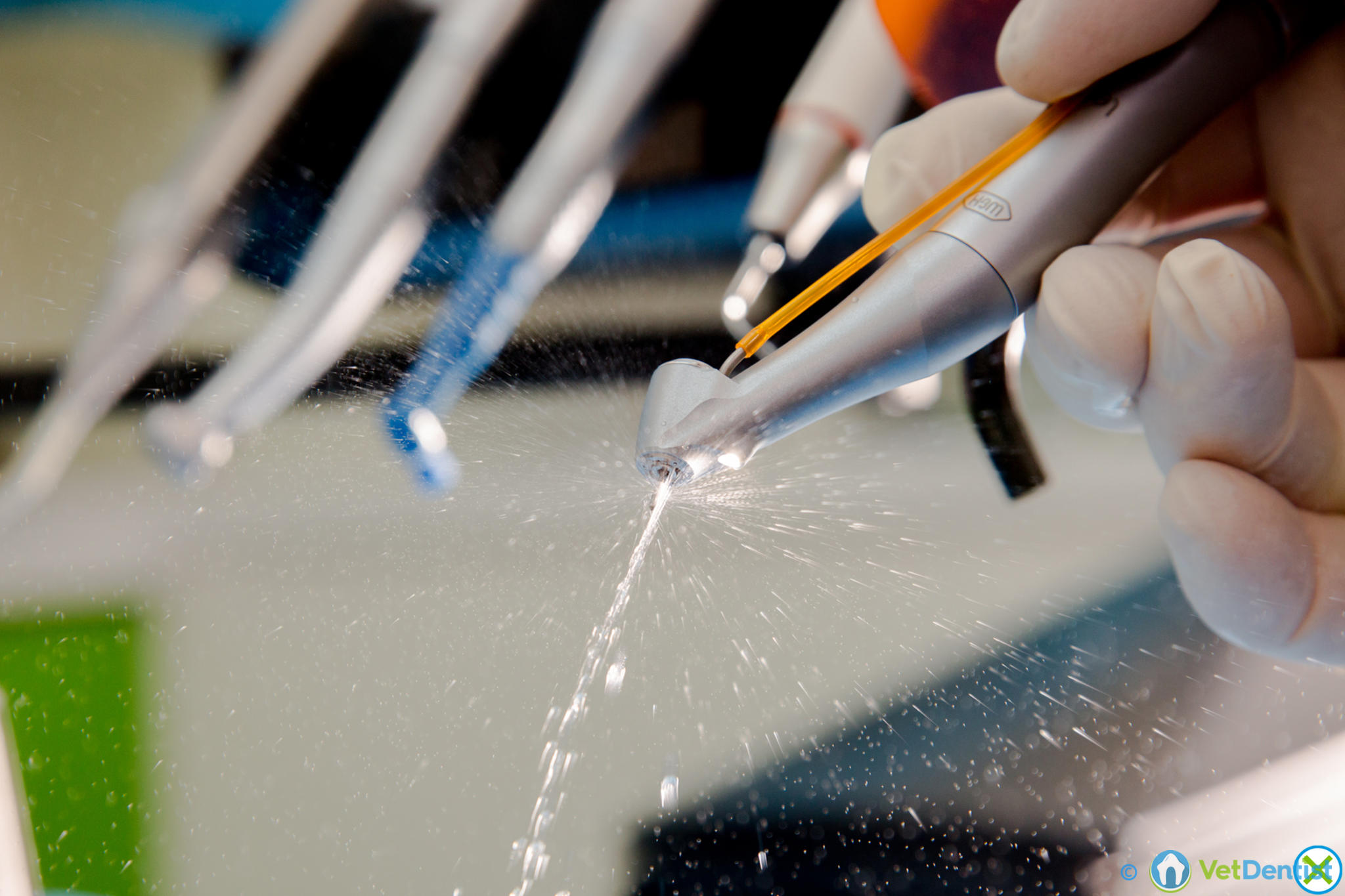
These surgical handpieces provide powerful cutting or drilling forces – whilst delivering sterile irrigation fluids t the operating site. These are the instruments of choice for the removal of the bone surrounding tooth roots to assist in gentle surgical extraction techniques. Currently these highly engineered professional handpieces are rarely used in veterinary practice. They also represent a significant financial investment in our patient care – as they make a huge difference to the quality of the procedures we perform. At VetDentist we have invested not only in a number of the handpieces and the driving engines – but also in a range of angled heads. These allow access to the trickiest of areas.
Polishing Dental Handpieces
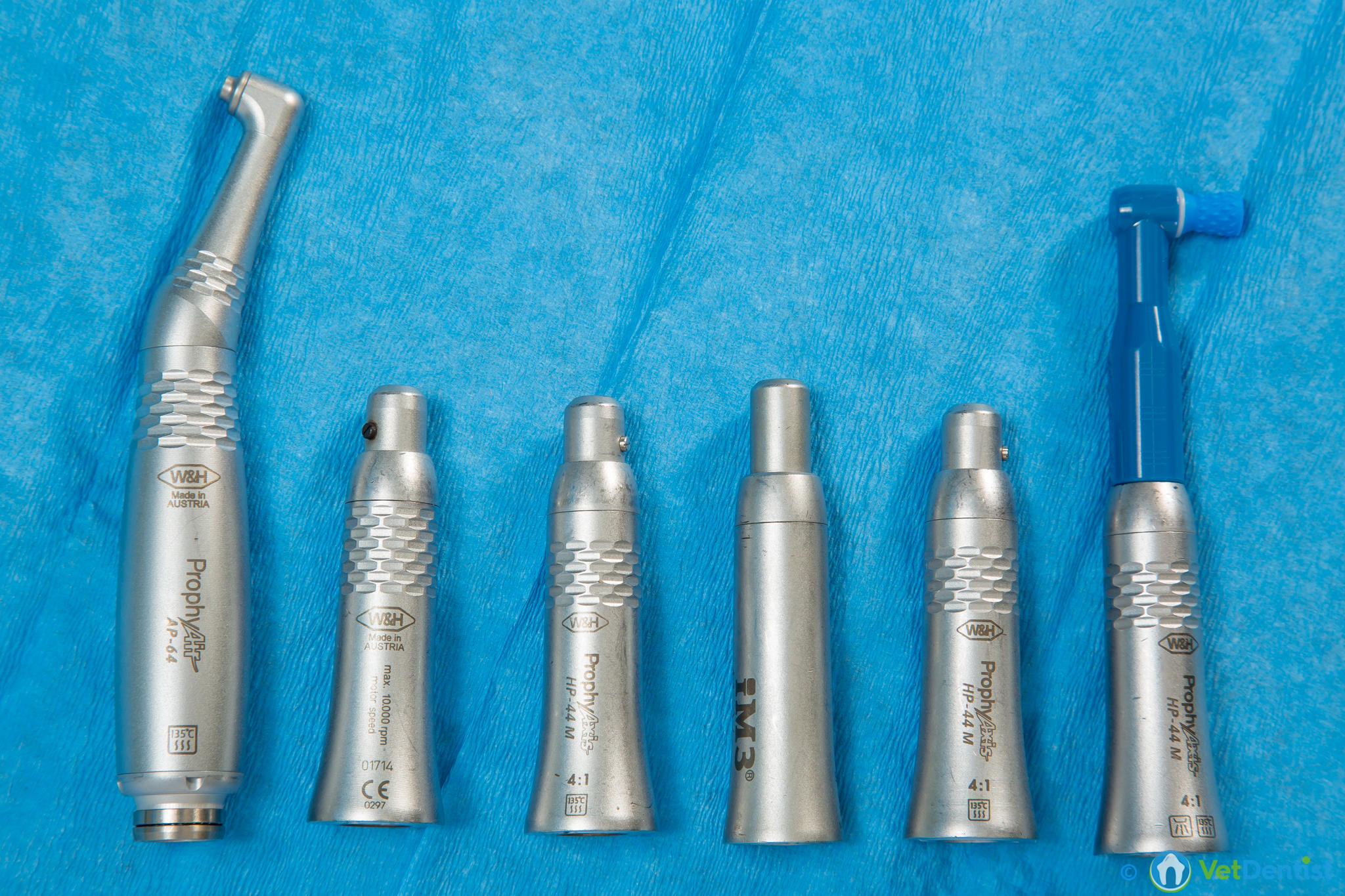
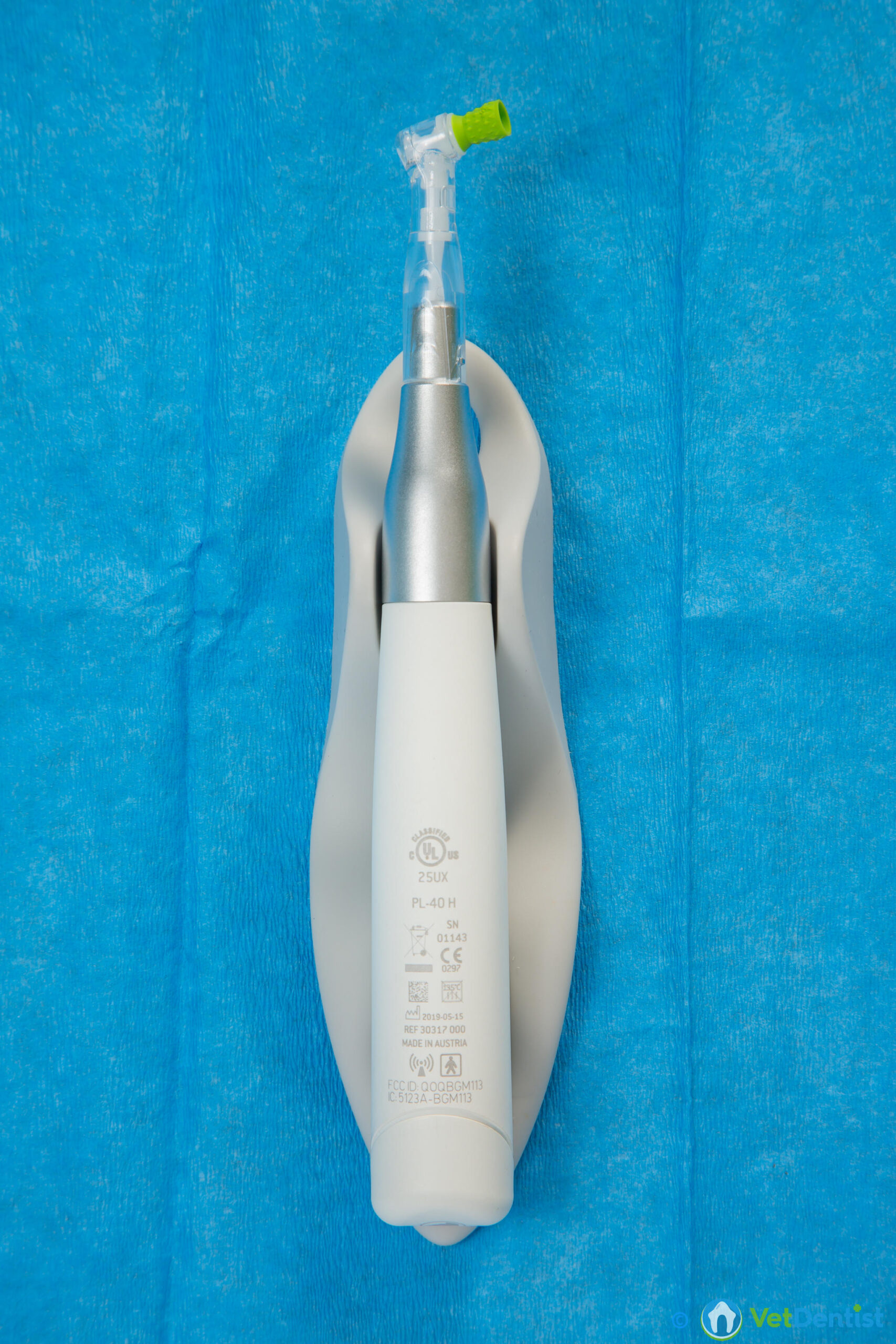
Polishing the teeth after scaling helps to remove microscopic scratches and defects to the enamel surface. Left untreated these would provide a focus for plaque accumulation – allowing dental disease to return more quickly. At VetDentist we use a special oscillating head – this is designed to minimise any heat generation. It also avoids the problems with hair from our patients getting trapped in the mechanism! In addition to the handpieces on the Pro X, we also have dedicated wireless battery units to maximise our flexibility in helping to progress our patients.
Tara Dental Table

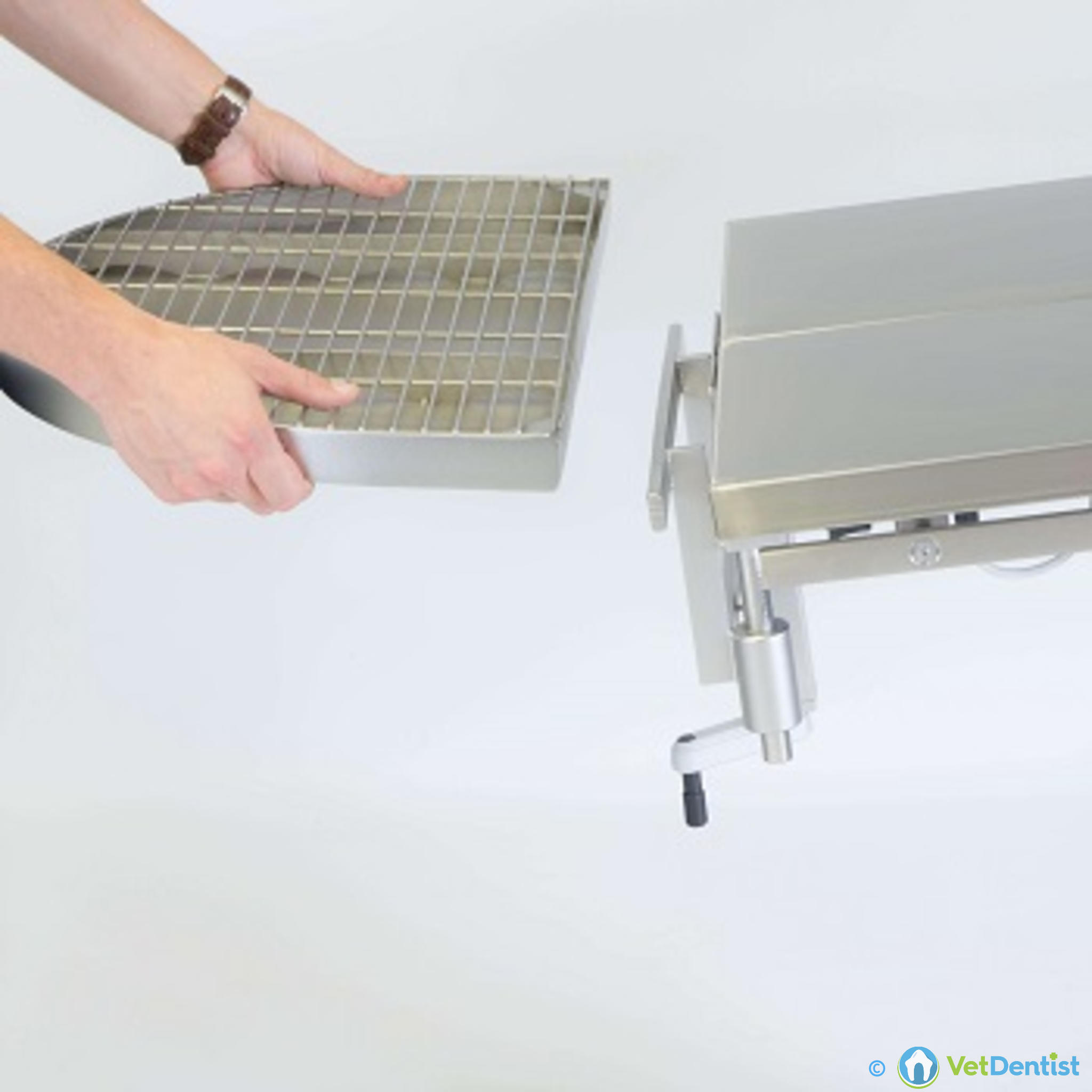

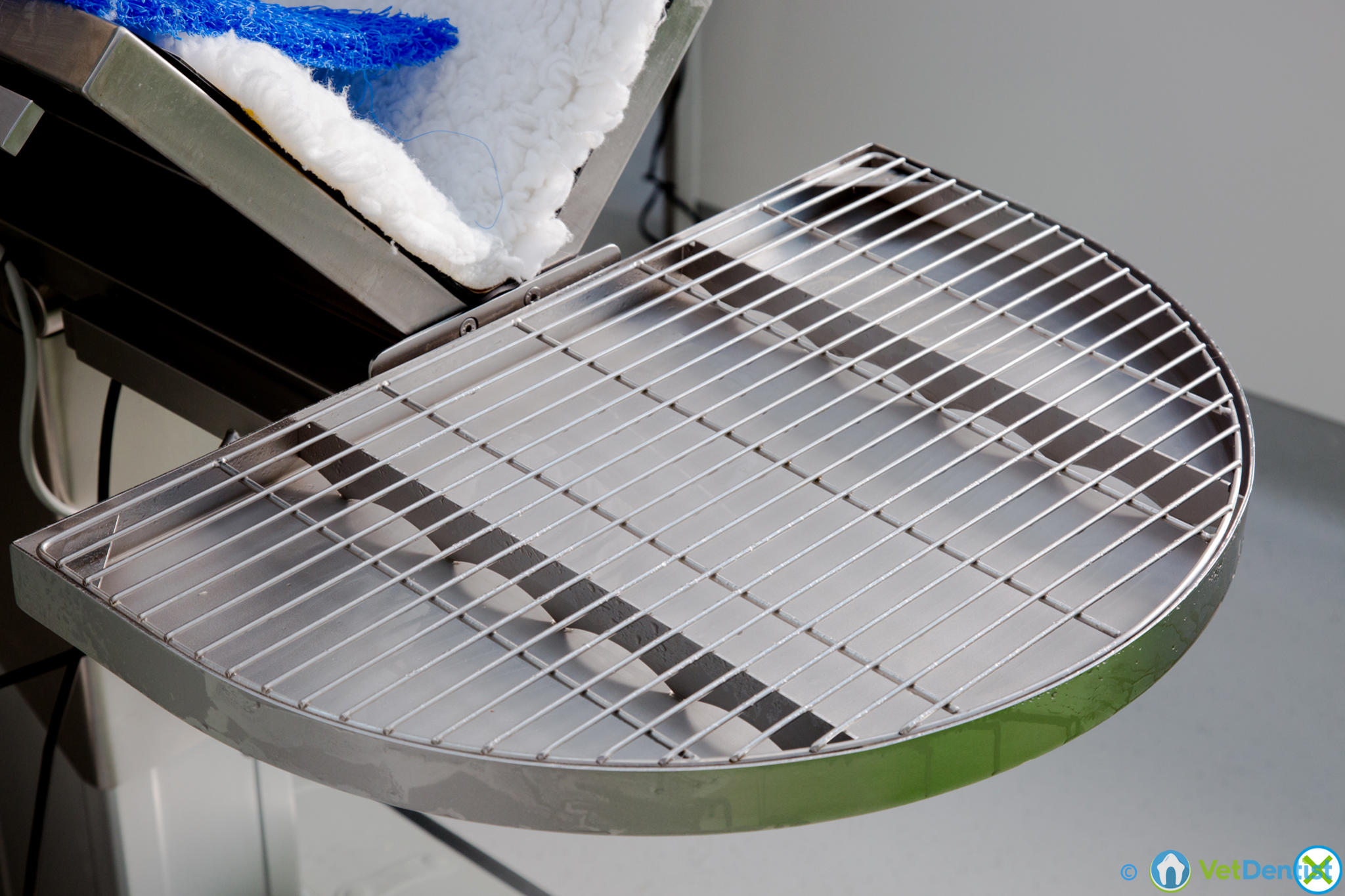
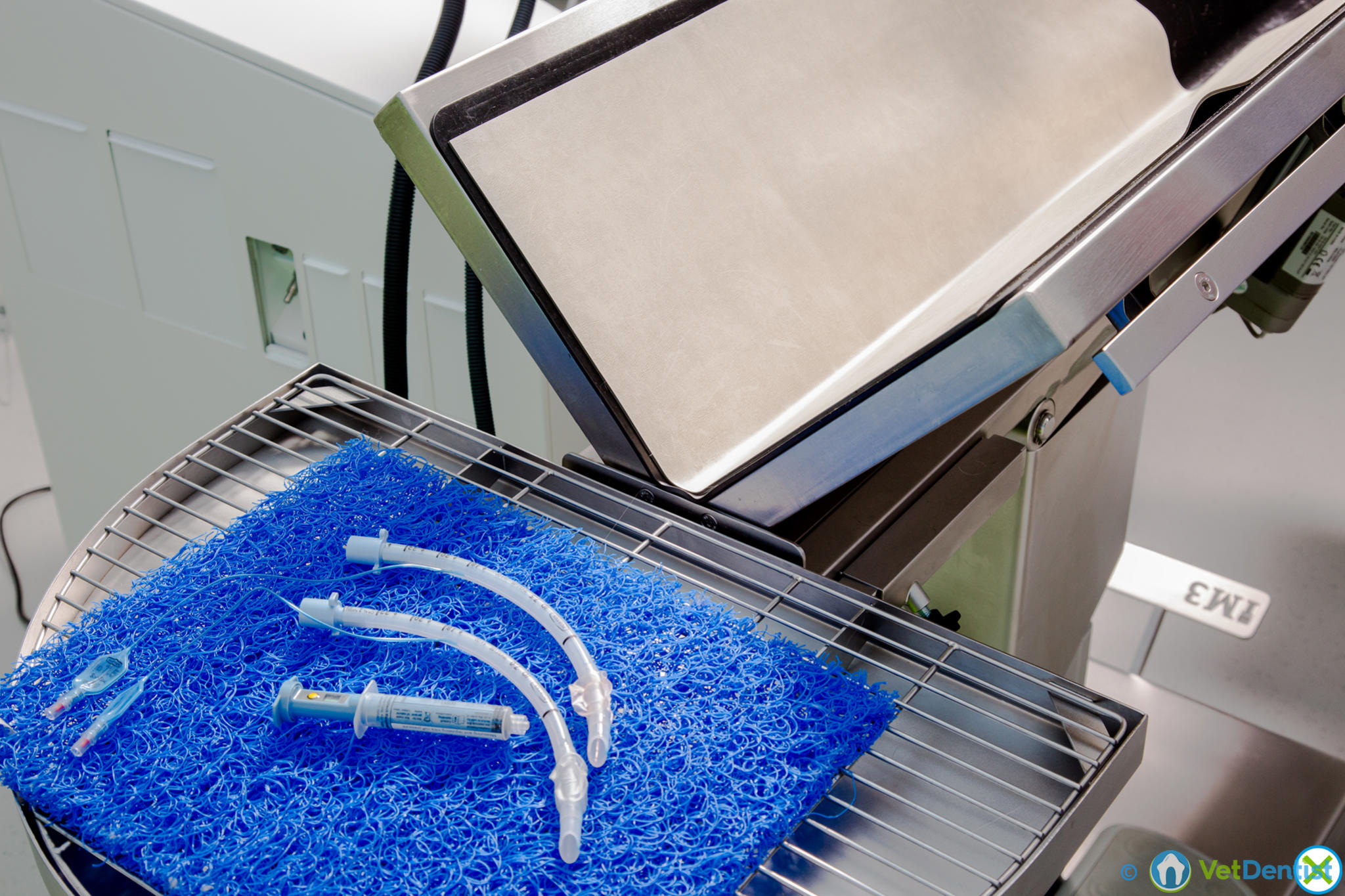
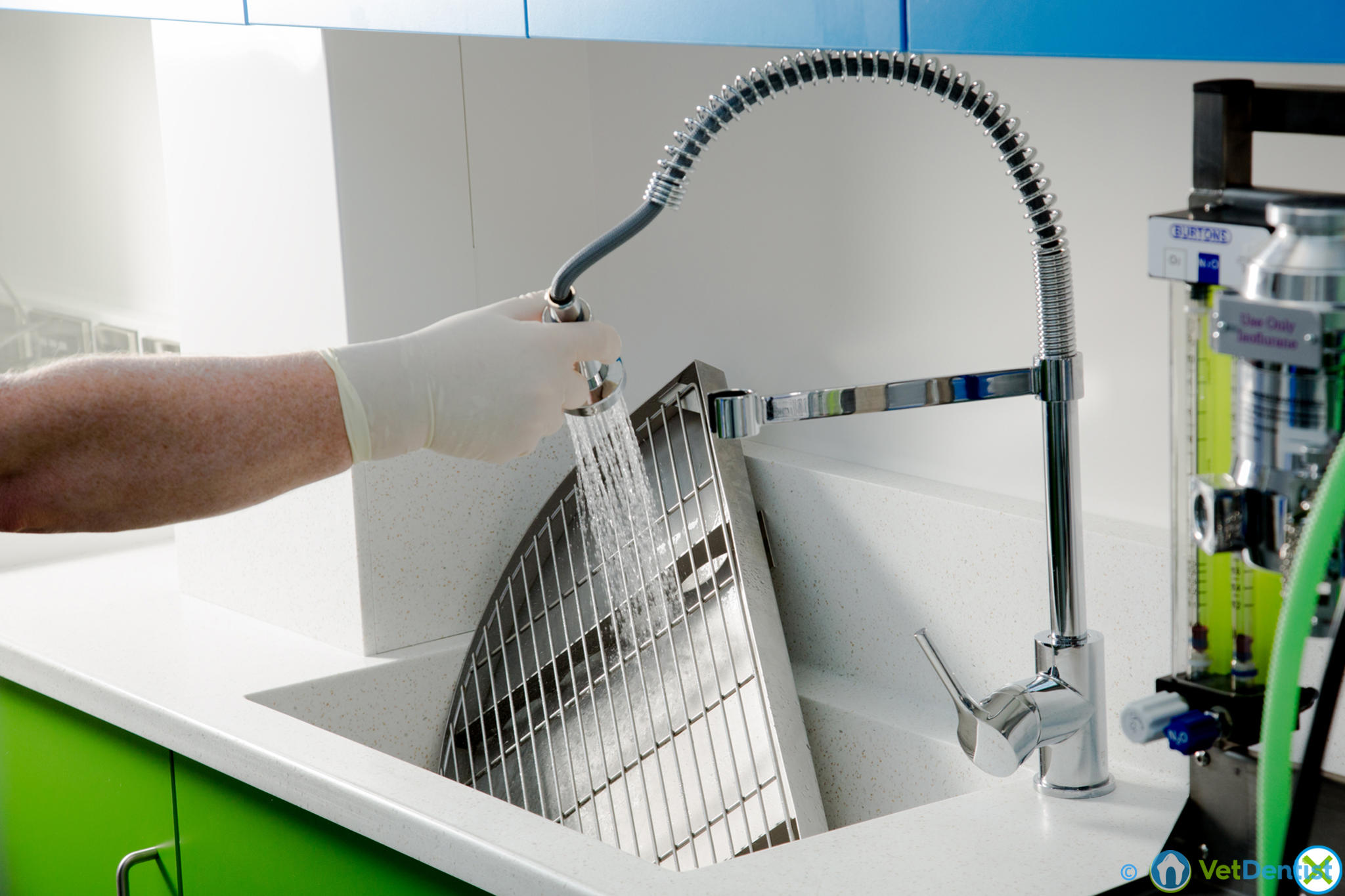
It is essential to have our patients properly positioned in order that procedures can be effectively performed. The Tara tables provide the ultimate in flexibility. They are height adjustable, the table itself can be formed into a V shape (allowing patients to be securely positioned for radiography for example), the table can be tilted to elevate the head. The tables also have an integrated dental tray – which allows for the drainage of excess fluids from the mouth during procedures. This helps keep the operative fields clear for the surgeon to proceed. The height of this tray can also be independently varied – so that larger dogs as well as cats can easily be accommodated. The trays are easily removable for cleaning in our custom made deep sinks. We also use special woven nylon mats to allow effective drainage whilst also providing a cushioned resting space for our patient’s heads. This helps to avoid any pressure damage to facial nerves during procedures.
Dental (wet) Suction

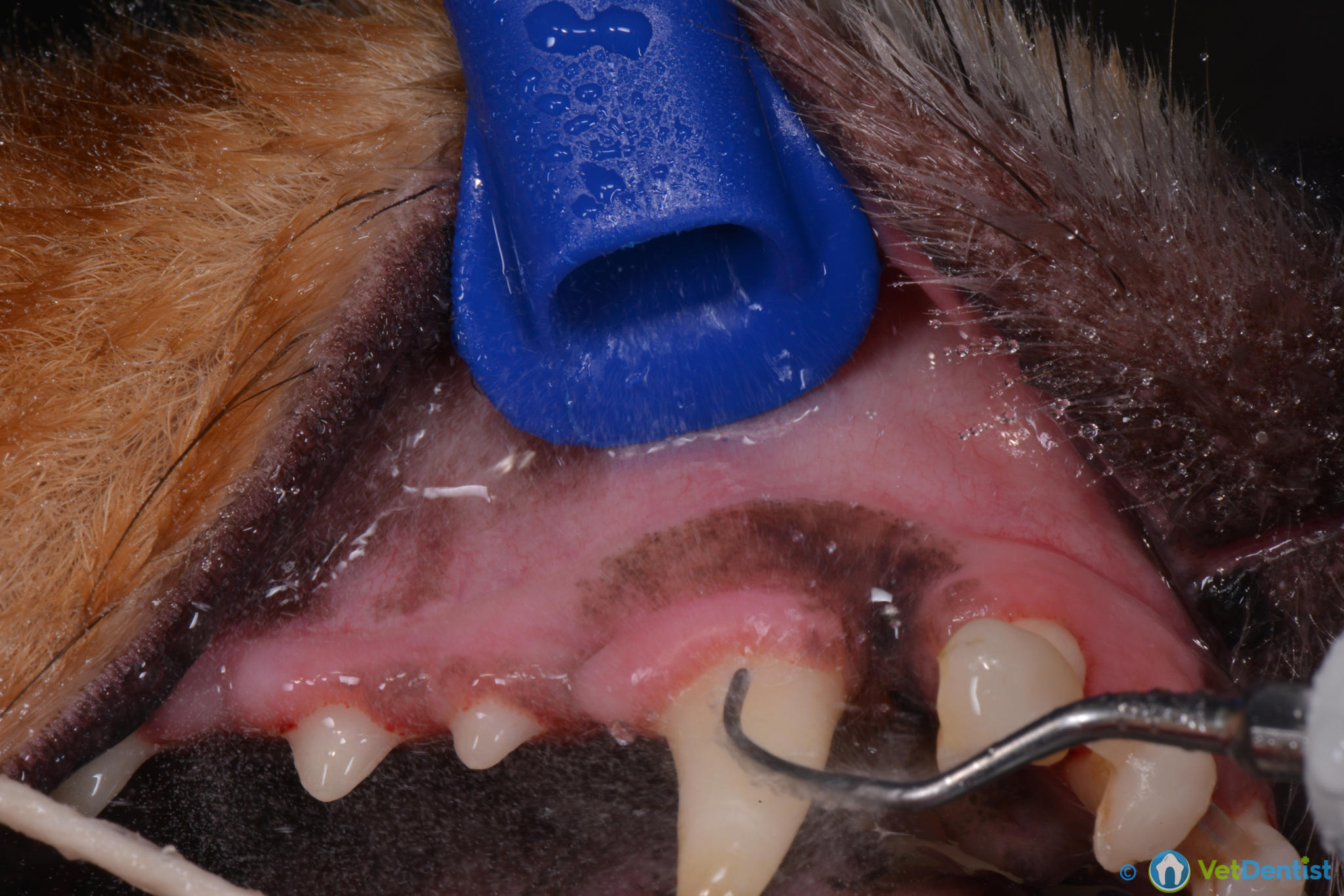
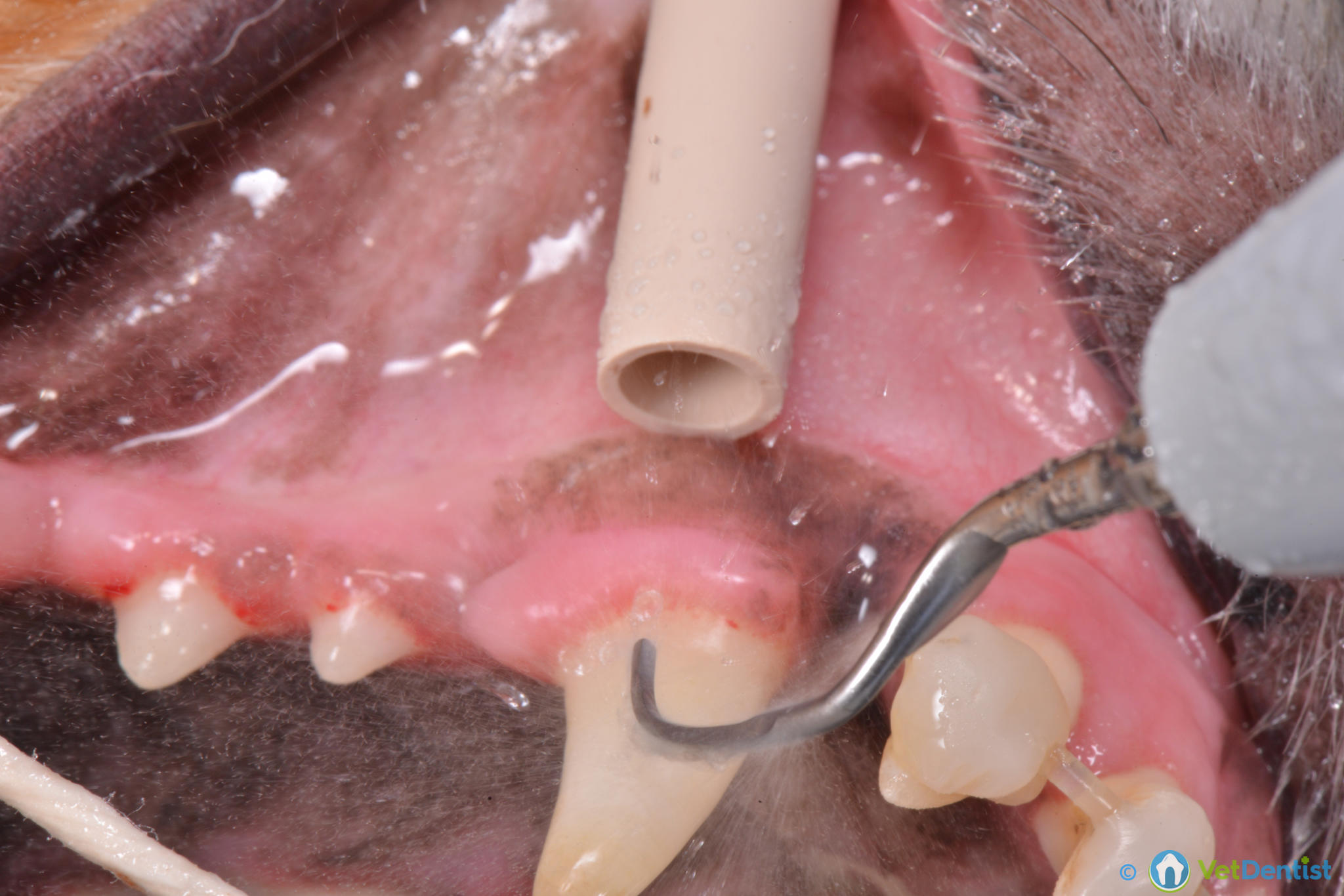

This helps to ensure that operative fields are kept clear of debris making controlled surgery simpler. By removing excess fluids our patient’s airways are also protected – helping to avoid problems with anaesthesia. As a further benefit, reducing aerosol contamination helps to protect our team members from infections.
Piezotome Surgical Unit
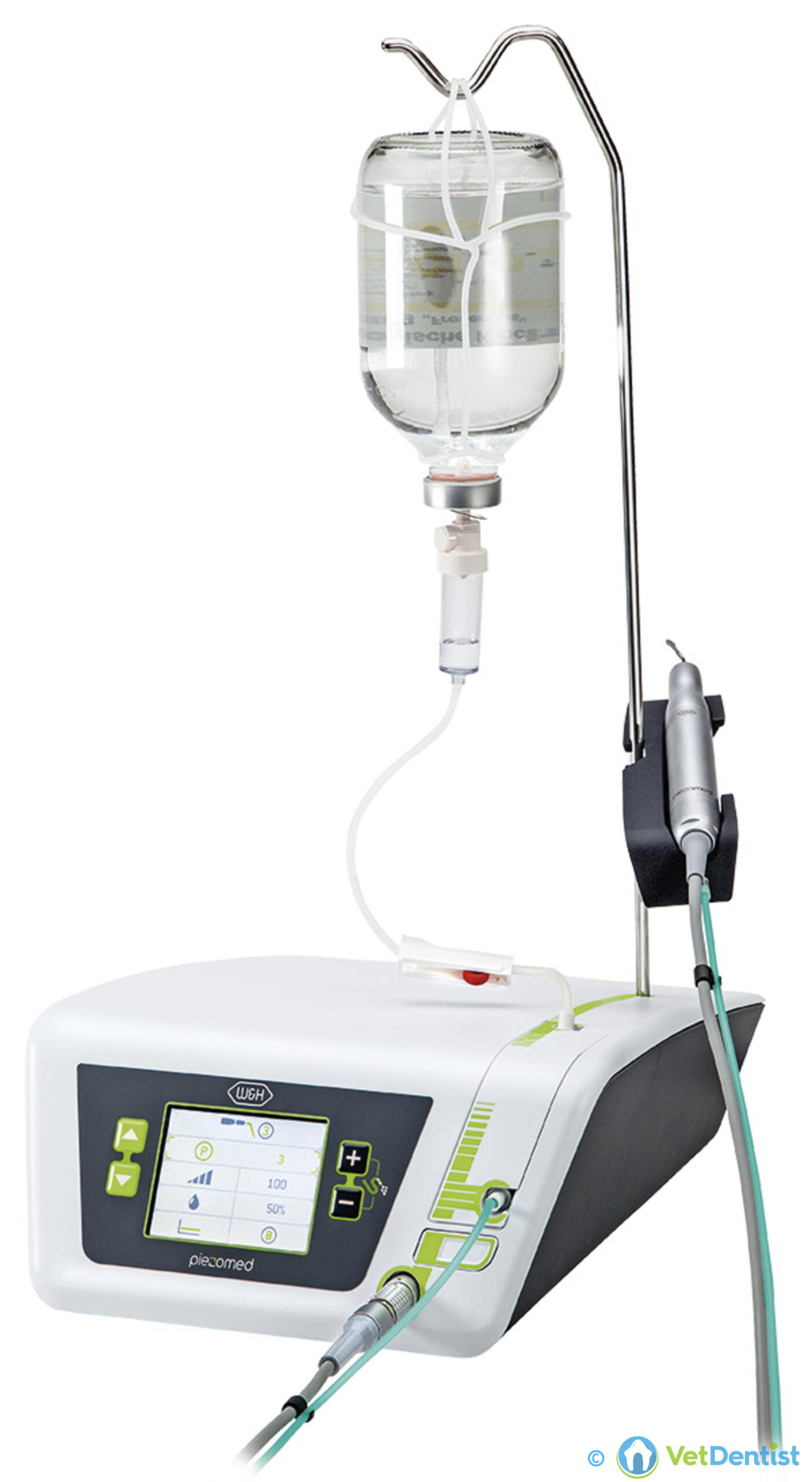
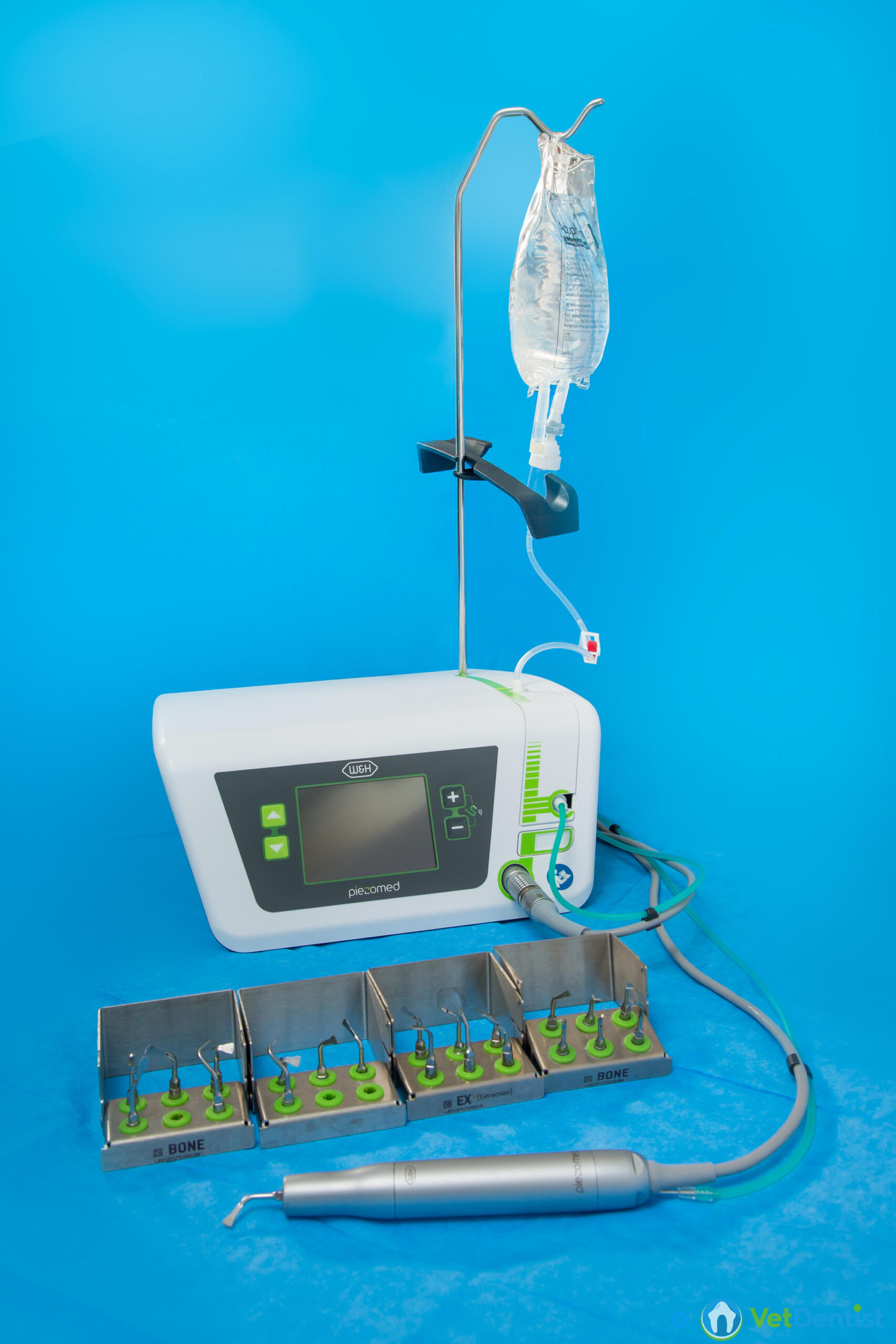
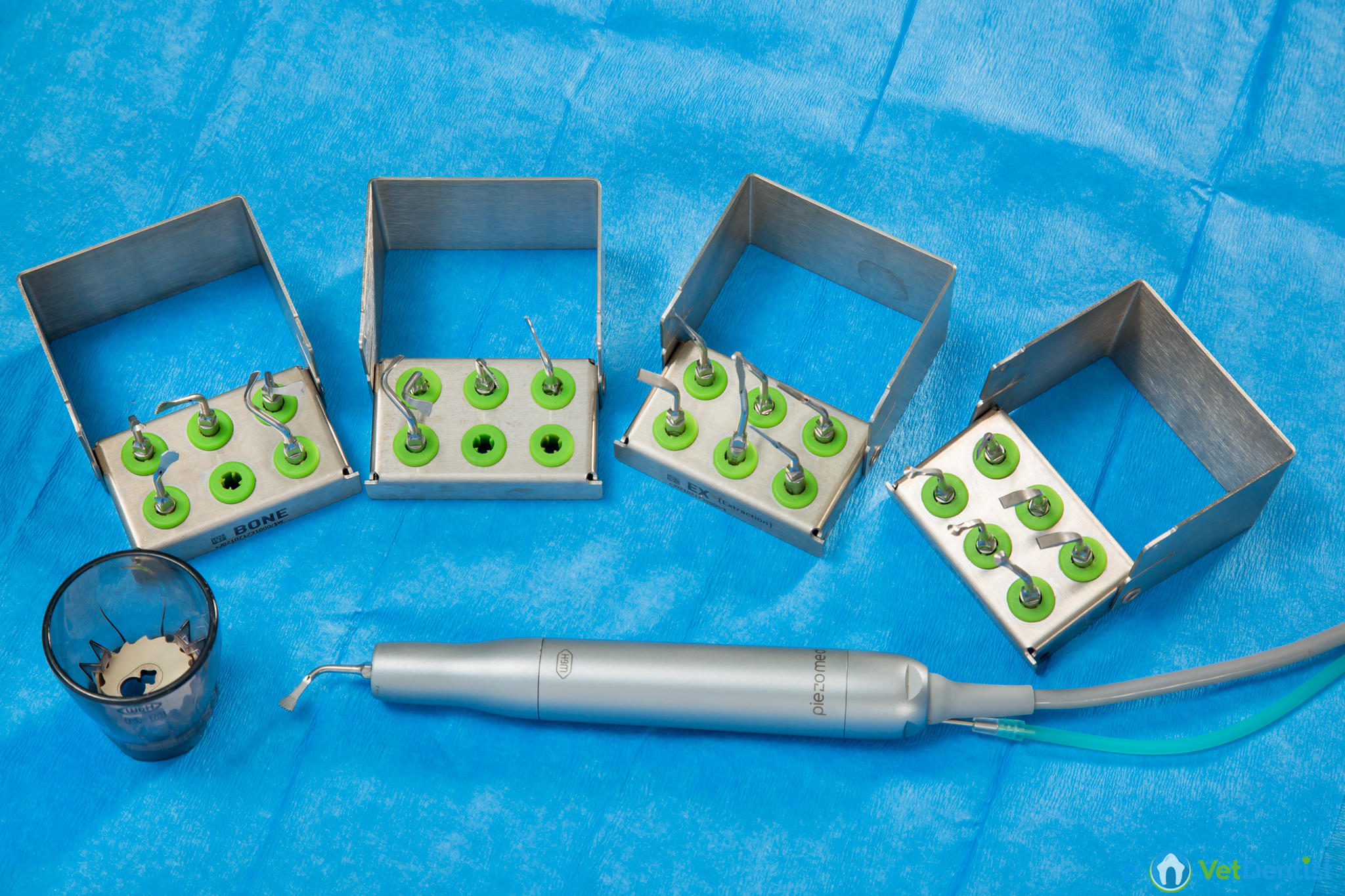

The Piezomed surgical instrument provides a superbly controlled bone cutting instrument. By using ultrasound technology the cutting power is directed at hard bone tissues – leaving surrounding sensitive soft tissues undamaged. This level of control is invaluable for major facial surgical procedures such as mandibulectomy or maxillectomy. It also opens up the option for “rim-mandibulectomy” where tumours can be removed – but the very base of the mandible can be preserved – allowing for effective function post operatively. The unit includes LED lighting at the operative tips and sterile fluid irrigation delivered to the operative site. Importantly, the Piezomed is also very quiet in operation with no noisy cooling fans. This helps reduce stress and fatigue for the operating team. A range of different tips are used for a variety of purposes, with the Piezomed automatically detecting which tip is in use and adjusting power levels automatically, ensuring the best for our patients. For more information visit https://www.wh.com/en_uk/dental-products/oralsurgery-implantology/surgical-devices/piezomed/
Sterile Dental Kits

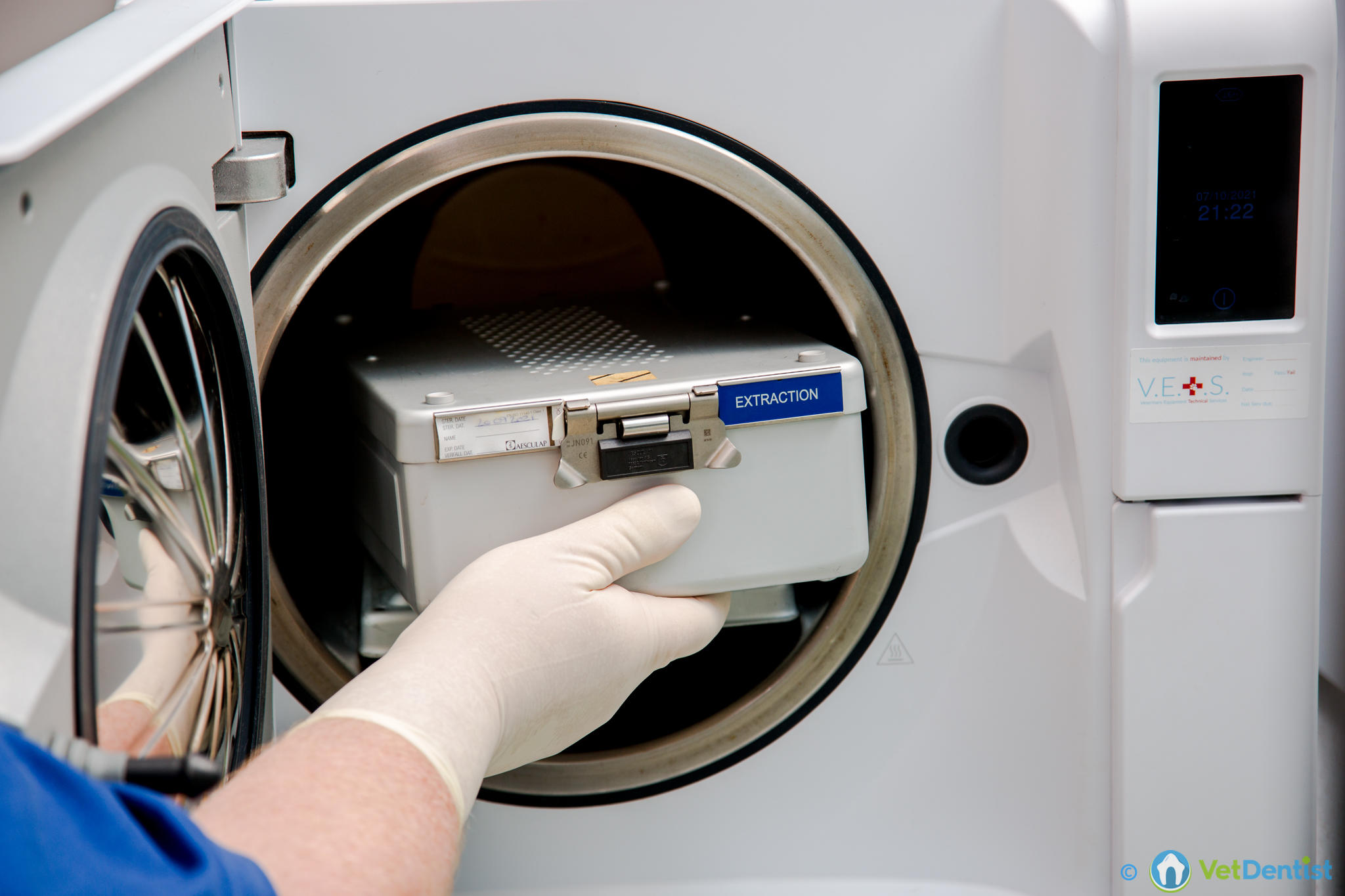

VetDentist has invested in a sterile storage system more commonly seen in referral orthopaedic practices. These reusable sterilisable storage boxes allow groups of instruments to be stored together – this gives the surgeon easy access to all of the instruments needed for a procedure in one place. The system also allows for accountability of sterilisation – ensuring patient safety is maintained.
Core Dental Kits
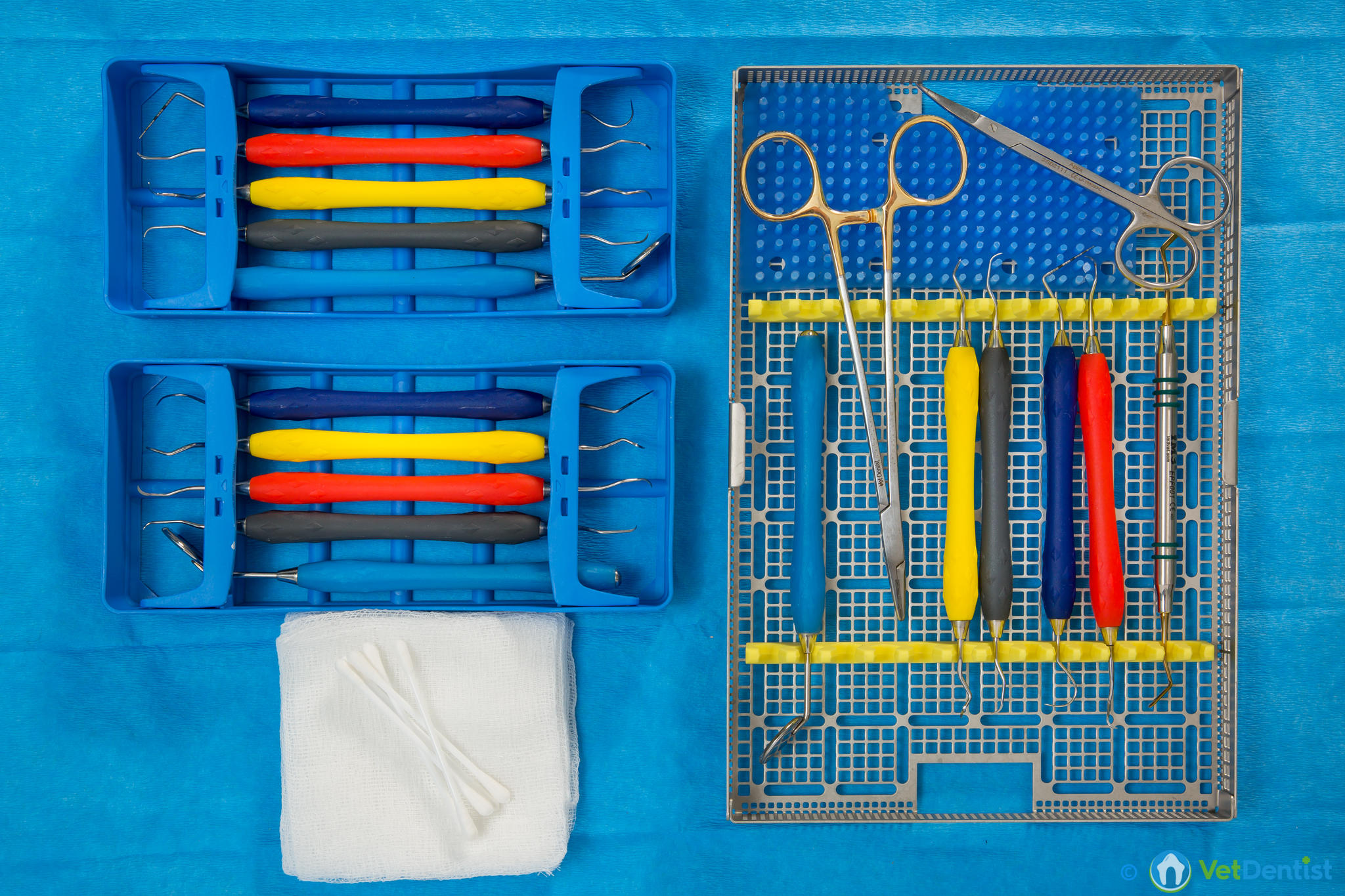
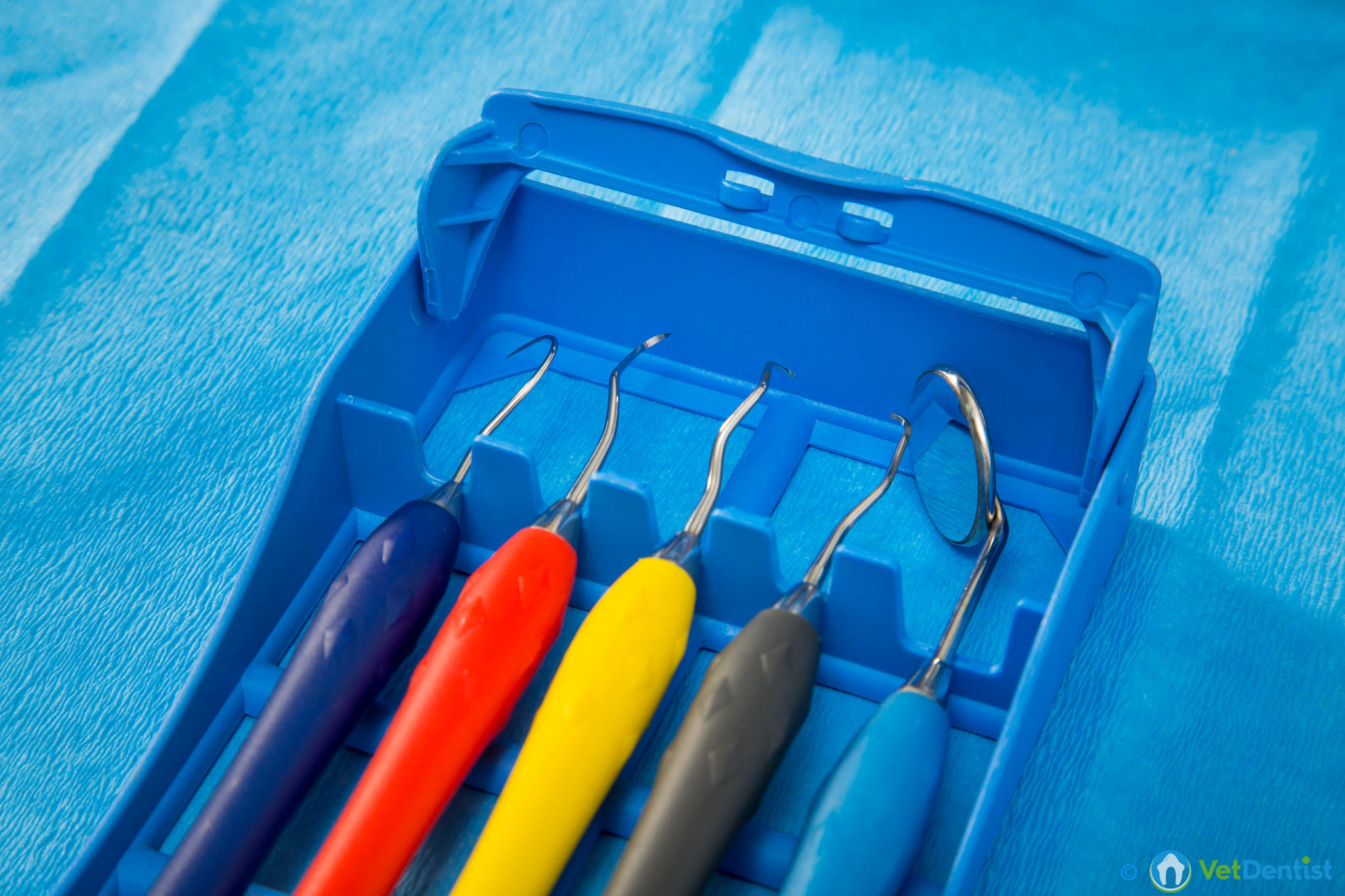
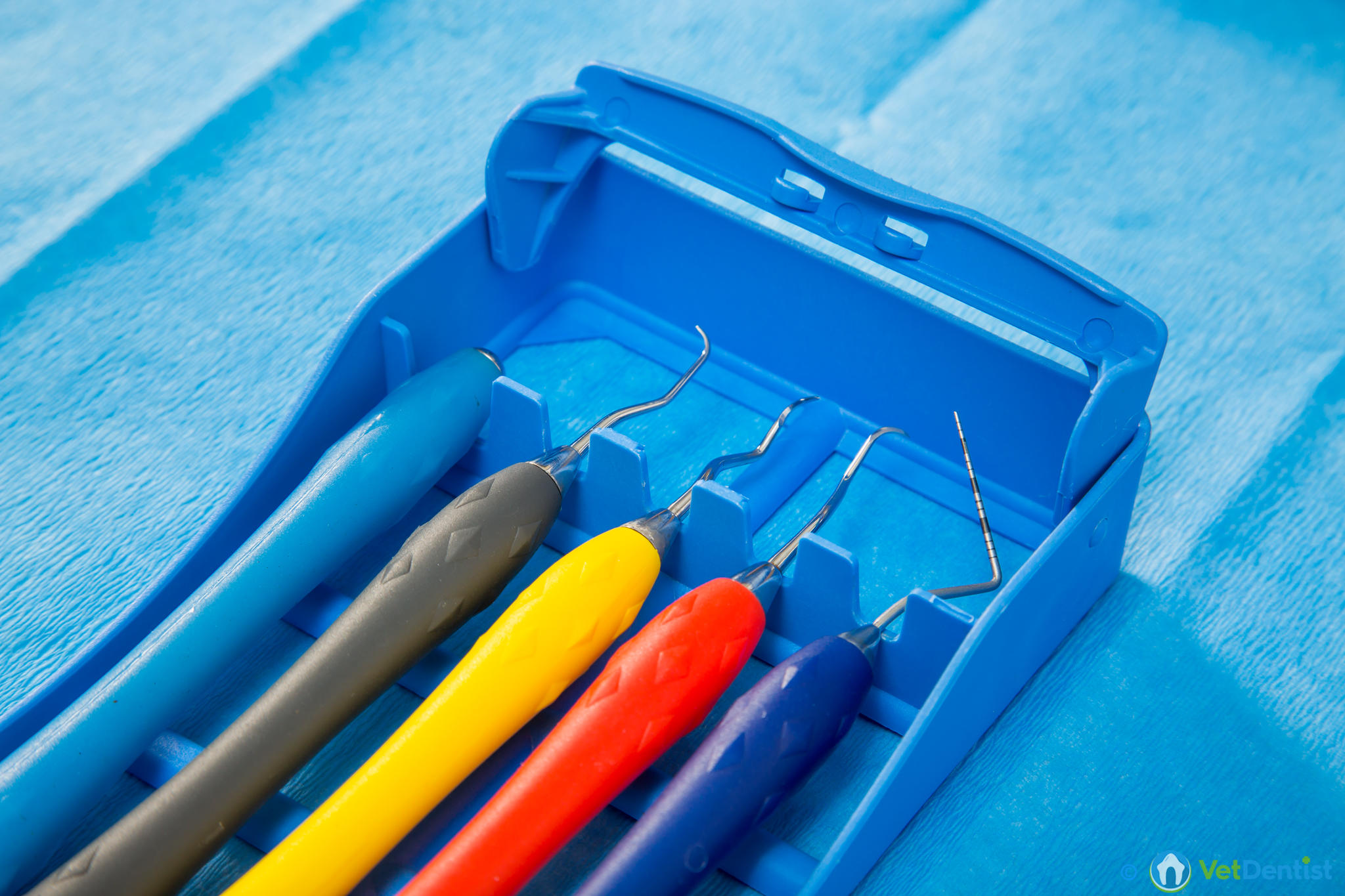
The basic or core kit for almost every procedure consists of dental probes, explorers and scalers and curettes. In addition, we also keep needle holders, gentle tissue forceps and scissors. We maintain a number of these to ensure that our patients’ safety is maximised by using sterile instruments for each procedure.
Dental Extraction Kits


Surgical extraction of teeth requires care and a gentle approach. Having the right instruments (and ensuring that they are sharp) is fundamental to any extraction procedure. Whilst we have a number of our standard extraction kits ready to use, we also have some specialised extraction kits as well.
Dental Luxators and Elevators



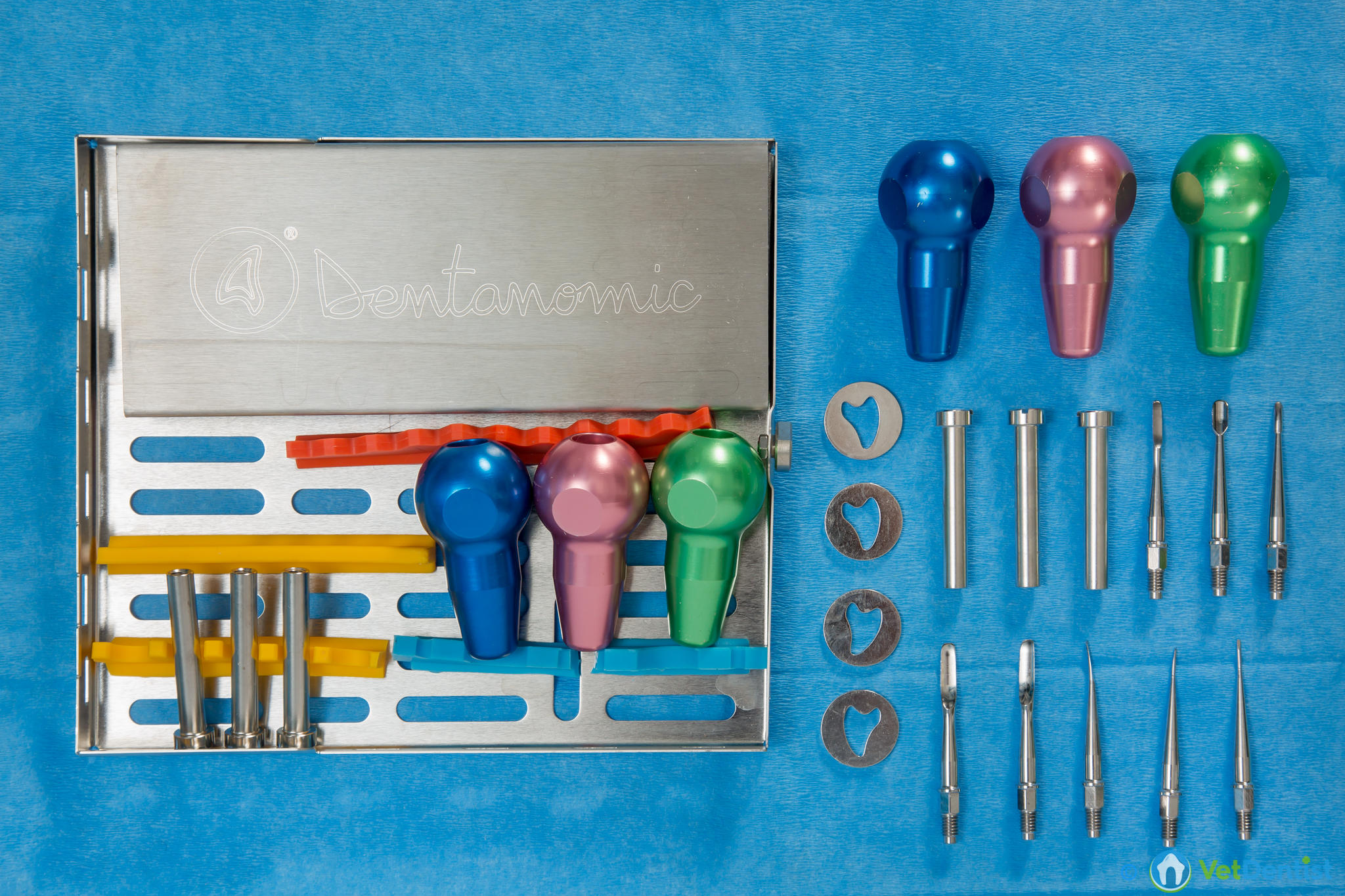
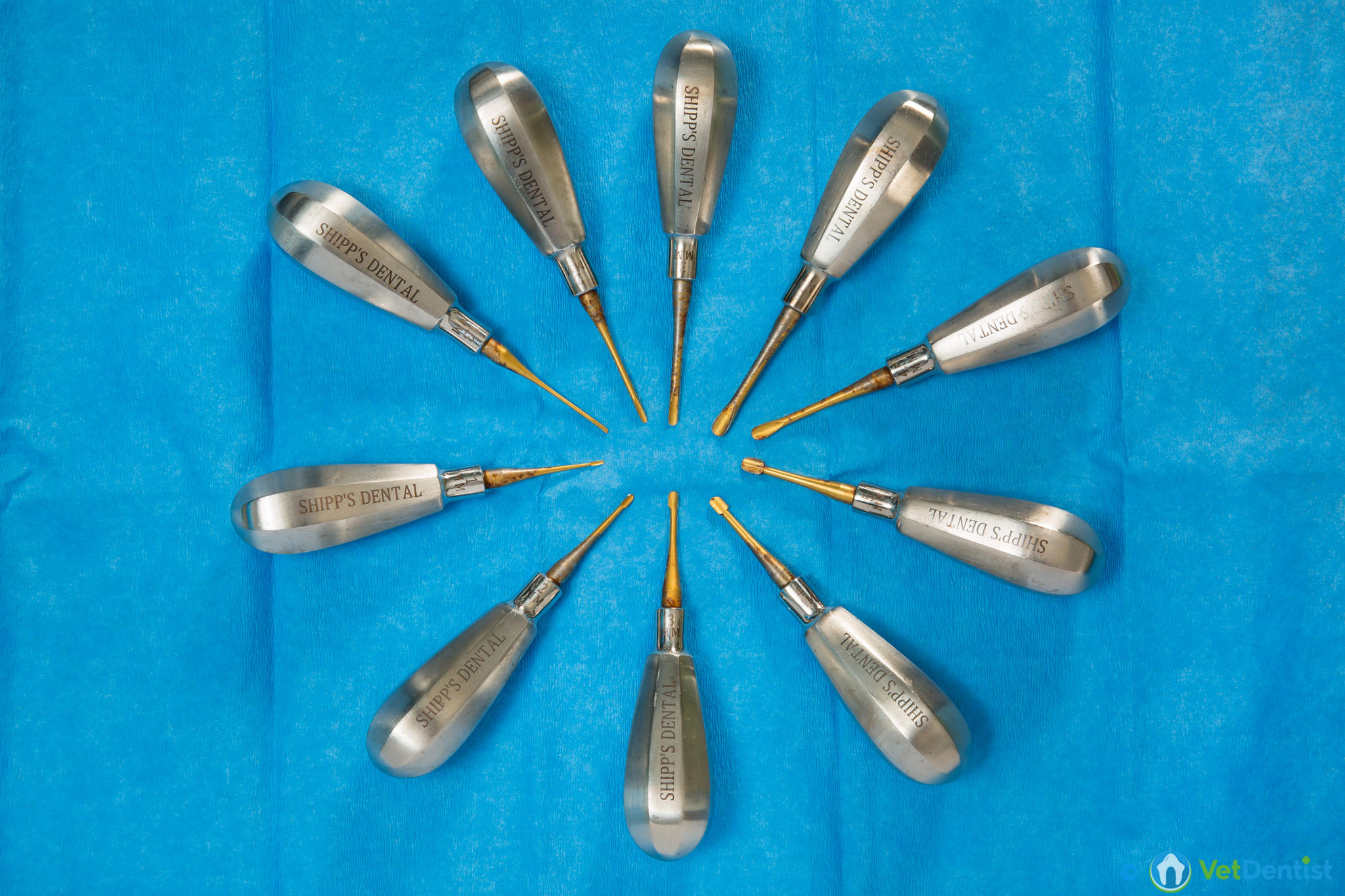
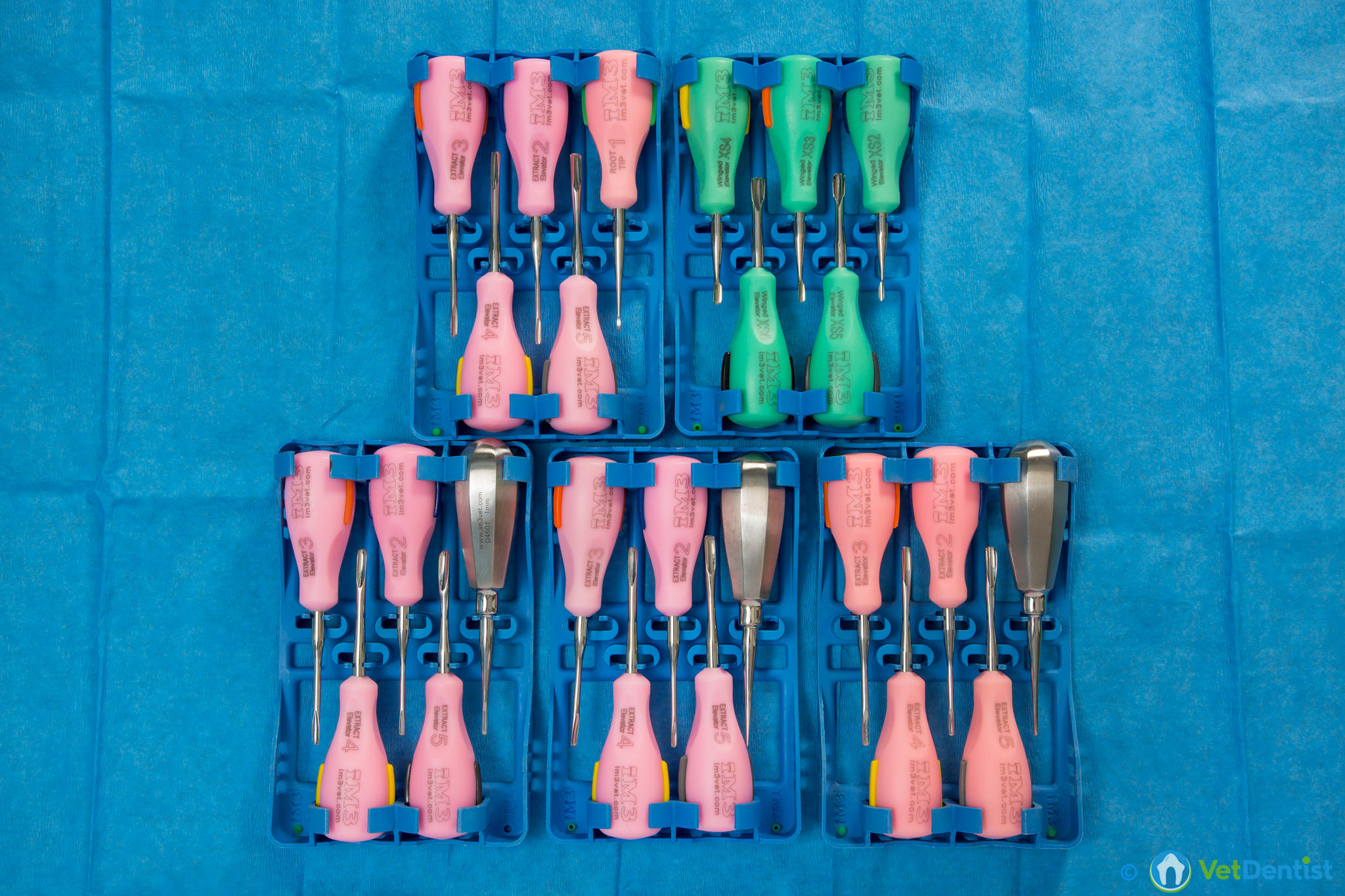
One of the key features to gentle surgical extraction is the proper use of luxators and elevators. These are designed to sever and break down the periodontal ligament, allowing a tooth to be extracted. It is imperative that these instruments are kept sharp. VetDentist has invested in a wide range of different instruments, which can be used in different situations. We also have enough of them to ensure that sharp instruments are always available to minimise trauma to our patients.
Sharpening Unit
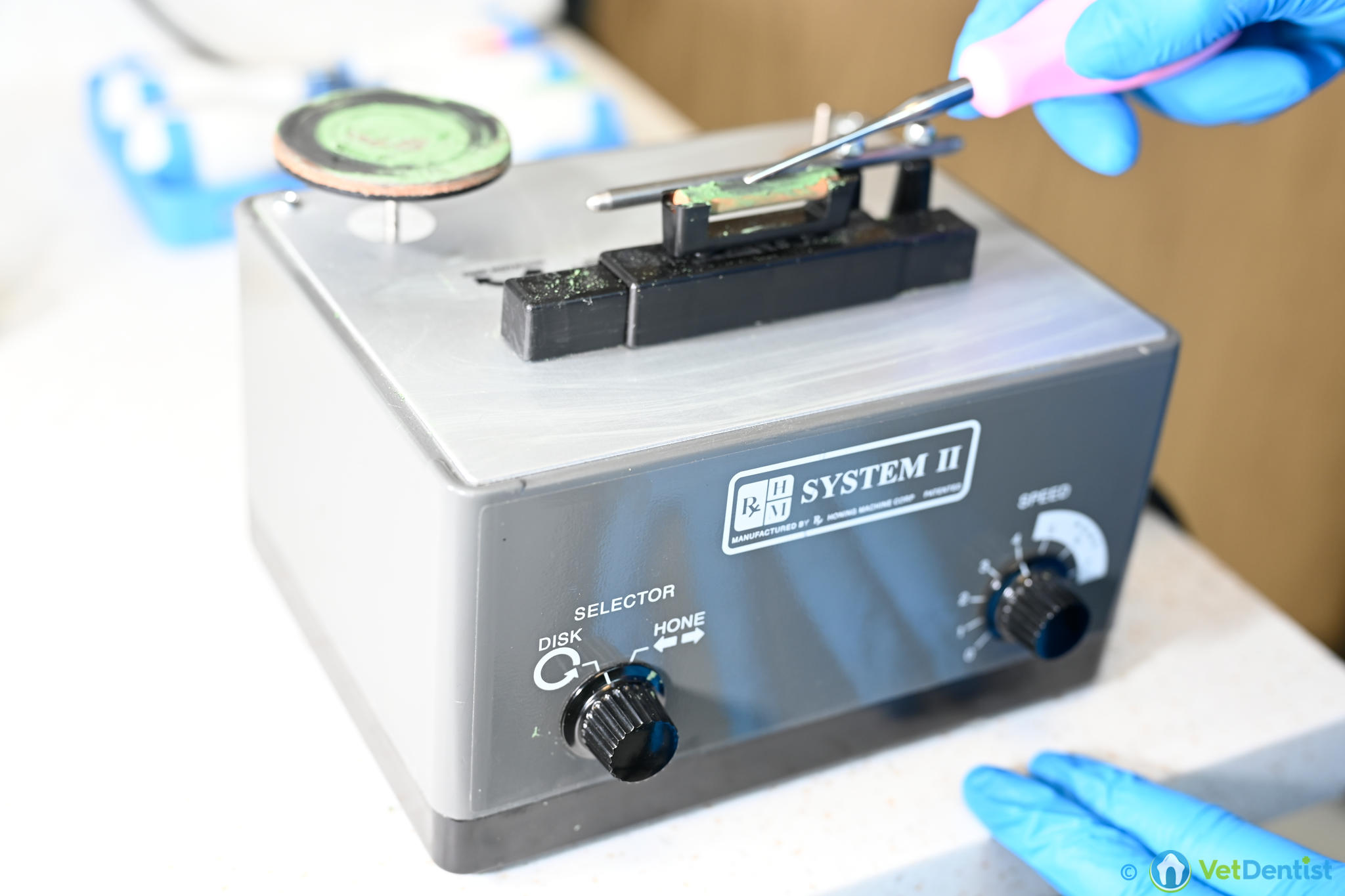
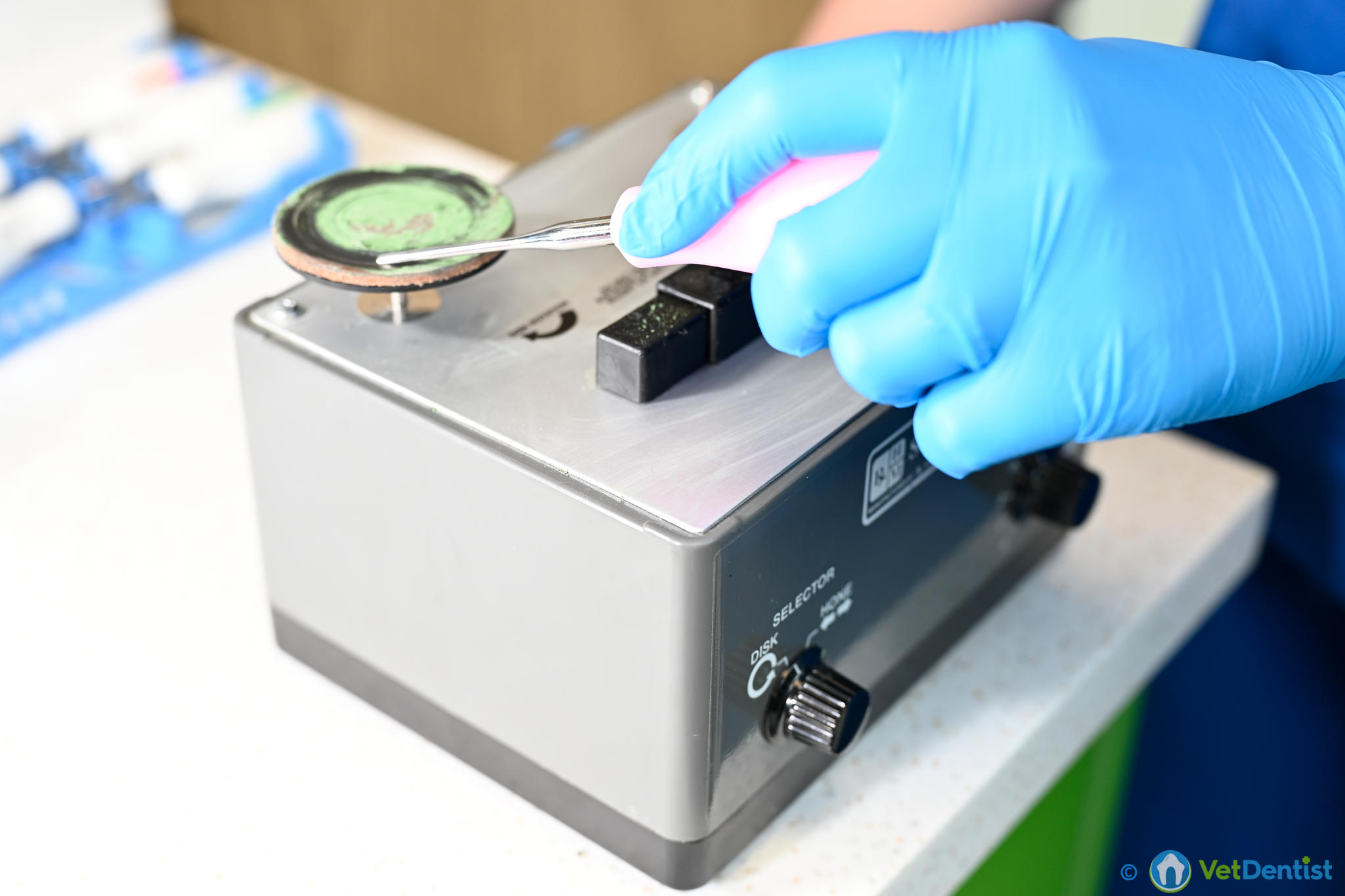
For the dental instruments to work properly – be they Luxators, Elevators, Periosteal Elevators, they must be sharp. Blunt instruments cause a lot more tissue trauma – both by simply being blunt, but also because they end up with more force being applied – this can lead to slipping and damaging adjacent tissues. By sharpening (or really “honing” – just fine tuning the blades) instruments regularly, we try and ensure that the best patient care is provided.
Dental Surgical Wire Kit

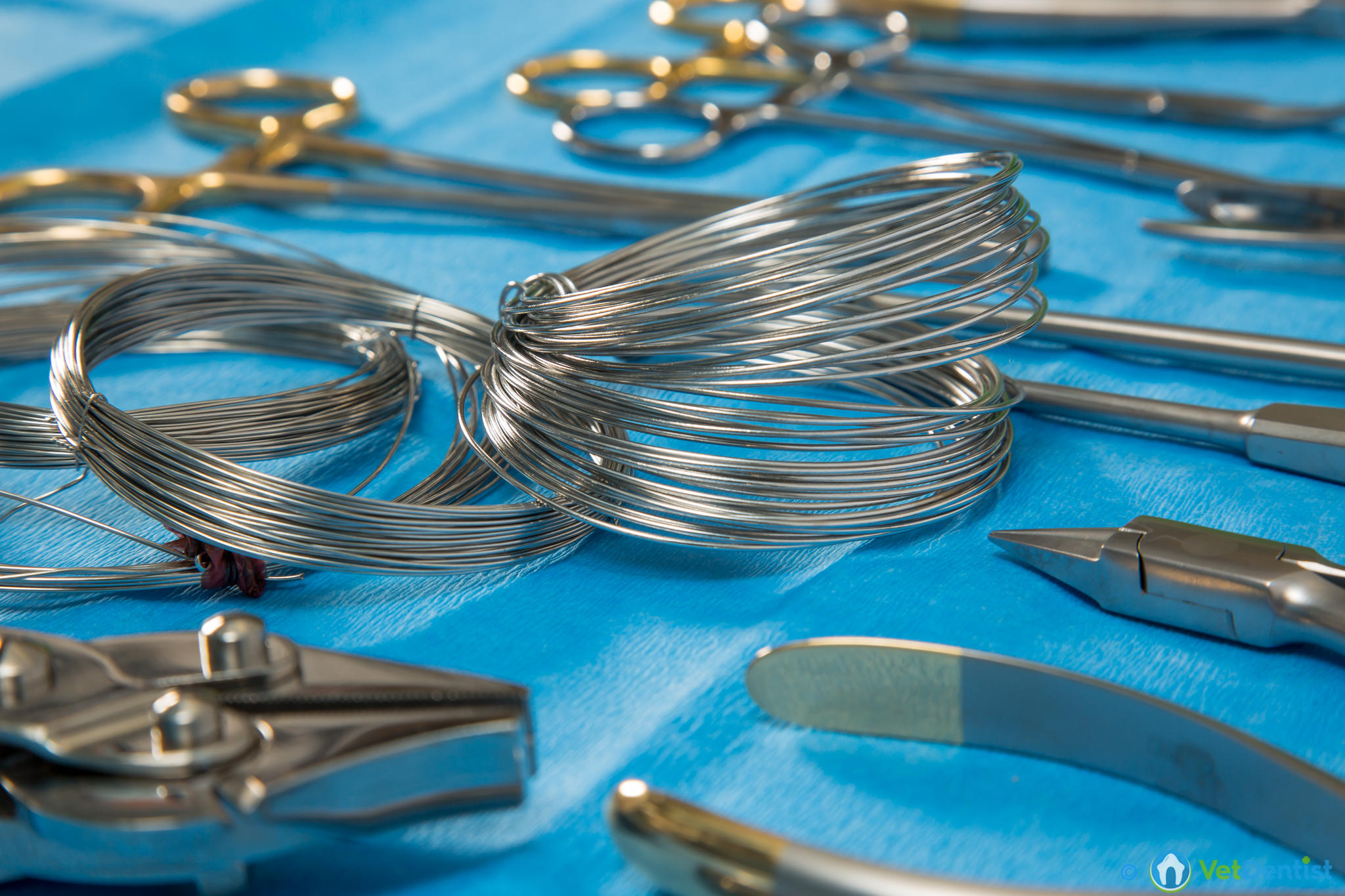
Surgical wire is often used to help in repair of facial trauma, fixing bones – but also stabilising teeth. Having a kit with dedicated wire handling instruments – designed to form curves, to cut and to twist wire appropriately makes a huge difference.
Dental Surgical Osteotome Kit

Whilst we use the Piezotome and the surgical saws for the majority of our bone surgery, there are still times when handheld bone cutting instruments can achieve the best results. It can also provide an important back-up should the need arise!
Small Pet Dental Kit

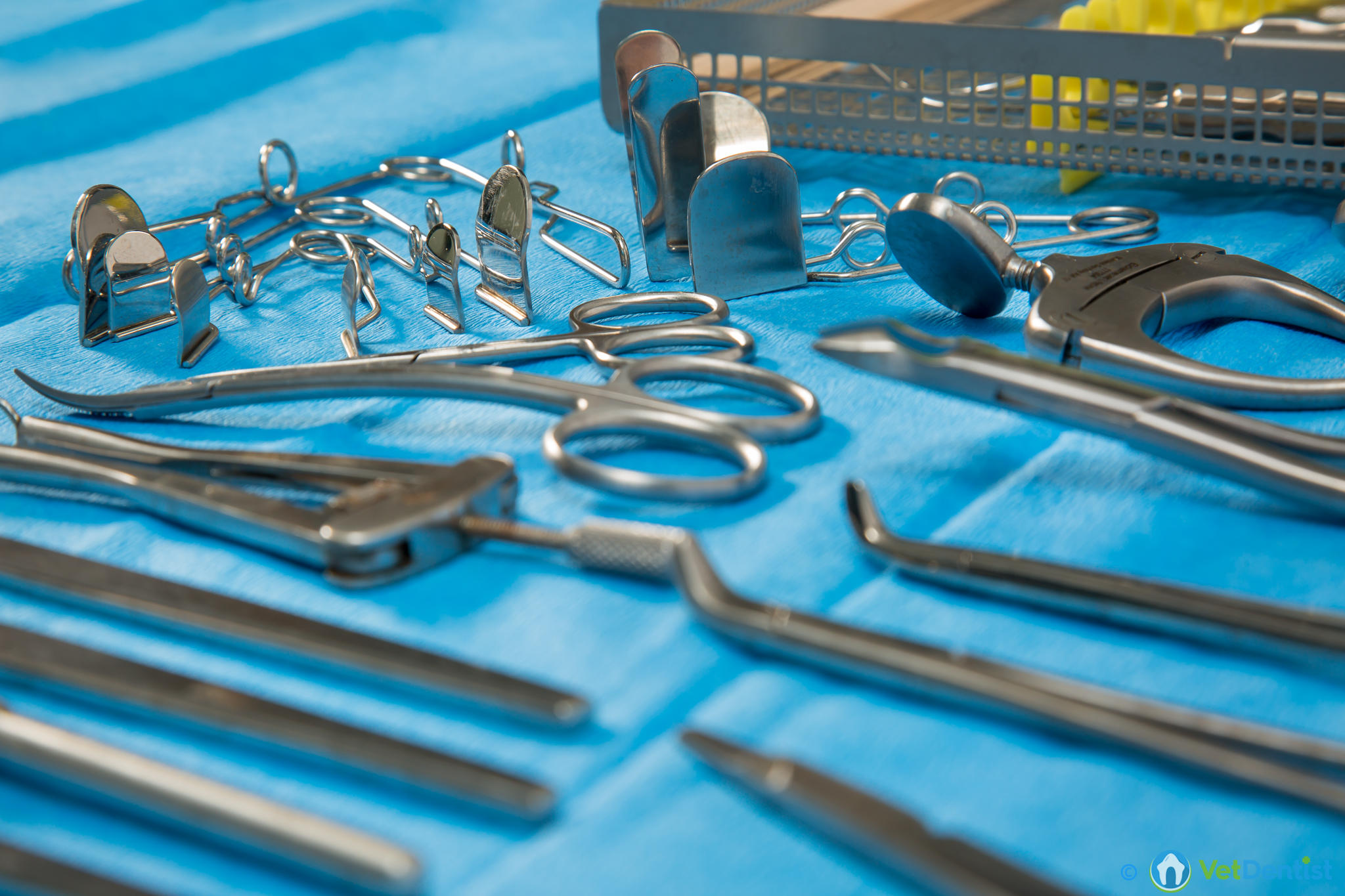

Rabbits, rodents and other small pets require dedicated instruments for their dental needs. One of the important features is being able to gain access and to visualise the dental arcades. A range of special mouth gags and speculae help make providing effective dental care possible.
Endodontic Kits
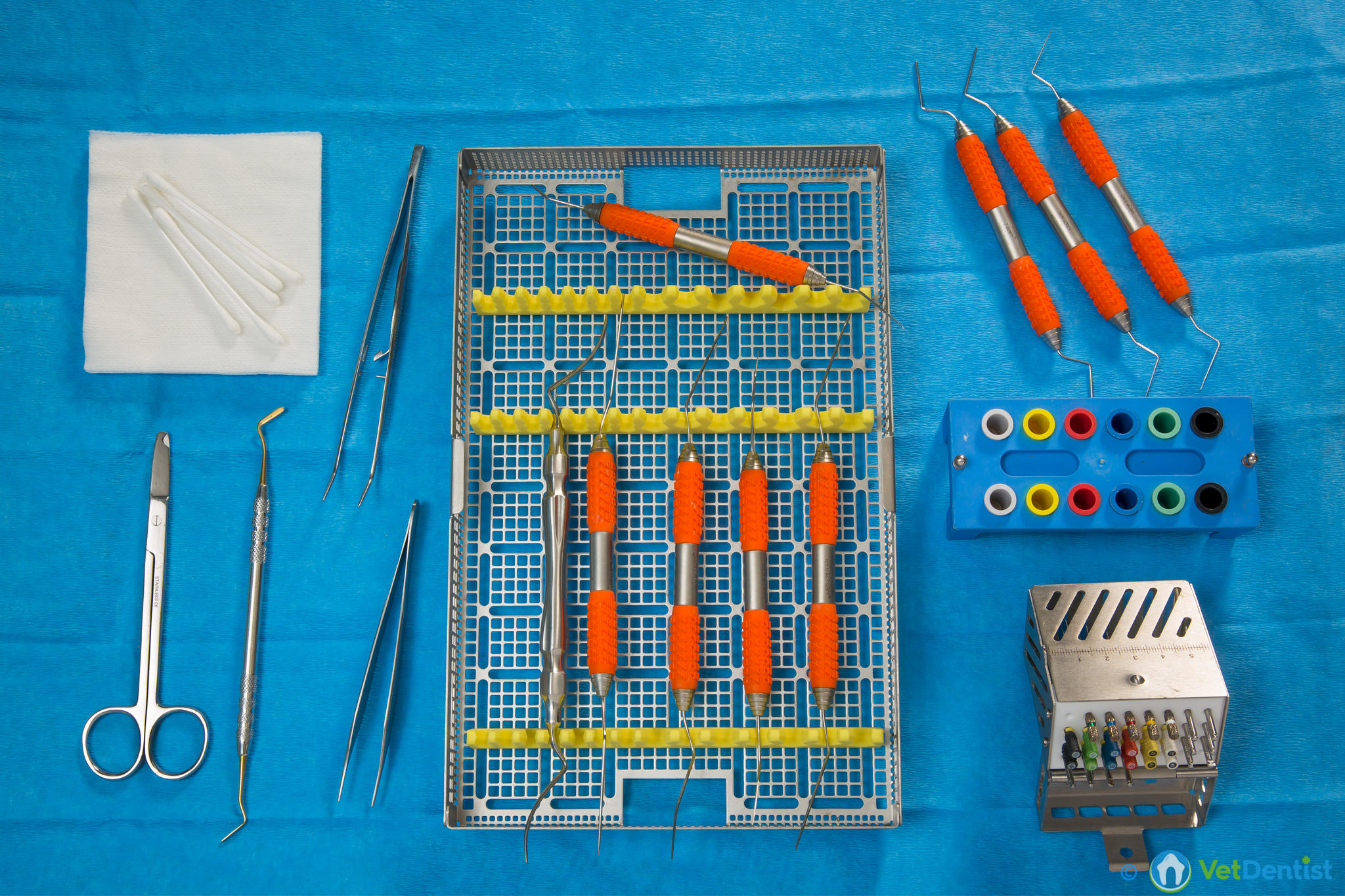
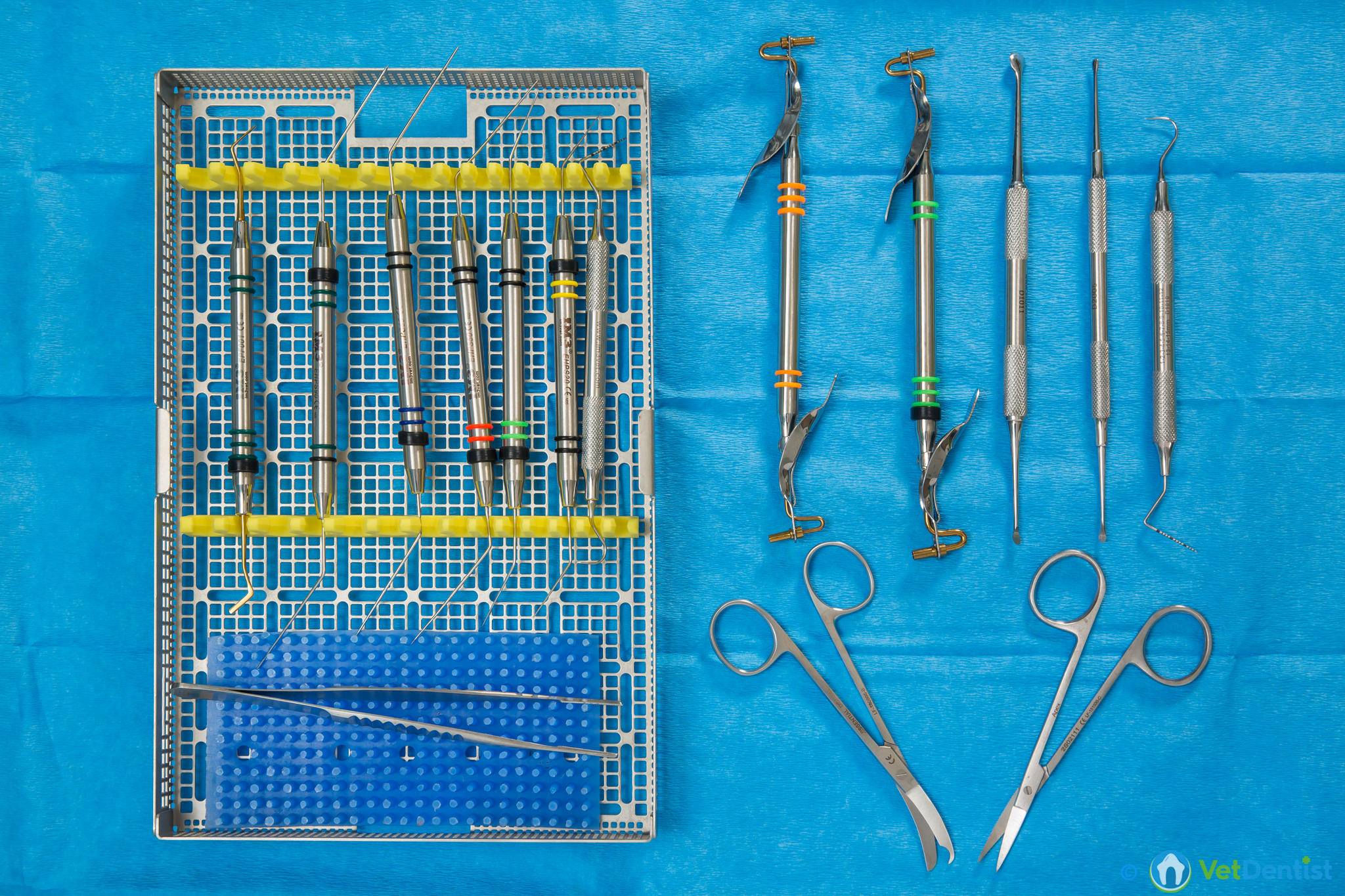
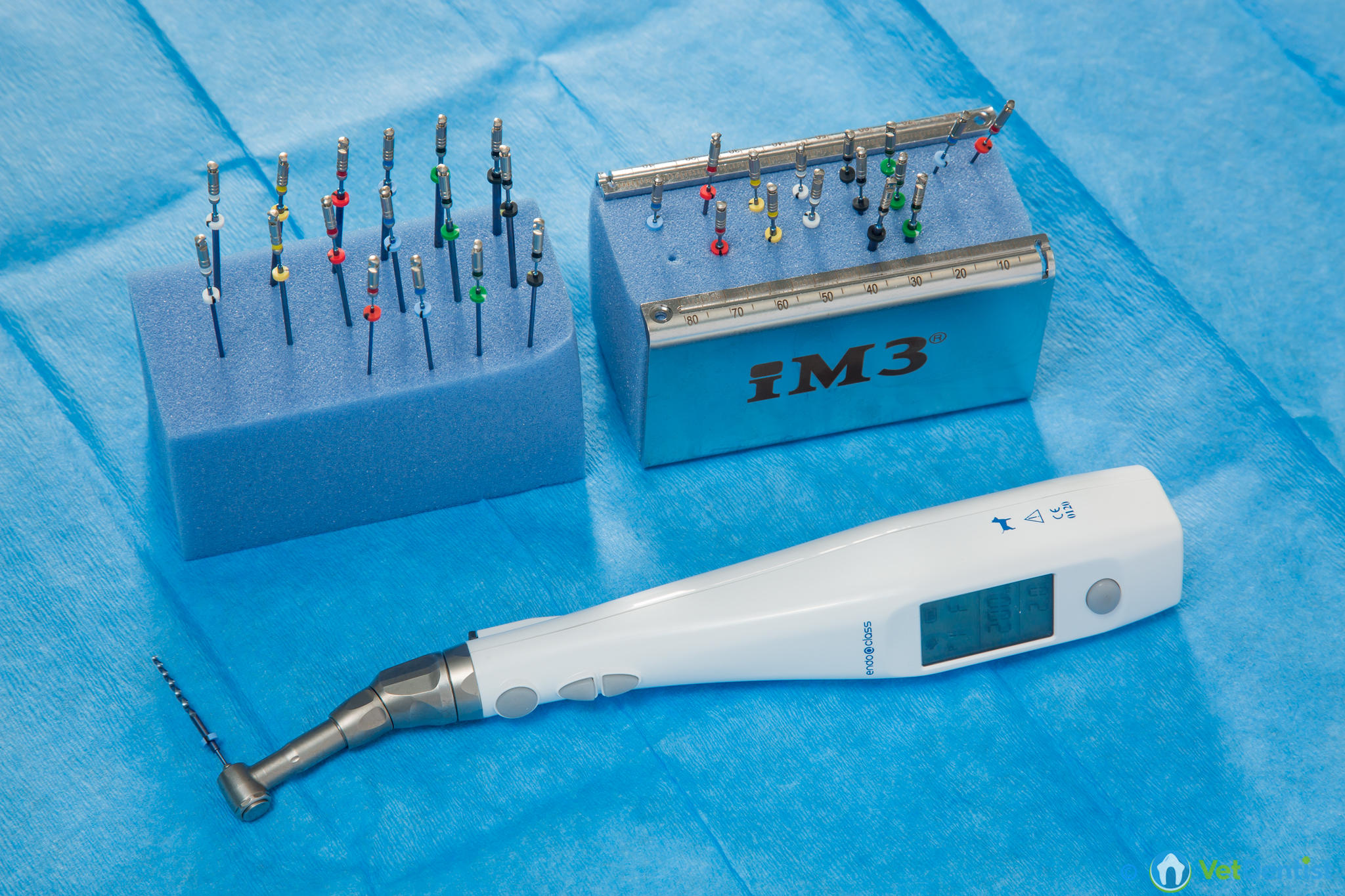
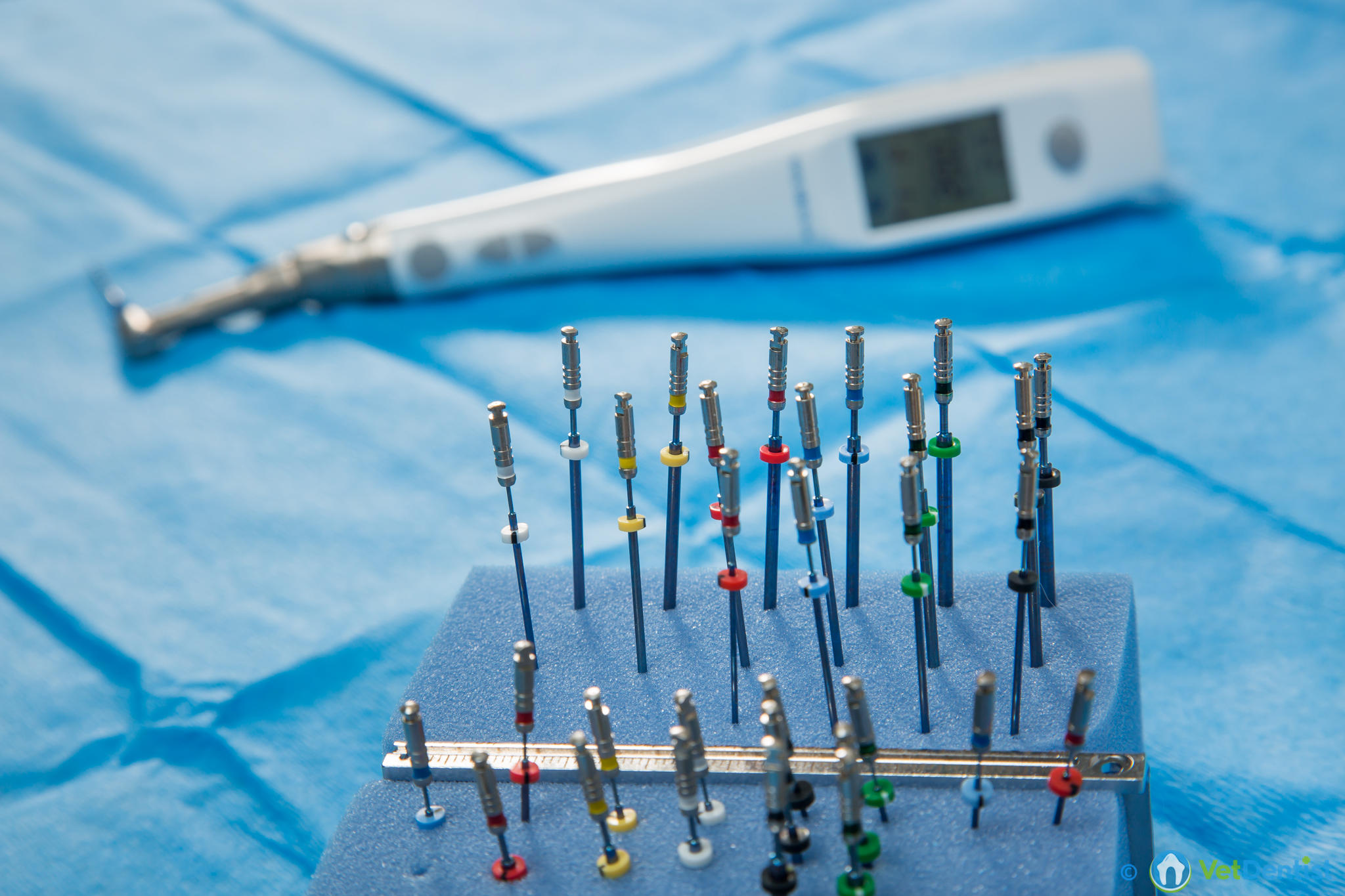
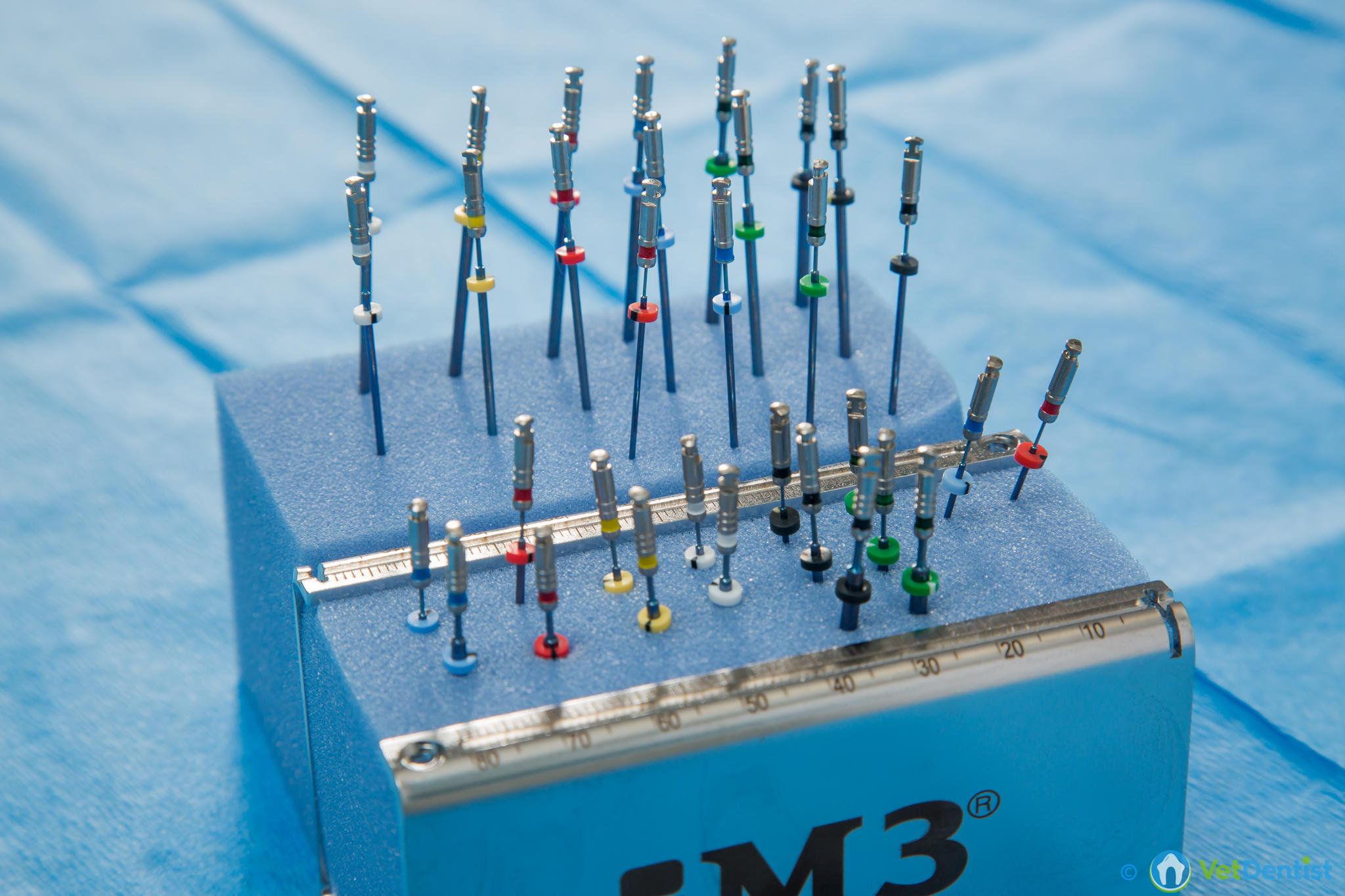

Endodontic procedures (such as root canal treatments) require a range of special instruments. Because of the length and size of the roots of many of our patients, dedicated veterinary instruments are required. Over the years Bob Partridge has explored a huge variety of mechanical aides to cleaning and preparing root canals. A new system from iM3 does seem to have many advantages. One of the most important factors in achieving a successful root canal treatment is the chemical sterilisation of the pulp chamber. Heating the cleaning fluids dramatically increases their efficiency – so VetDentist has been using water bath heaters for many years.
IV Fluid Pumps
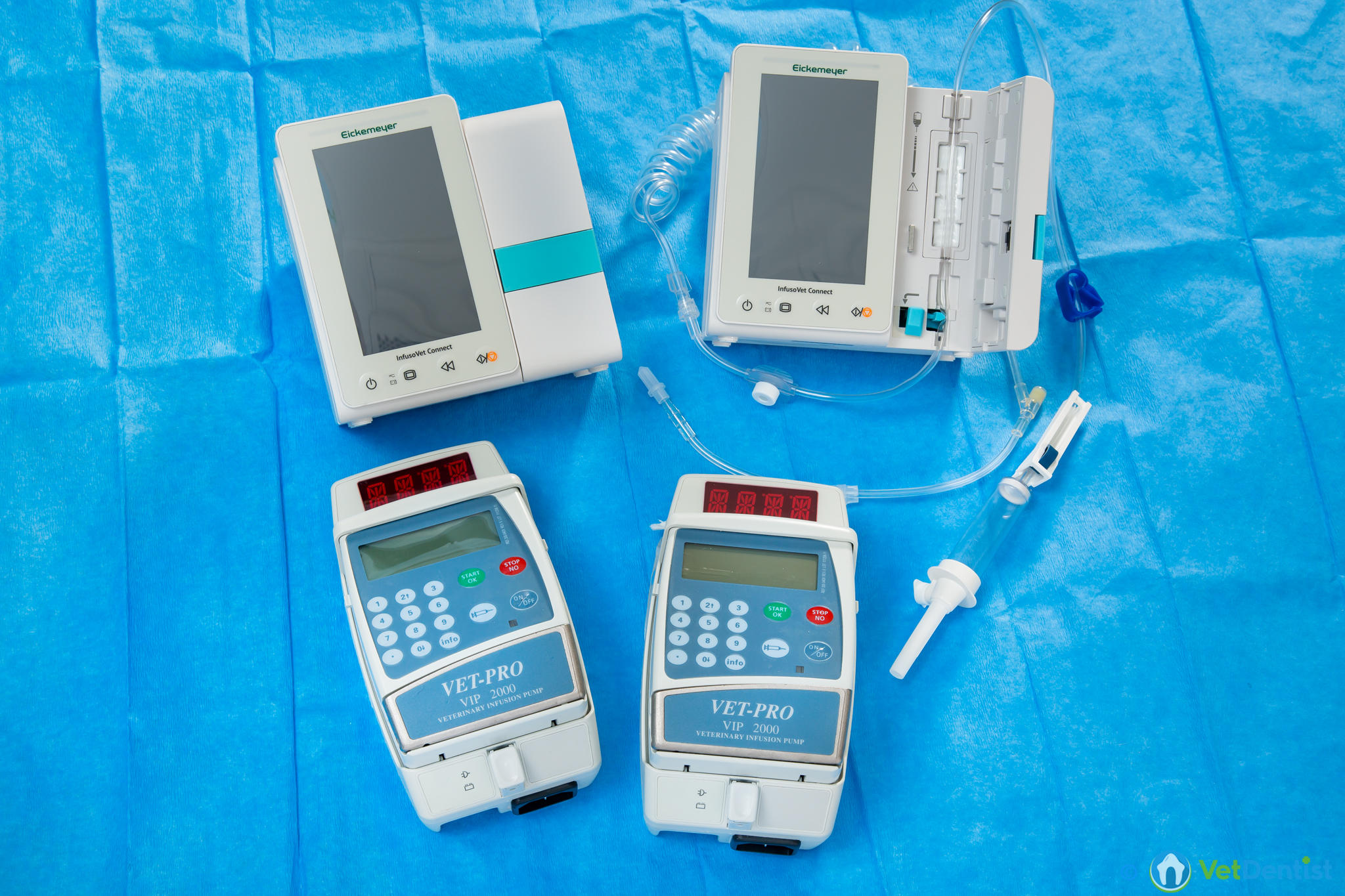


One of the most important aides to patient safety is the provision of appropriate intravenous fluid support. We have invested in five electronic IV Fluid pumps to ensure that we never have to rely on simply counting drips to ensure that the correct fluid rates are being delivered. The pumps not only provide a consistent rate of fluid support, but will also sound warnings if there are any problems, such as blockages or bubbles in the system. Patient safety is at the forefront of what we do.
Anaesthetic Patient Monitoring
Whilst our patients are anesthetised it is essential that they are closely monitored in order to maximise safety. VetDentist has invested in state-of-the-art monitors to help keep a track on patients’ heart beats, ECG traces, respiration, blood pressure, temperatures, pulse oxygen (the level of oxygen supplied by the blood stream) and capnography (assessment of carbon dioxide clearance). We have not just one of these monitors – but three! This ensures that every patient is fully monitored throughout their anaesthetic – with an extra machine in reserve for recovering patients or in the case of failures. Additionally, we have other monitors available for respiration and pulse oxygen monitoring for use in kennels or other situations. Patient safety is at the core of the service we provide.
Patient Warming
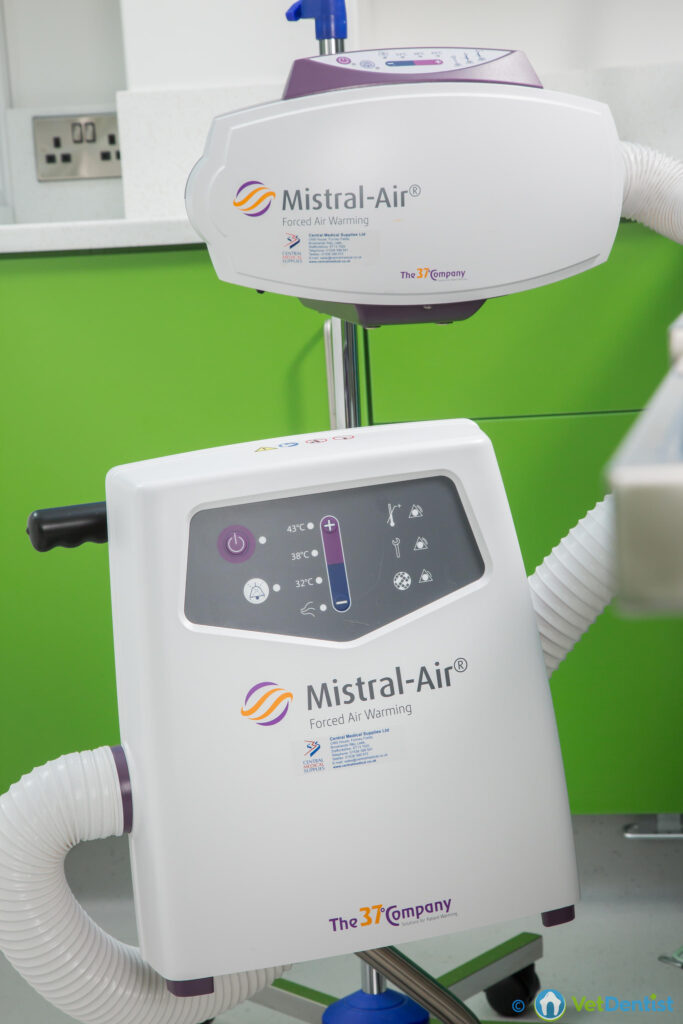
During anesthesia patients have a poor control of their body temperature. Additionally smaller patients are at greater risk of falling body temperatures. In order to minimise risks for our small veterinary patients we employ body warmers during all anaesthetics. We have found the gentlest method of preventing heat loss is to cocoon patients in a blanket of warm air. This avoids the danger of lying on hot spots on heated beds for example. Essentially our body warmers are like very large hair dryers connected to a blanket which embraces the patient within a bubble of warm air. The blankets are either disposable or fully washable in order to maintain cleanliness and hygiene.
Surgical (dry) Suction
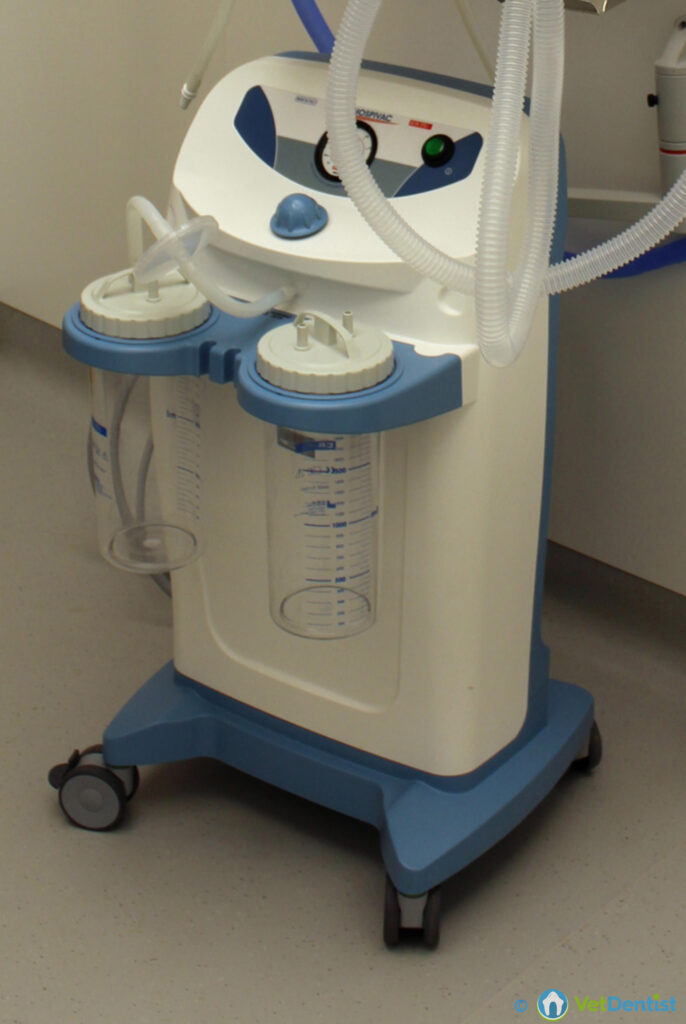
Surgical suction is used to help clear operative fields of blood or other fluids. For the majority of our dental procedures the Dental (wet) Suction performs perfectly adequately. However, we have future proofed the premises by installing pipework to allow a central vacuum pump to be installed in the future. In the meantime, we have a small portable vacuum system that provides excellent surgical suction facilities when needed.
Pharmacy Fridge


Whilst VetDentist does not need to store many medications that require controlled temperatures (typically vaccines fall into this category) – we do have some. Additionally our laboratory test kits need to be maintained within set temperature ranges to ensure accuracy. This is why we have invested in the Labcold temperature regulated pharmacy fridge. The fridge not only operates within strict boundaries – but it also maintains a log of temperatures in order that any untoward events can be alarmed and properly investigated.
Operative Seating
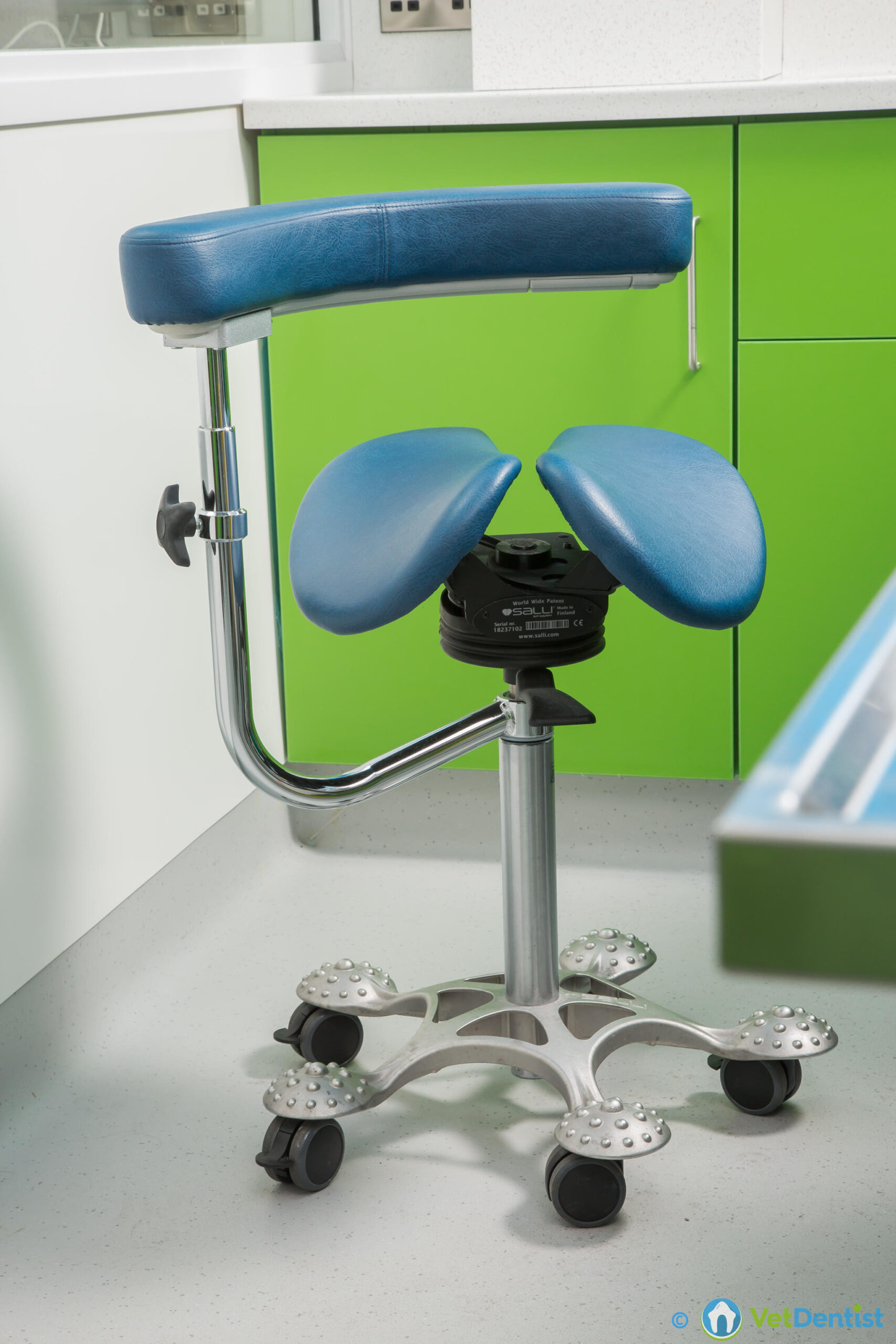


Many of our procedures can be lengthy. In order to help our team avoid strain injuries or suffer from lumbar problems we have a range of saddle type adjustable seats. These help the surgeons stay focussed on the job in hand – rather than falling victim to aches and pains.
Decontamination
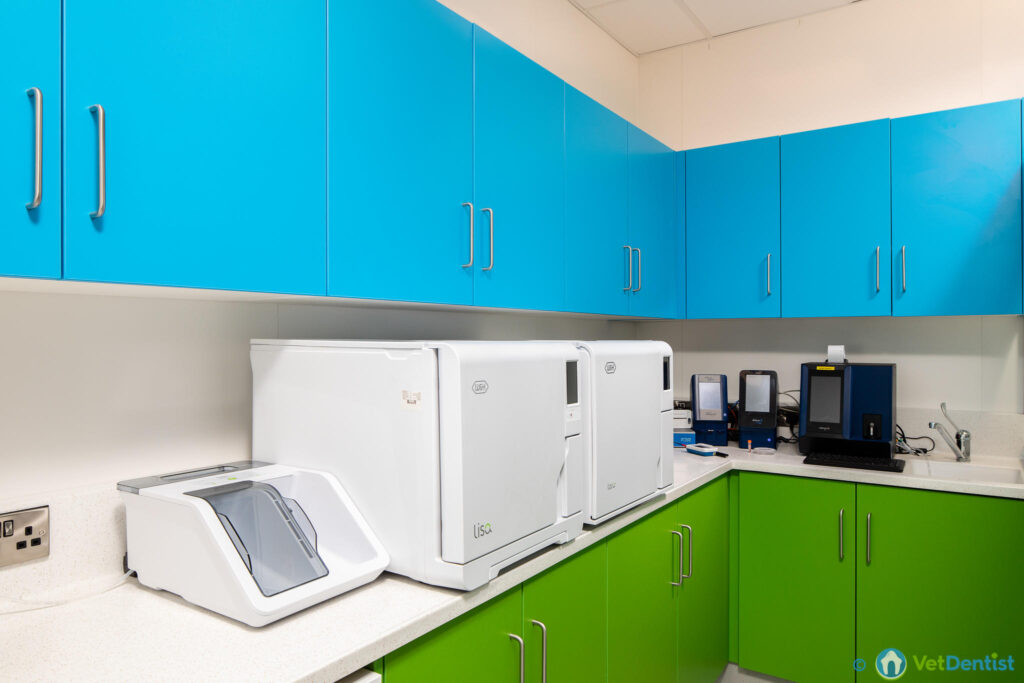
Decontamination is the term used for taking soiled instruments and processing them to provide sterile instruments ready for the next procedure. In veterinary practice this process goes largely unregulated or controlled. At VetDentist we have adopted the standards used by human dentists to ensure the safe supply of instruments for use in our patients. This extends to the level of ensuring that ventilation airflows pass from the clean instrument areas to the contaminated ones – rather than risking any infection spread by a reverse flow. Adopting the standards required of dentists has many benefits for our team as well. Nurses no longer need to spend hours scrubbing instruments with brushes, or risk injuries from cleaning sharp scissors. The use of the most modern, highest quality equipment not only saves nurses time – but improves the quality of their working environment – whilst also doing the job better! The decontamination process consist of an initial cleaning, use of the handpiece cleaner and lubrication system (Assistina), then a high temperature washer-disinfector to thoroughly clean instruments, the sterilisation using the Lara & Lisa Autoclaves. All of our W&H equipment provide traceability during the cycles – with any faults being notified and all of the cleaning and sterilisation cycles logged on our system.
Assistina HandPiece Maintenance
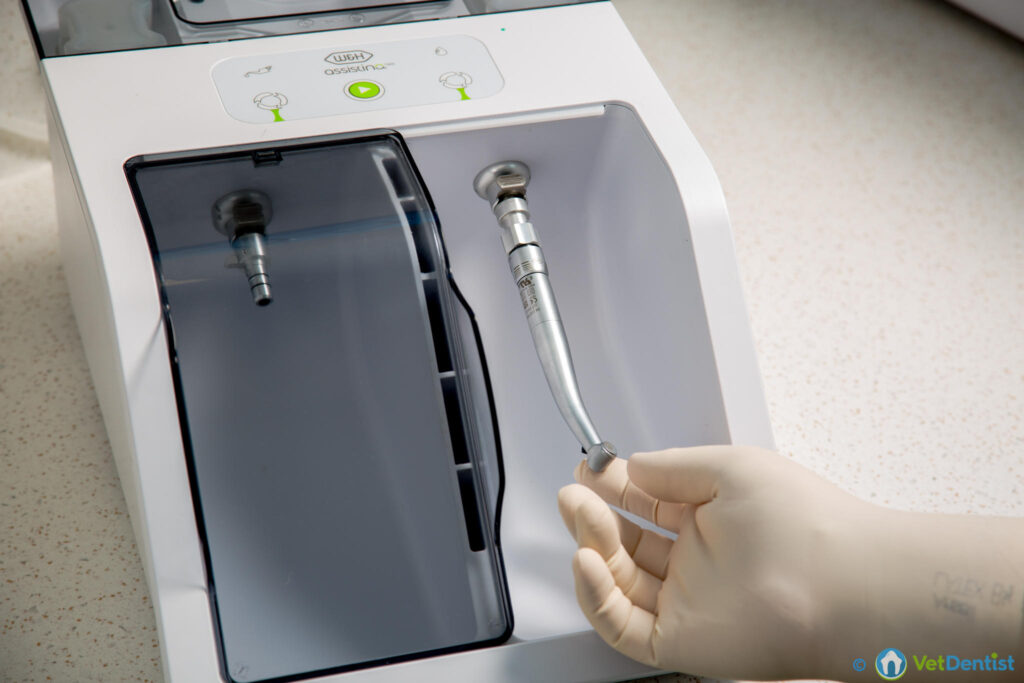
The Assistina is an instrument used to clean and lubricate our dental handpieces. The high quality handpieces we use can cost several hundreds of pounds (or more) each. They are therefore an investment we need to look after. The Assistina not only cleans the instruments but its specialised nebulisation system. he oil is nebulized before being blasted through the instrument at high pressure. This removes soiling from the inside of the instrument even more effectively. Thanks to the fine mist, every single part of the gear is wetted without having to set the gear parts into motion. All aerosols are removed from the process chambers through active suction and an integrated HEPA filter. See https://www.wh.com/en_uk/dental-products/sterilization-hygienic-maintenance/reprocessing-devices/assistina-twin
Teon Washer Disinfector


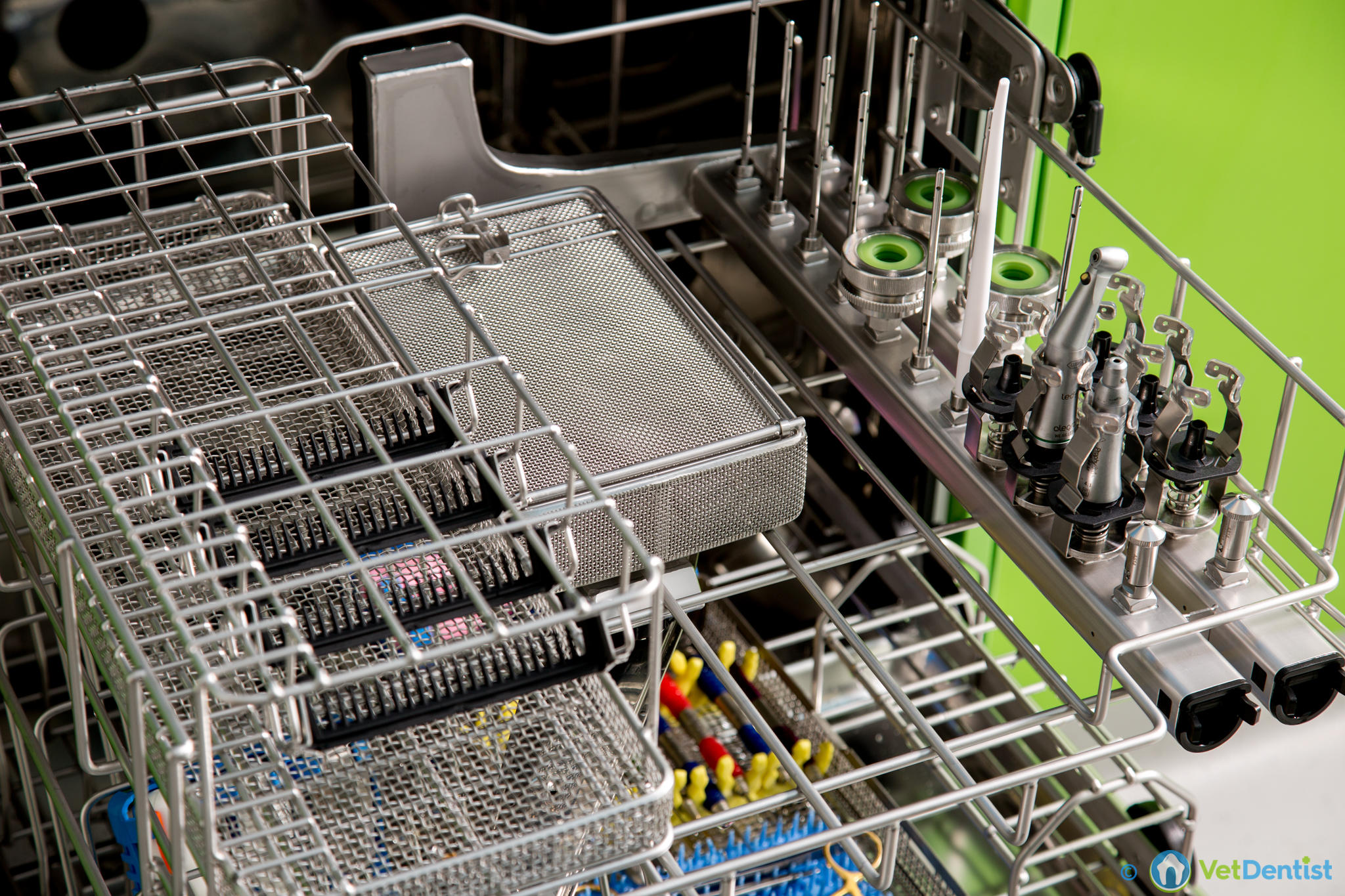

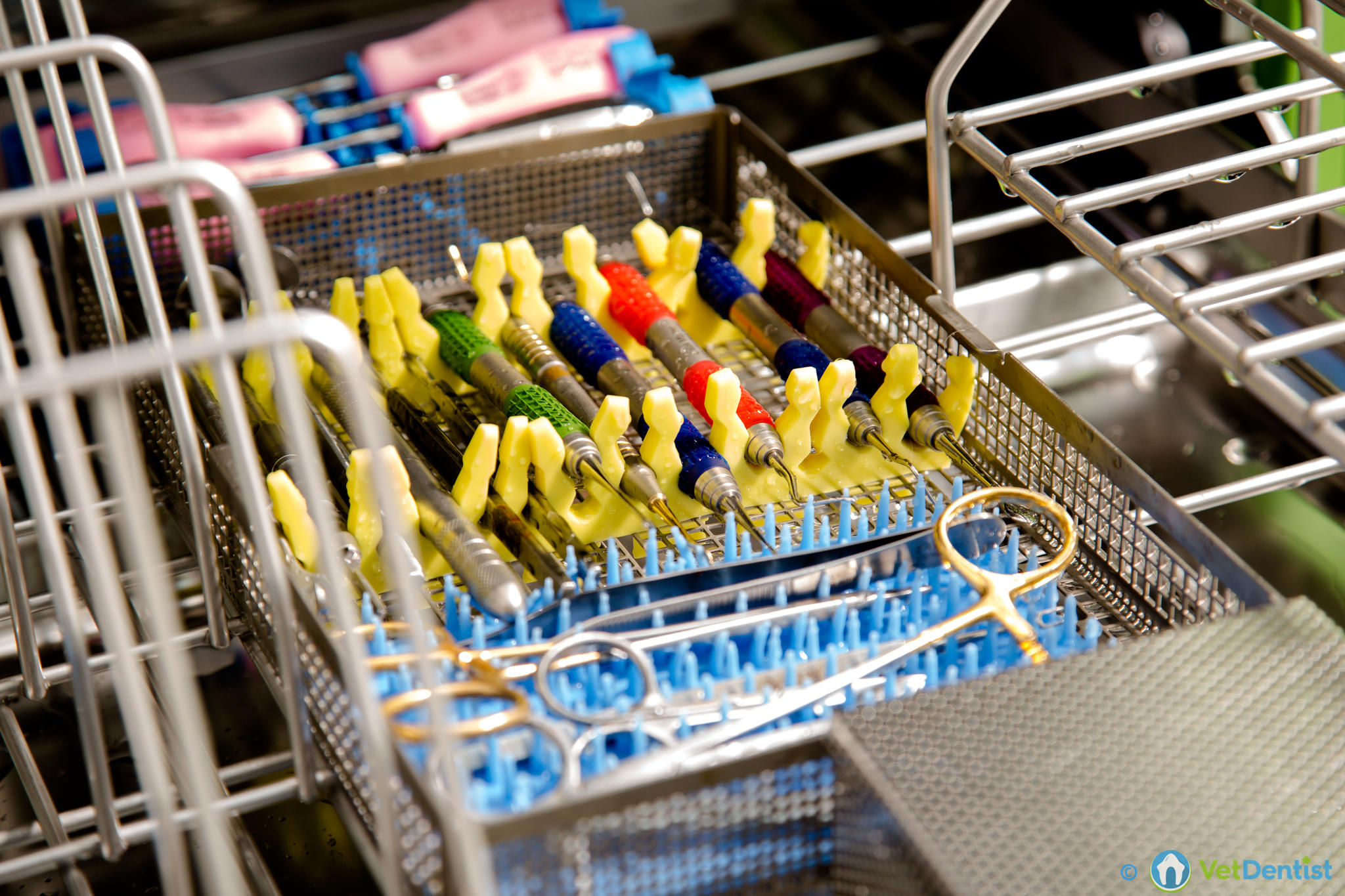

The Teon may look like a dishwasher – but it is far more than that! The instruments are cleaned at high temperatures and a range of separate programmes ensure that the best cleaning environment is provided for every instrument type. In addition the Teon has special adaptors which allow dental handpieces to be effectively cleaned. Teon reduces the risks of cross contamination between procedures. Additionally the Teon provides geat benefits for the team. Teon helps to minimise the risks of sharp injuries, it also frees up the team from the more mundane aspects of health care – keeping instruments clean! Washer Disinfectors have been an integral part of VetDentist’s practice for many years. We cannot understand why other veterinary practices are not embracing this technology to improve patient care and provide benefits for their teams. See https://www.wh.com/en_uk/dental-products/sterilization-hygienic-maintenance/thermal-washer-disinfectors/teon
Autoclaves – Sterilizers
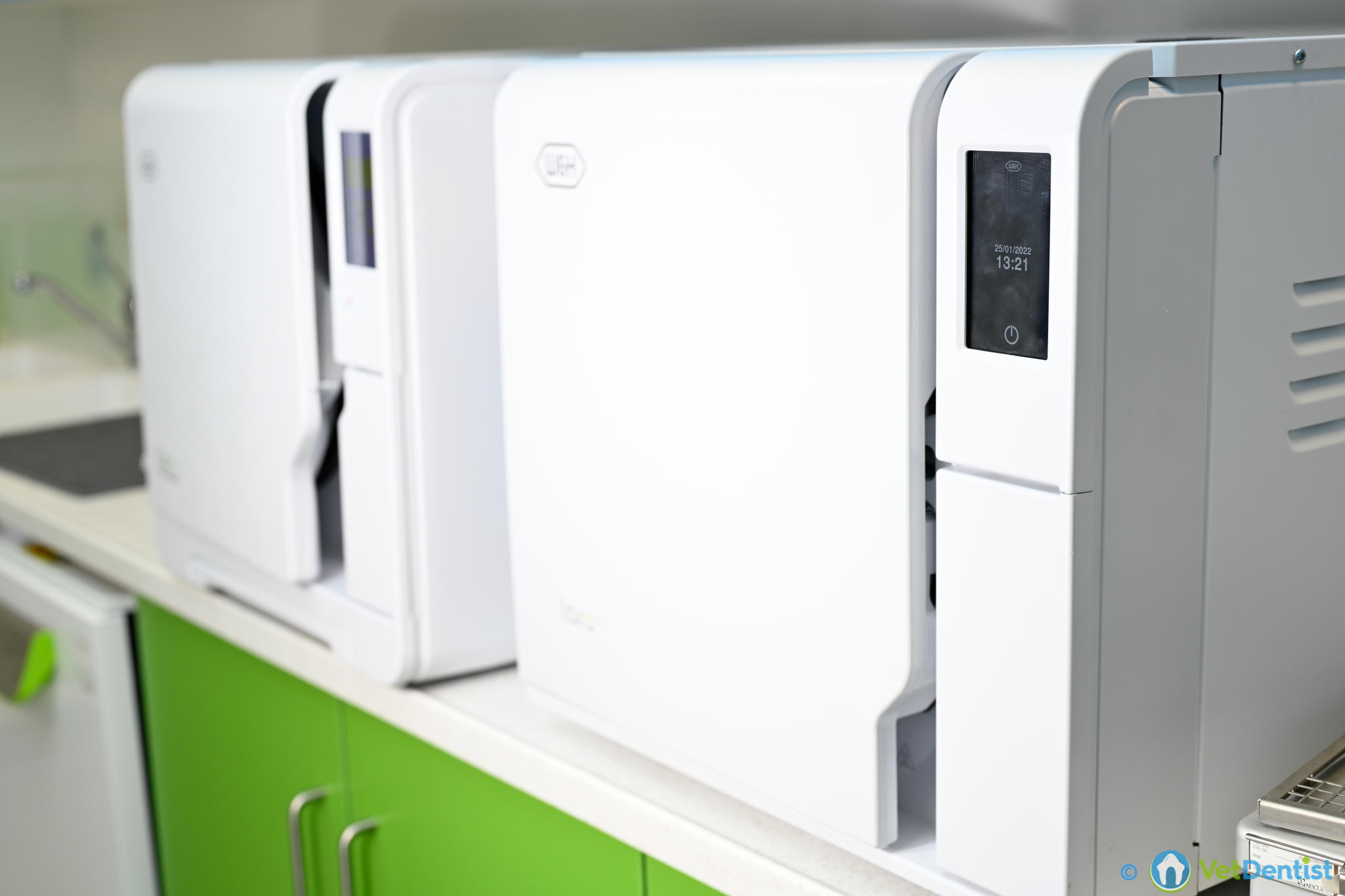
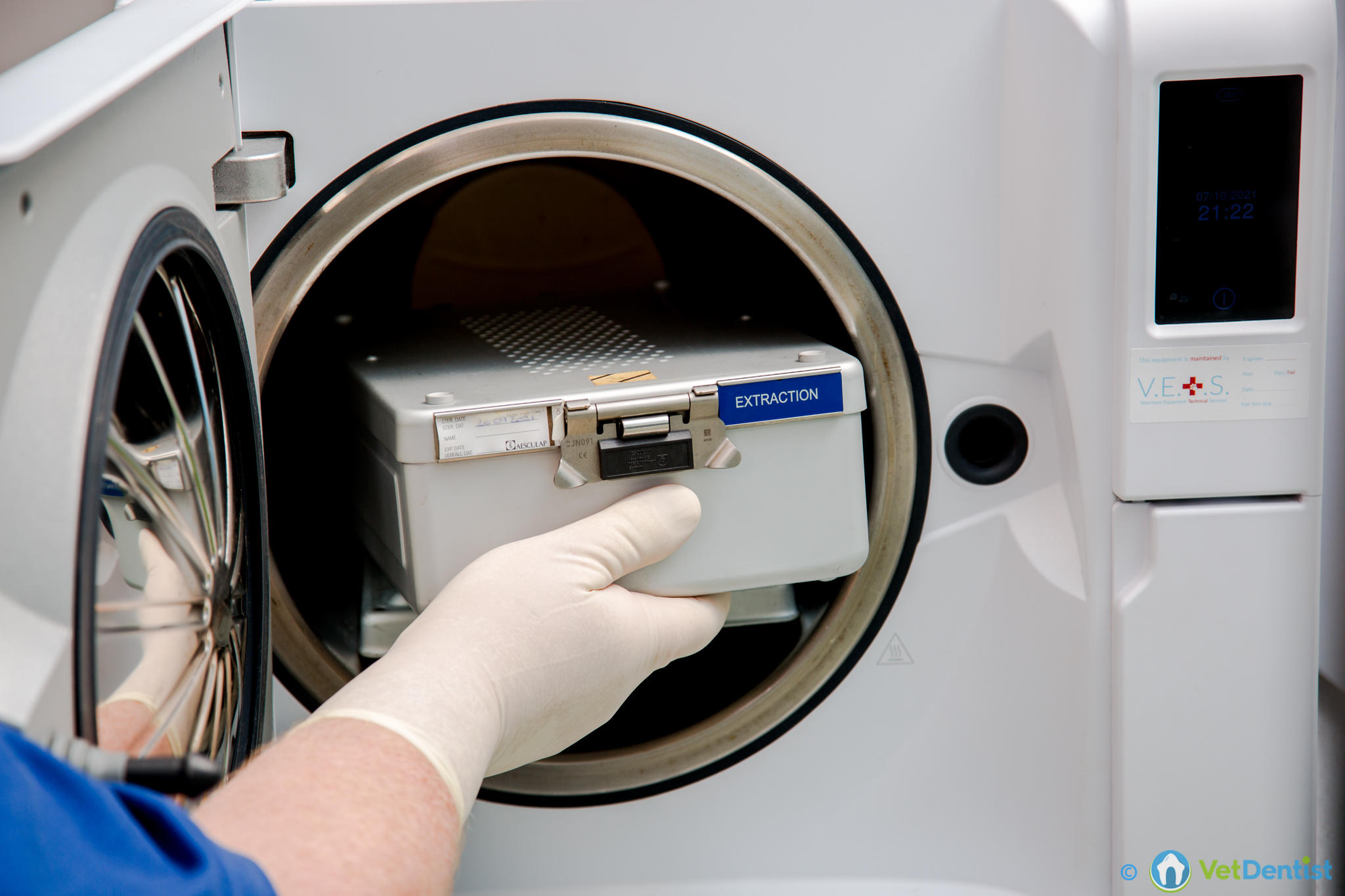


Ensuring that our instruments are sterile is an important factor in our patients’ well-being. We use two separate autoclaves, this means that we can minimise any downtime if a rapid turnaround of instruments is required. The autoclaves use a special pressure vessel to contain the instruments. This chamber is evacuated, removing all of the air. After this high pressure steam is injected under pressure, raising the temperature to over 135’ C. This is sufficient to kill off harmful bacteria and viruses. After this the chamber is evacuated again to remove the steam and the instruments are dried. All of the cycles are logged and recorded on our system. We can even monitor sterilisation progress on our smartphones! See https://www.wh.com/en_uk/dental-products/sterilization-hygienic-maintenance/sterilizers/lara-autoclave
Laboratory
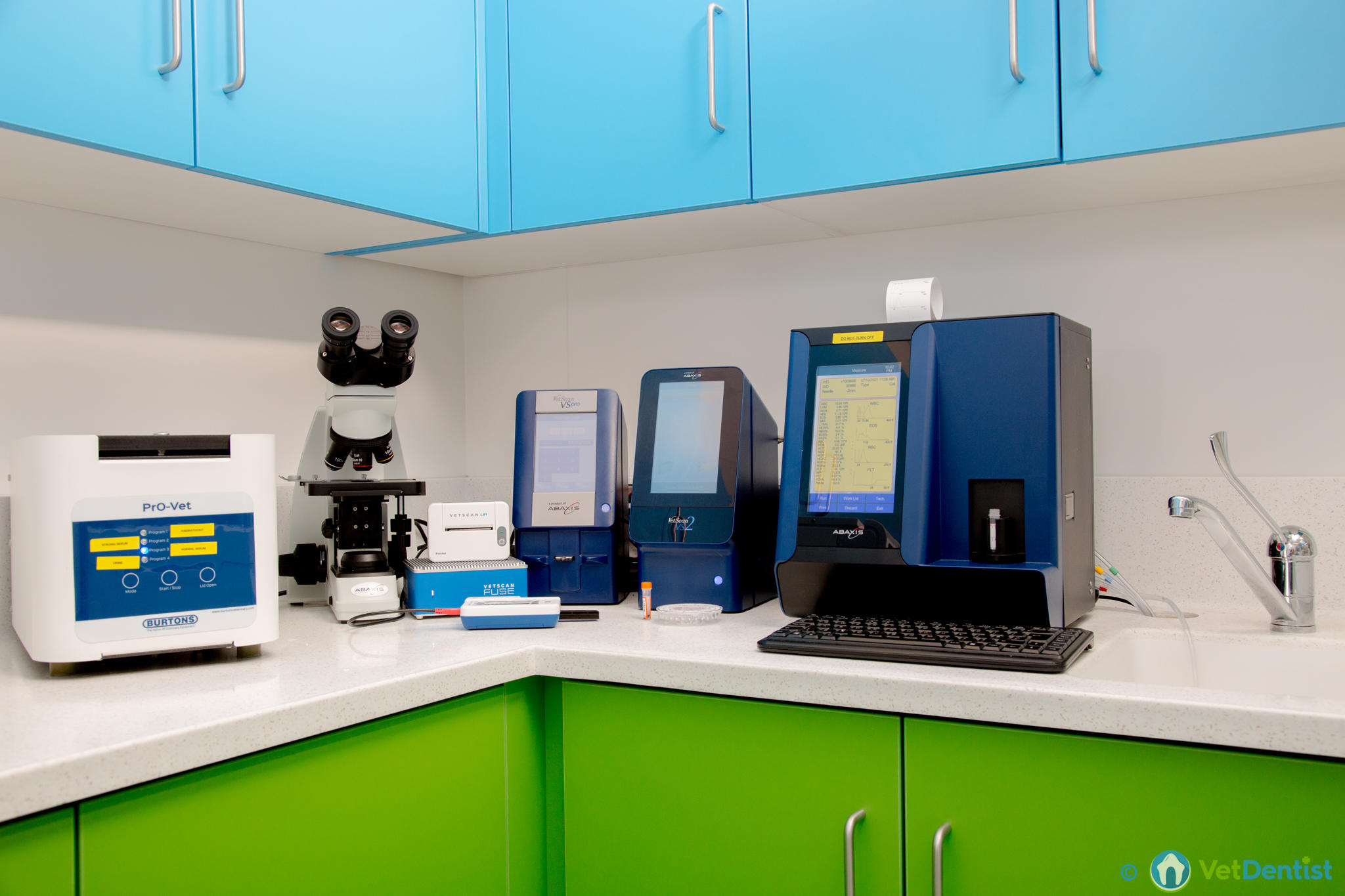

Our in-house laboratory allows us to run pre-operative tests on our patients. This can help identify liver or kidney problems which could have an effect on anaesthesia or drug choices. The systems were chosen for their accuracy and for the speed with which results can be obtained. Copies of the results are sent to the referring veterinary surgeons to update their patient records.
Centrifuge
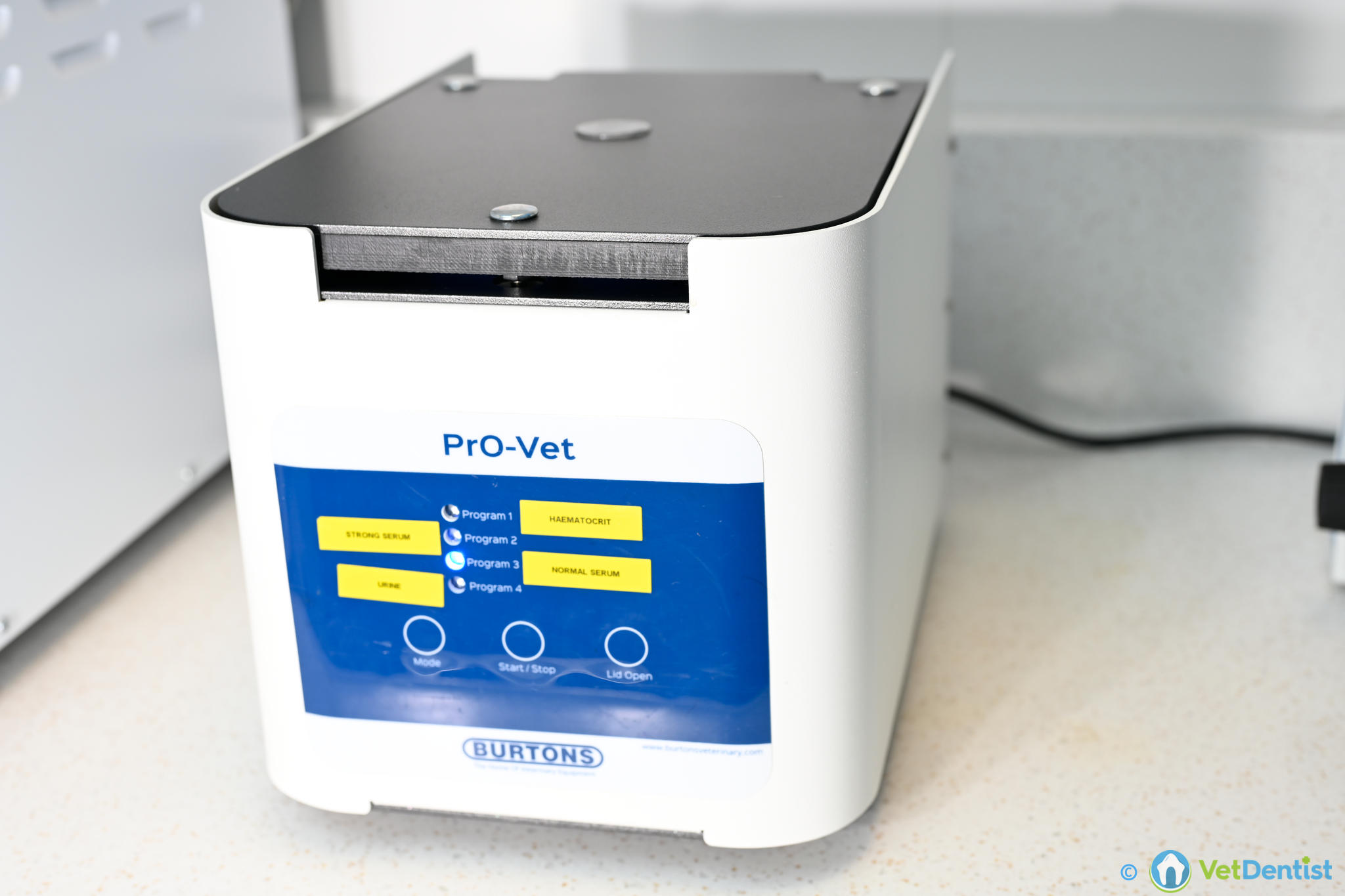

Prior to running the blood tests some of the samples need to be spun at very high speeds to separate the blood cells from the serum. Our high speed centrifuge accomplishes this and can also be used for urine samples. Another use we are developing is in helping to create products to assist in tissue healing for our patients.
Biochemistry


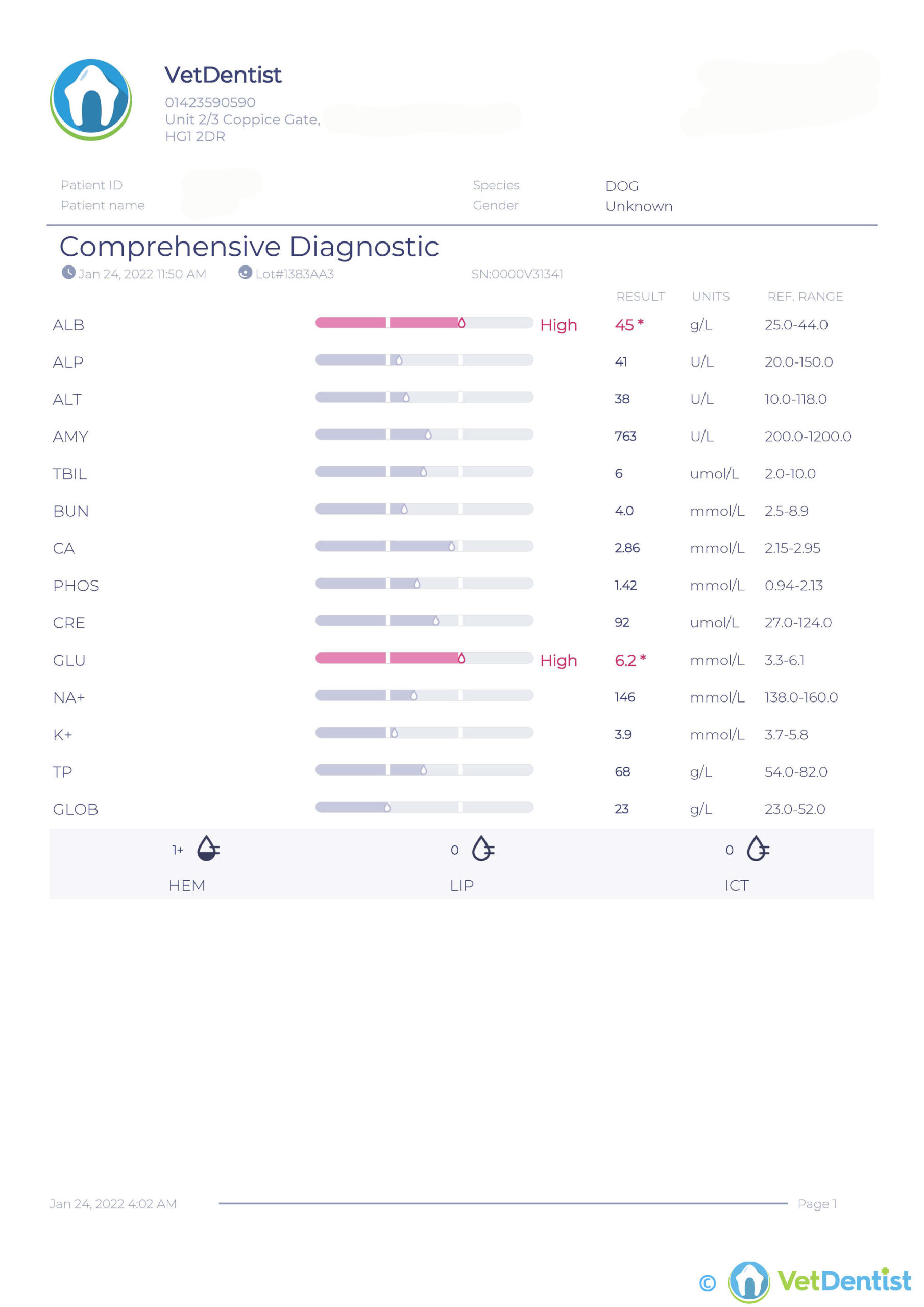
Analysis of the blood biochemistry and electrolyte levels provides and insight into how well the liver and kidneys are working. Dehydration can also be assessed. Whilst mini-profiles are commonly run, we have opted to run a full diagnostic screen for each of our patients. We want to minimise the risks of missing something important that could benefit our patient’s safety. The VETSCAN VS2 comes with built-in intelligent Quality Control (iQC), which completes hundreds of QC checks related to the sample, reagent and analyzer during every run to verify correct electronic and chemistry assay performance, offering complete peace-of-mind when it comes to accurate chemistry results.
Haematology


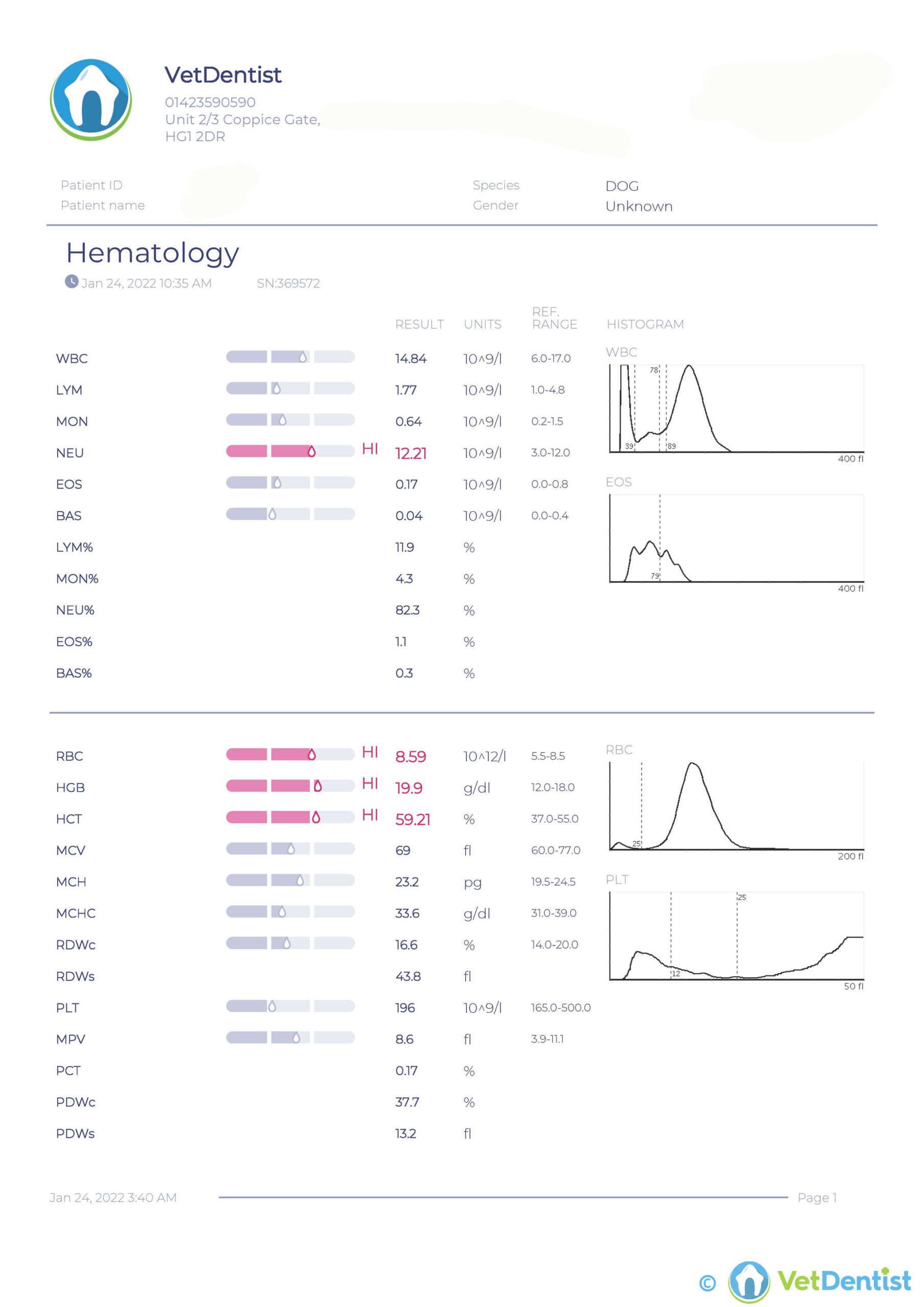
This machine provides a breakdown of the numbers and ratio of blood cells within the sample. This allows us to assess for dehydration, anaemia, the response to infection etc. Beyond the numbers, the VETSCAN HM5 provides a graphical display of blood cell populations via cellular histograms helping users to verify differential cell counts, help identify uncommon disease processes, and/or check the sample integrity at a glance.
Coagulation

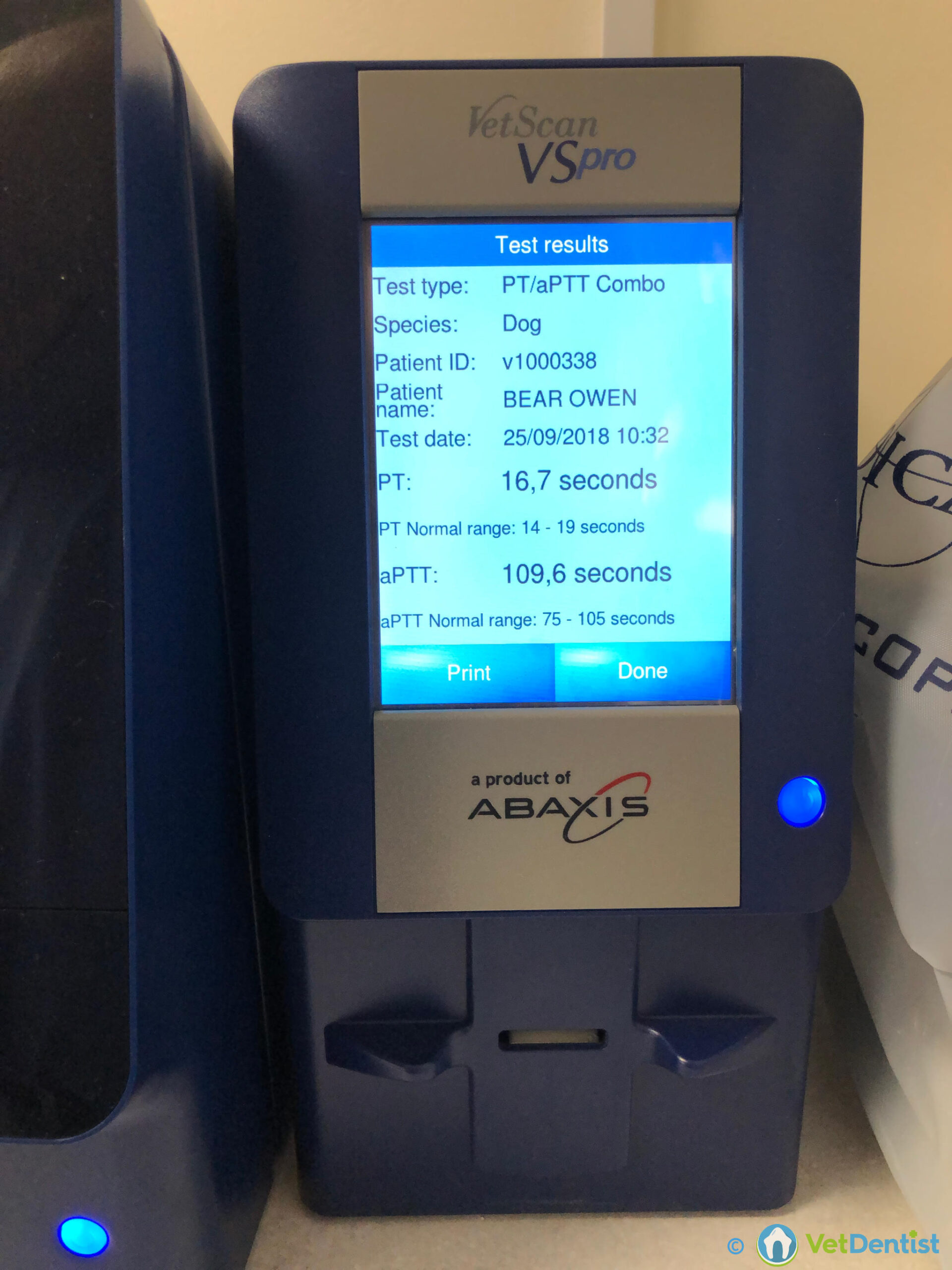

This machine allows us to assess our patient’s blood’s ability to clot. Some of our procedures involve multiple dental extractions, or even complex jaw surgery. Knowing that the blood will clot and we won’t be faced with uncontrolled bleeding is a great safety net. The VETSCAN VSpro provides PT and aPTT results that assist in the pre-anaesthetic setting and in the diagnosis of bleeding disorders, toxicity, disseminated intravascular coagulation, hepatic disease, as well as monitoring therapy and/or disease states.
Urine Analysis
Testing the urine is normally a qualitative process – “This colour spot on the strip looks roughly like a +1”. VetDentist has gone one step further The fabulous testing unit provides a proper colorimetric analysis of the dip stick test. This gives a much more accurate assessment of renal and liver functions. Urinalysis results delivered in 60 seconds for up to 14 analytes – including ketones, bilirubin, glucose, protein, pH, occult blood, microalbumin and urine protein:creatinine (UPC) ratio. The automated urinalysis test strip evaluation prevents subjectivity and errors caused by over or underdevelopment of manual urinalysis test strips
X-Ray Machine
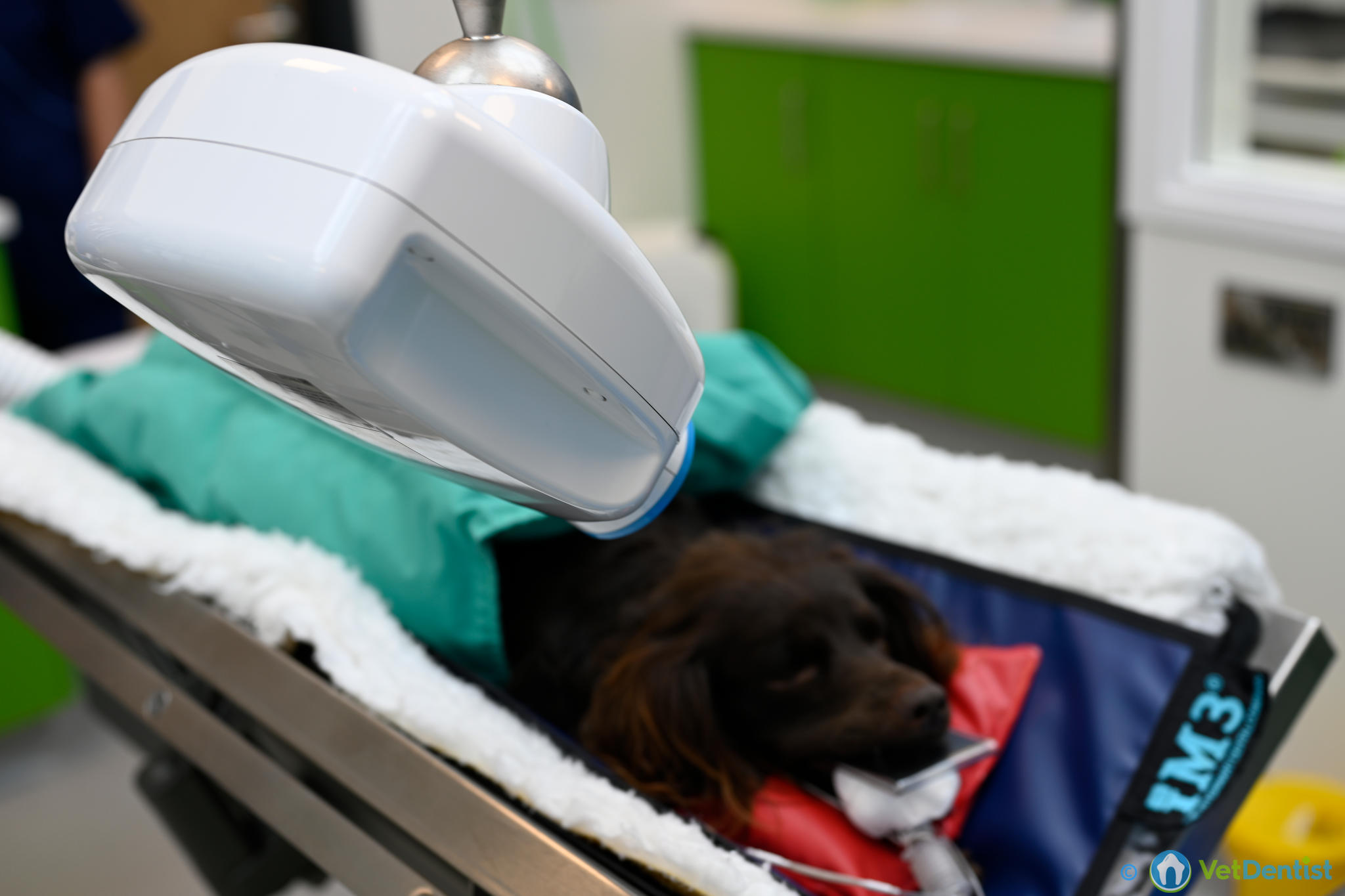

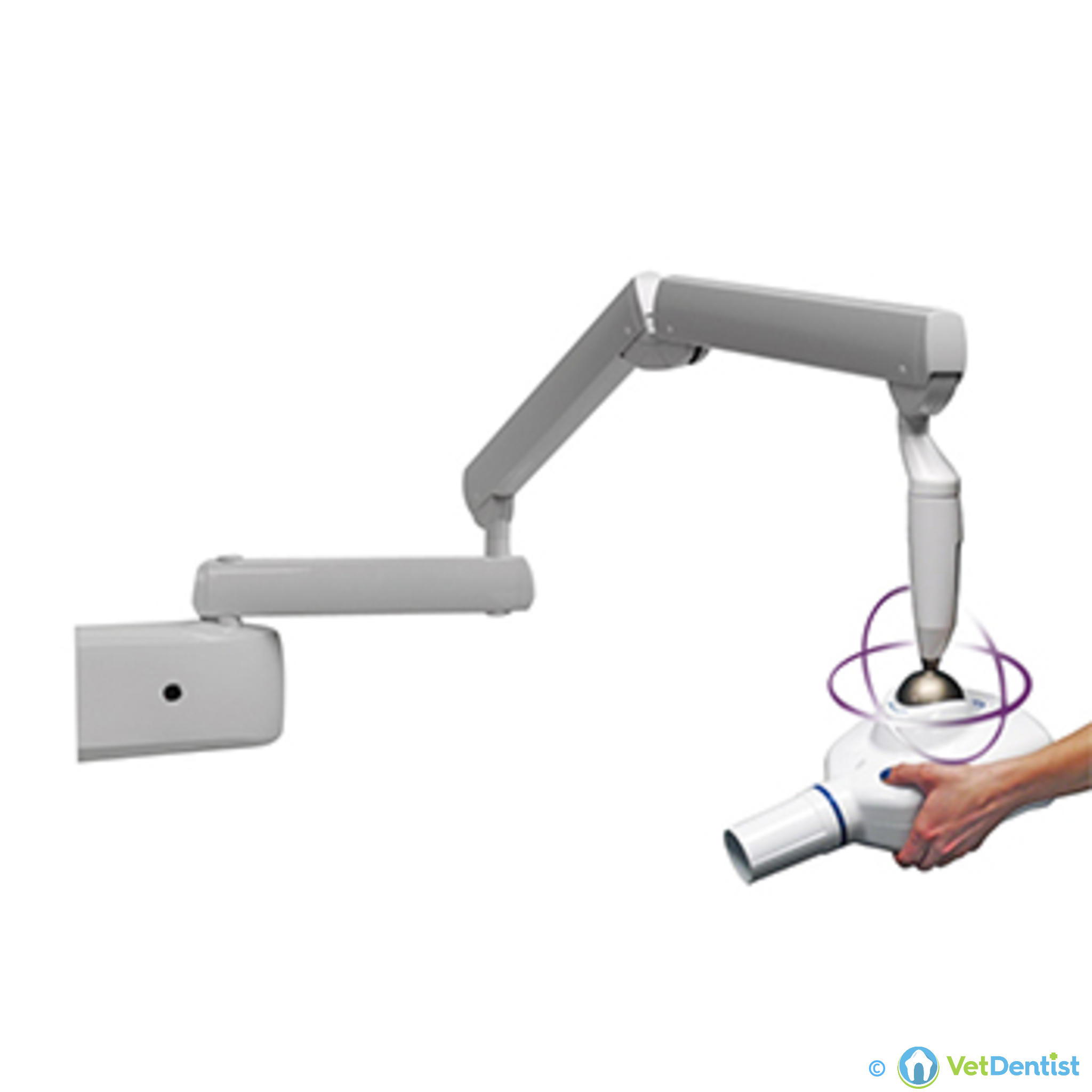

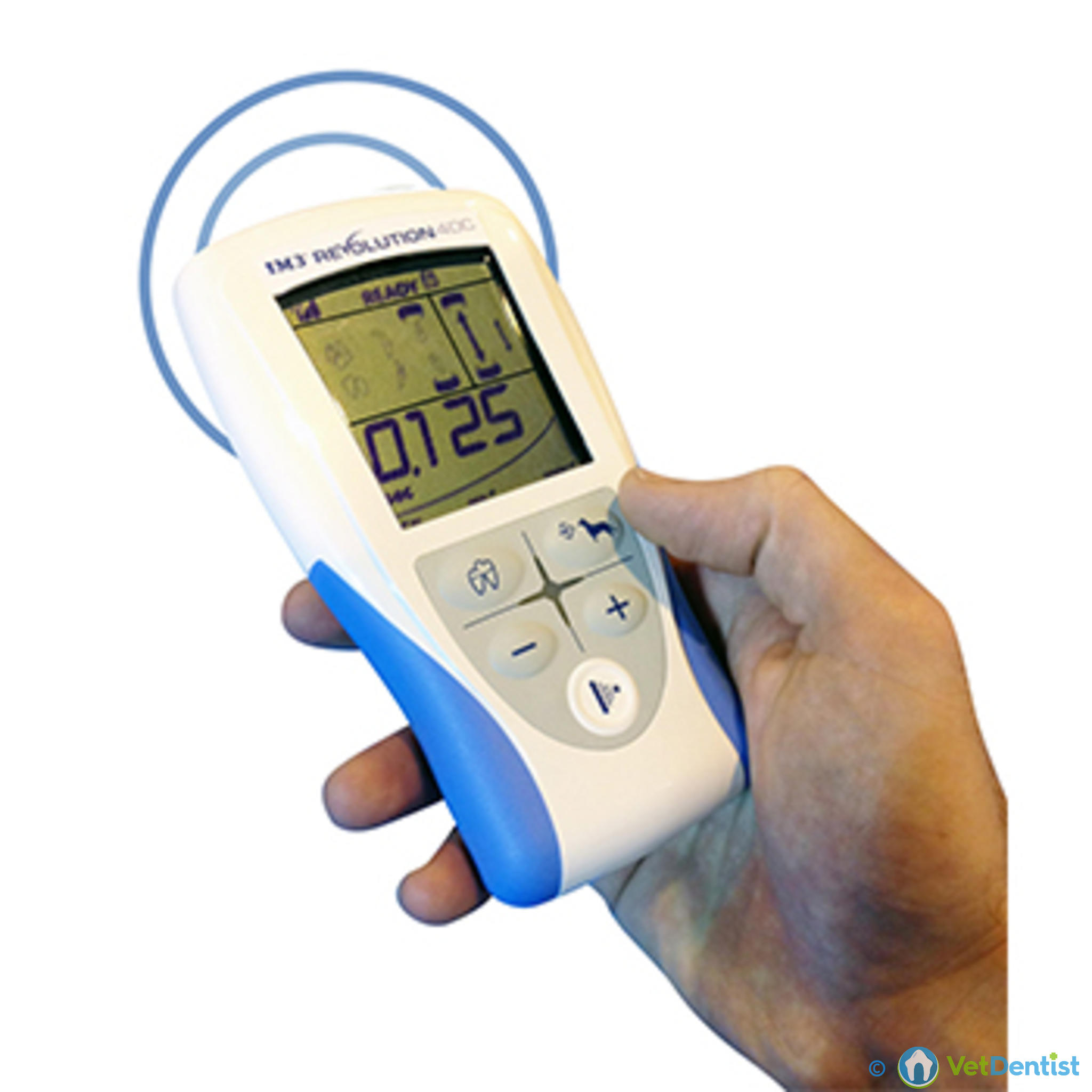
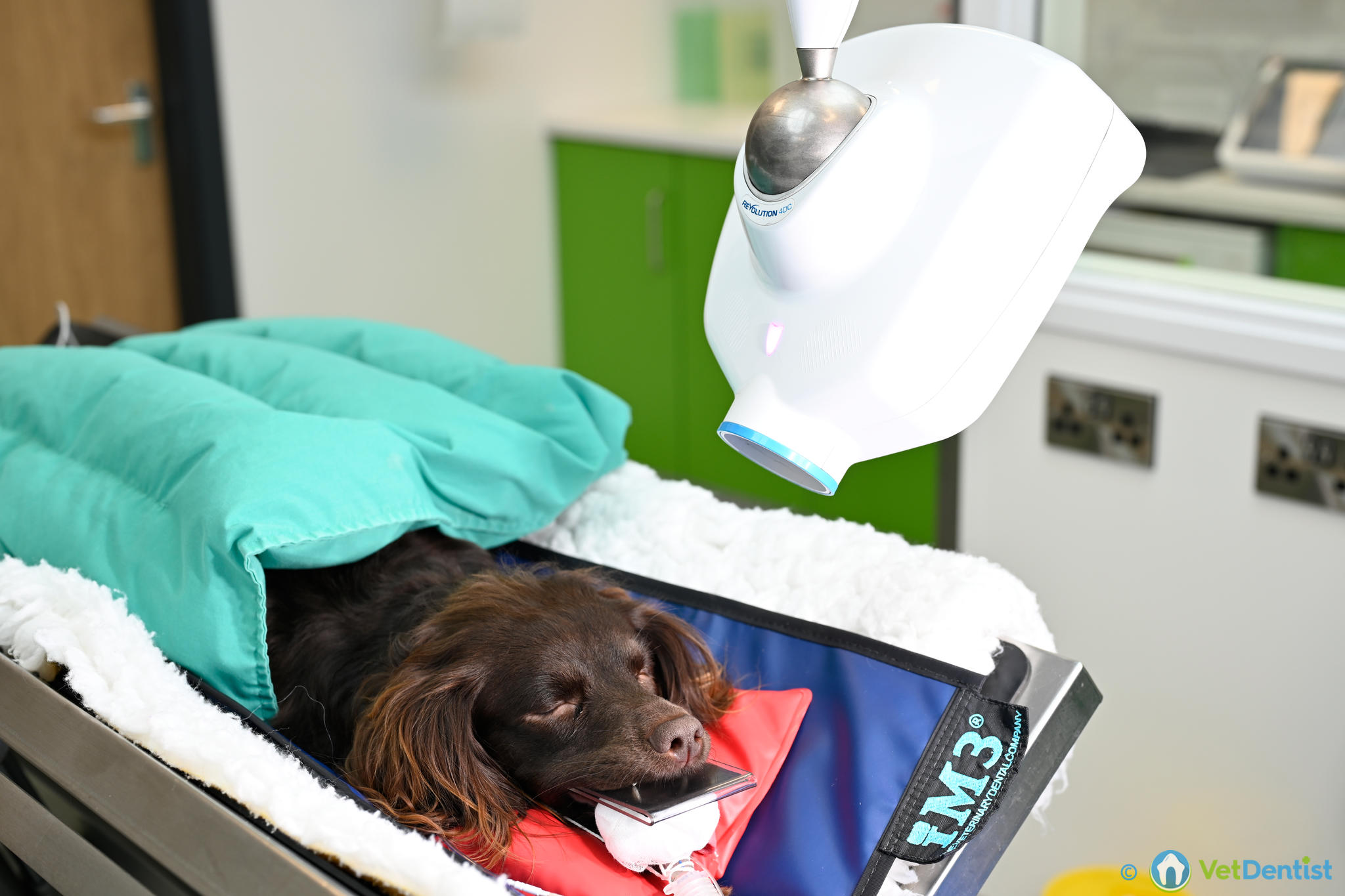
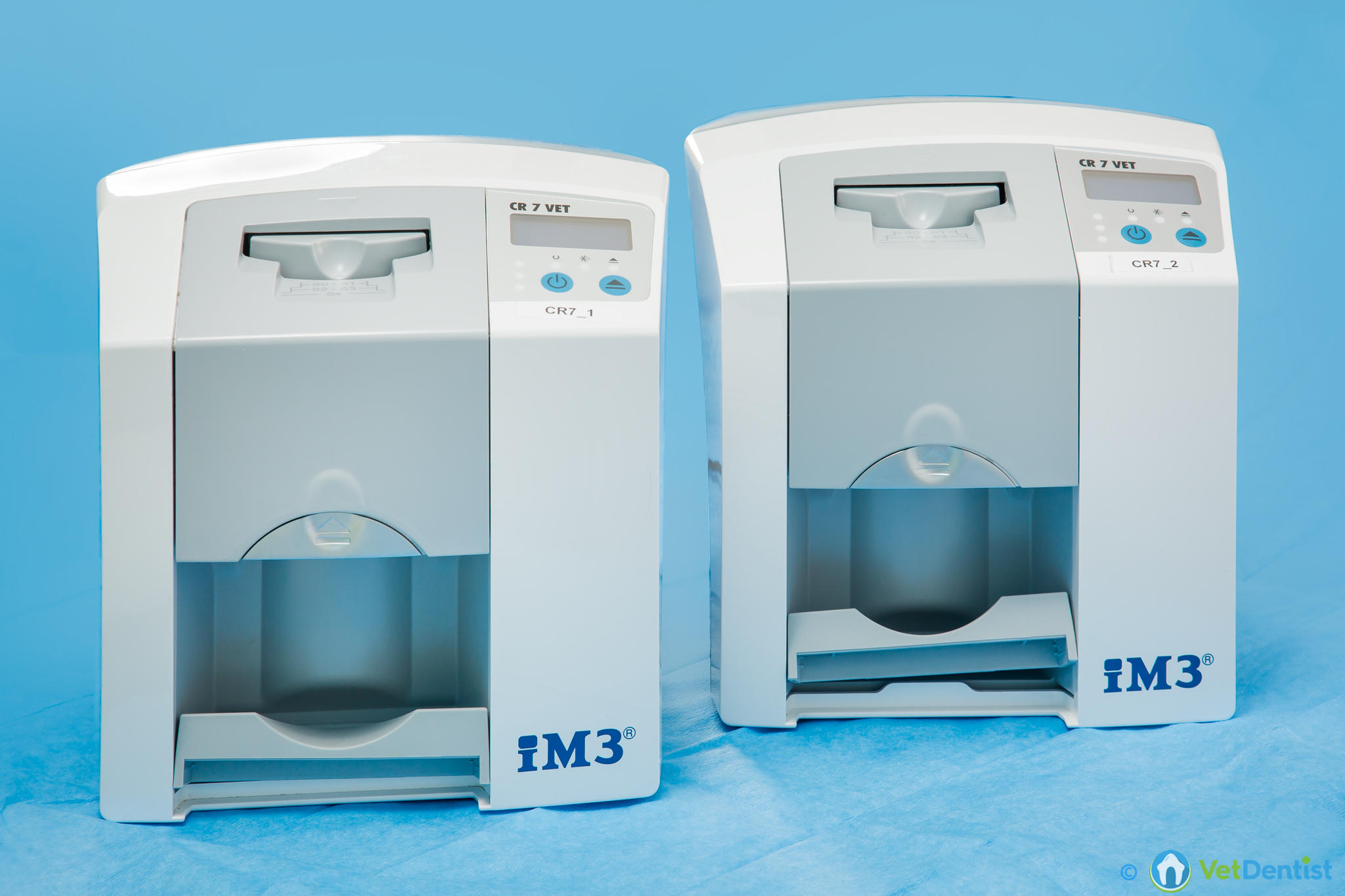

Each of the dental stations has its own dedicated x-ray generator. We use the fabulous Revolution head. The Revolution 4DC Dental X-ray generator features the latest technology to help provide the best images of our patients. The head is mounted on a full-swivel ball-joint. The tube head revolves freely around the sphere, so that practically any position can be achieved, including vertical. This means that correct siting of the head is easily achievable to get the best views of our patients and reducing waste and additional exposures. Specifically conceived for digital X-Ray imaging, the constant potential tube head combined with the smallest focal spot available for intraoral imaging (0.4mm) guarantees consistently sharp images. The Revolution 4DC allows uninterrupted use during multiple exposures, such as full mouth acquisition, thanks to the Dynamic Duty-Cycle, based on real time control over the bulb temperature, visible on the handheld display. The wireless handheld remote allows us to program / operate the unit from behind our protective screens. The supporting arms include an integrated self-balancing system to reduce any risk of tube head vibration or drift during image acquisition, this helps ensure the best image quality.
X-Ray Processors
VetDentist has a dedicated x-ray processor for each dental station. This ensures that patients’ treatment is not delayed whilst radiographs are processed. The CR-7 units offer the highest quality of radiographic reading – 25 line pairs per mm are read. This (combined with the small focal spot of the generator) gives outstanding image quality and resolution. This helps ensure that normal features and pathologic changes can be identified – allowing the best treatment to be provided.
Radiation Protection
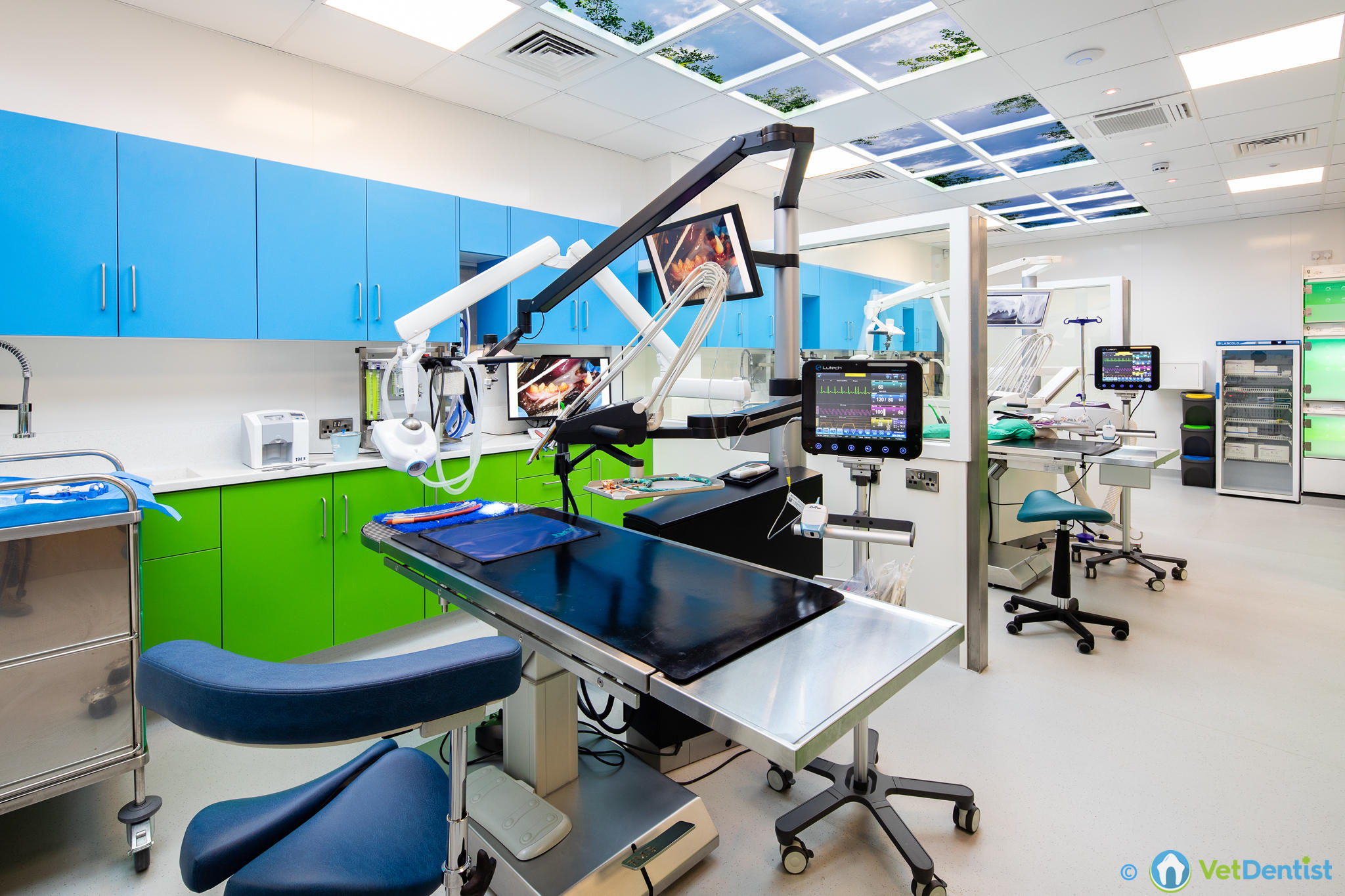
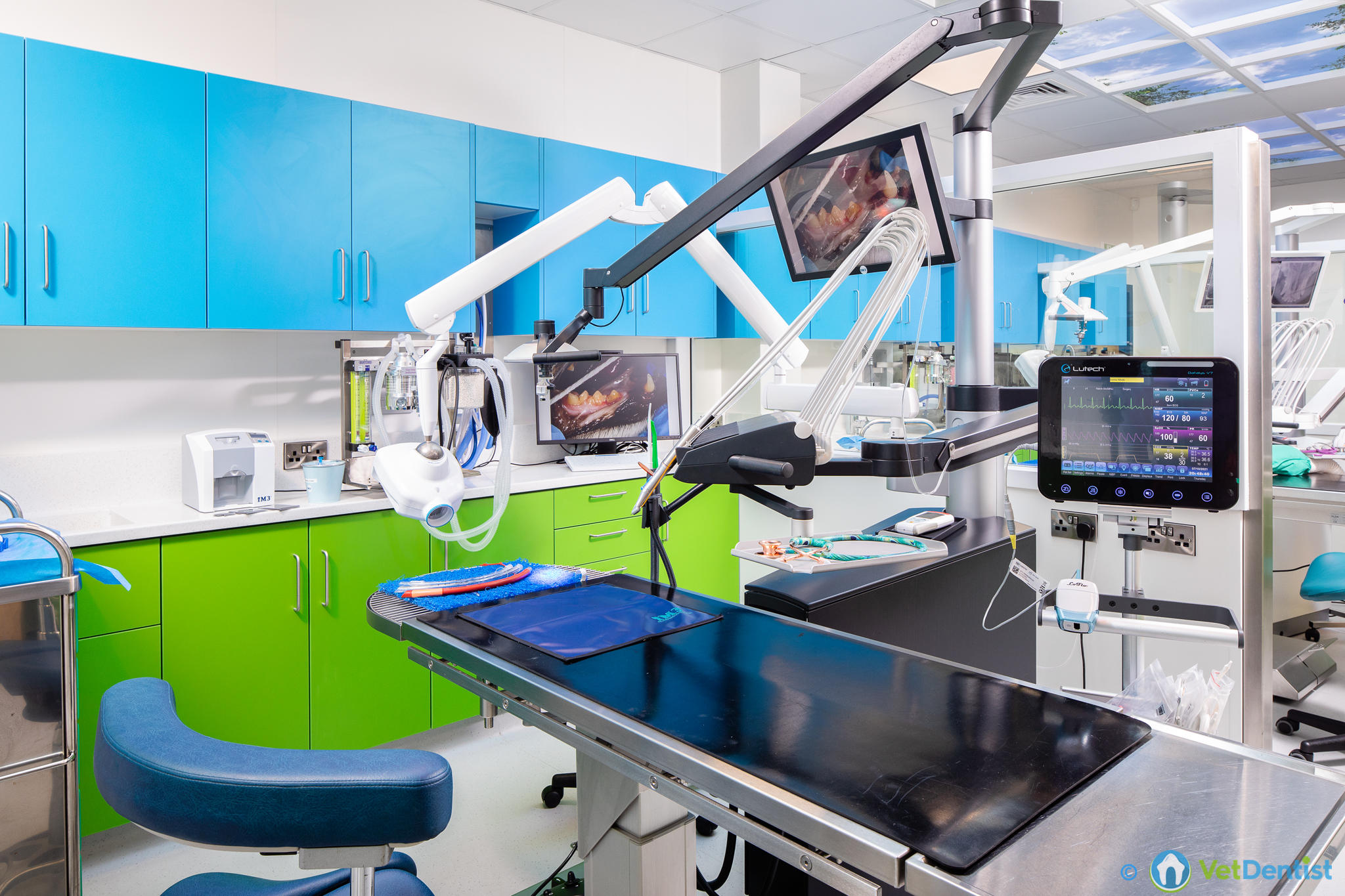


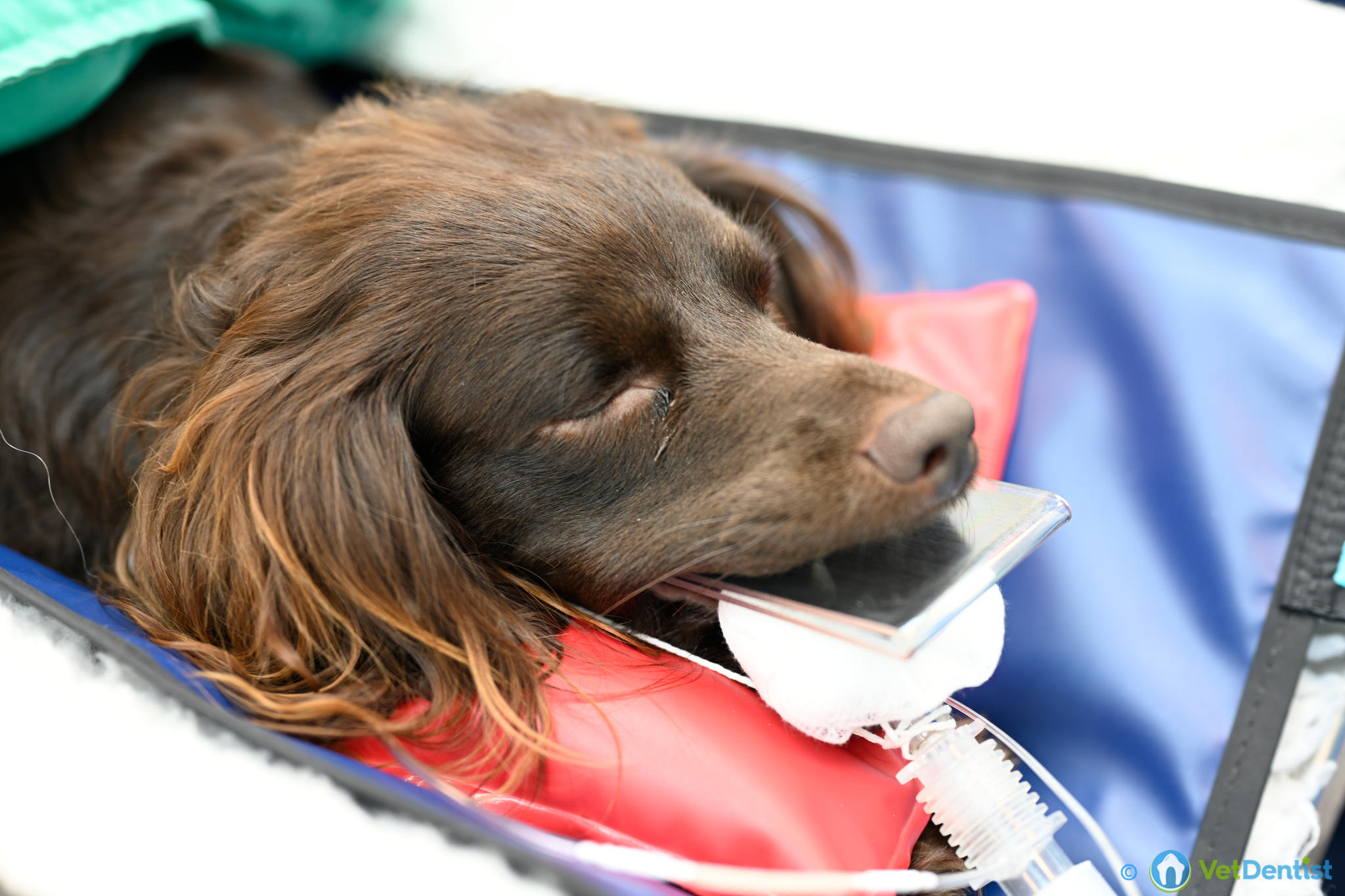
Whilst radiographs are essential for proper dental diagnosis and treatment, they do pose risks to team members. We take our responsibility for safety very seriously. The most important single feature of radiation protection at VetDentist are the dividing screens between the dental stations. These incorporate lead sheeting in the lower sections above which are lead glass panels. Whilst these panels provide an uninterrupted view throughout the EEH Dental Operatory, they are an effective block against stray radiation. This means that work can progress in one dental station whilst radiographs are being taken next door. In addition to the lead screens we also use lead sheets beneath our patient’s heads. This helps prevent scatter radiation – improving the image quality – but also helping to ensure the safety of our team.
Cone Beam CT
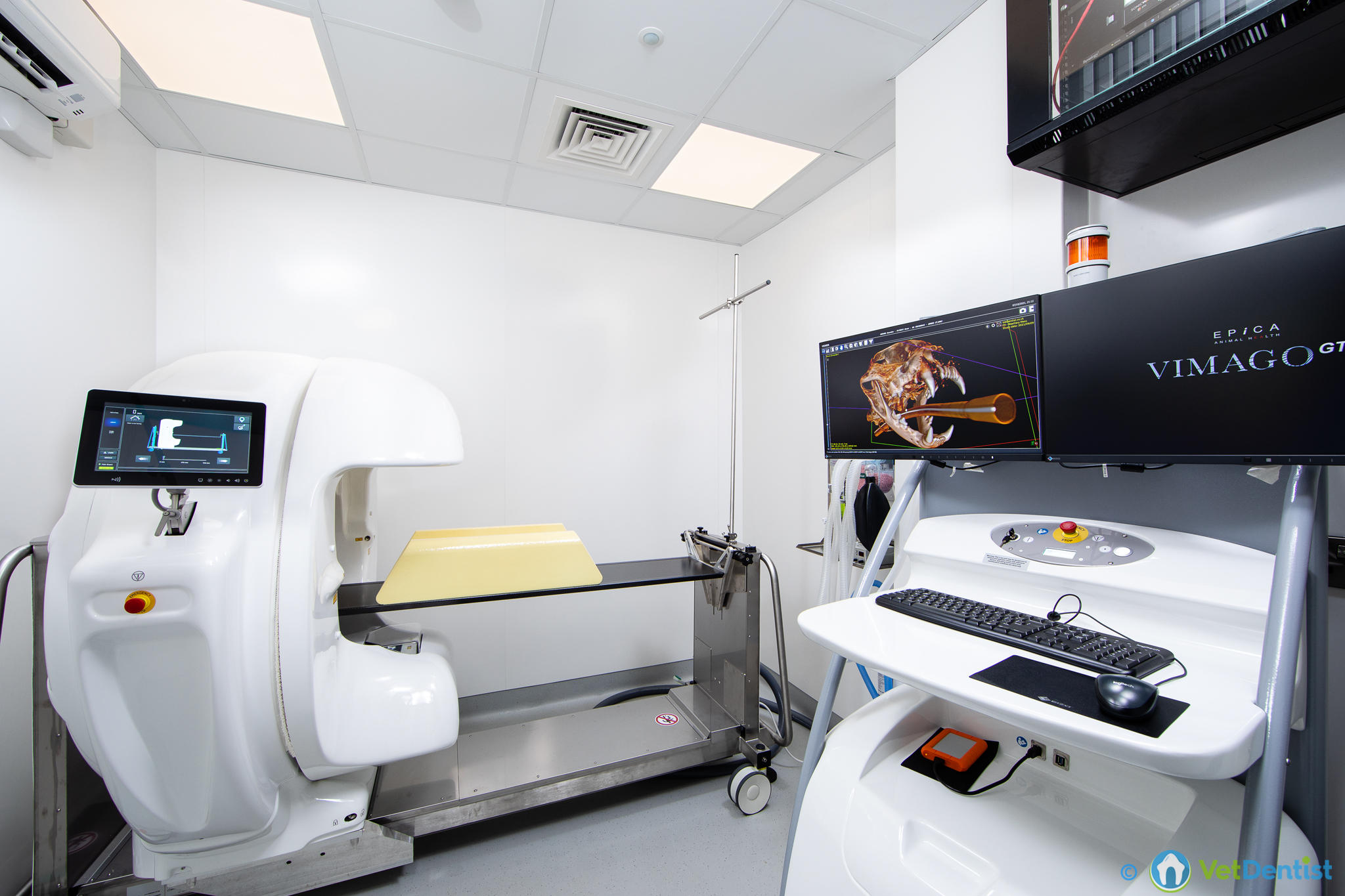
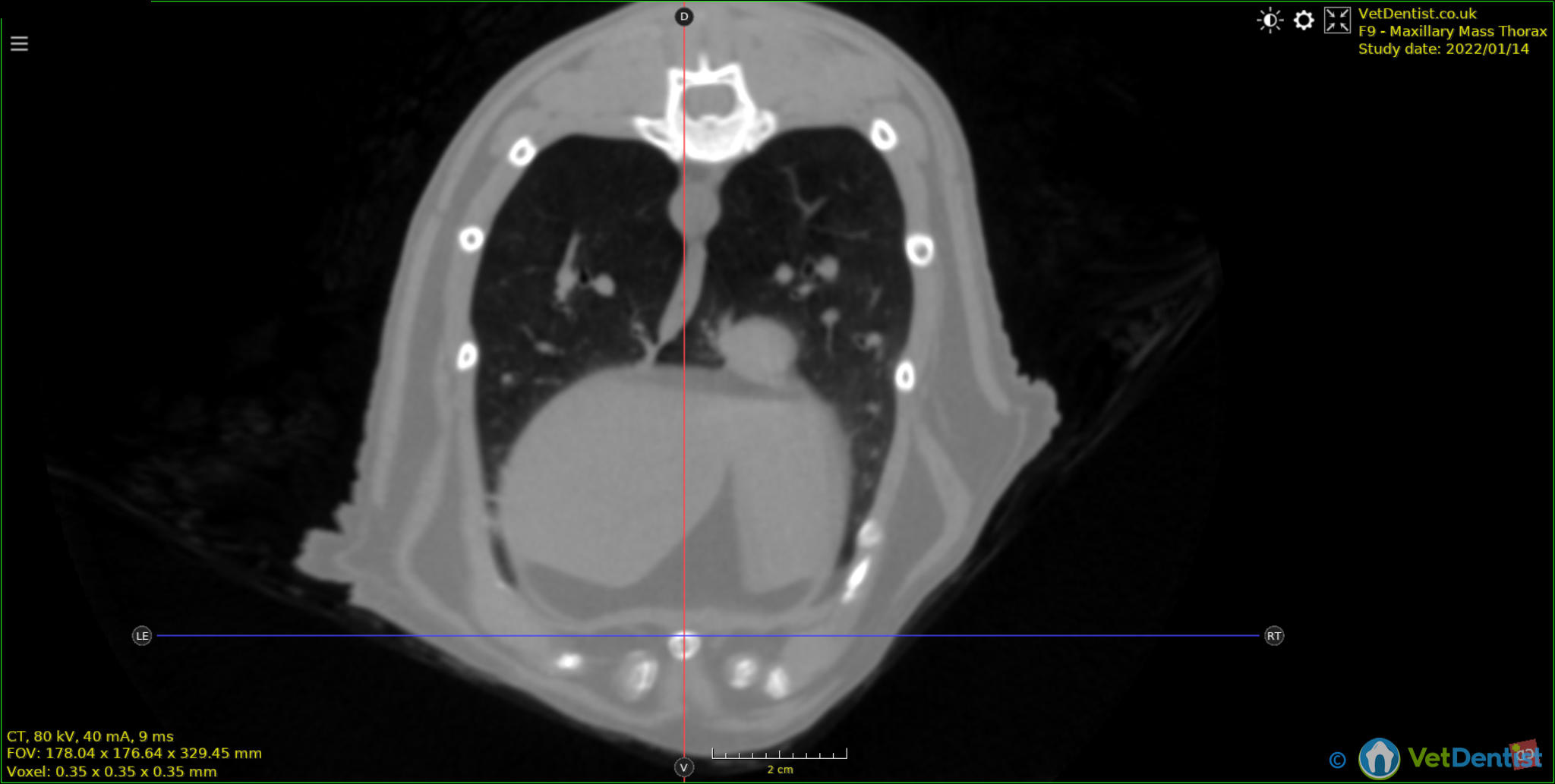
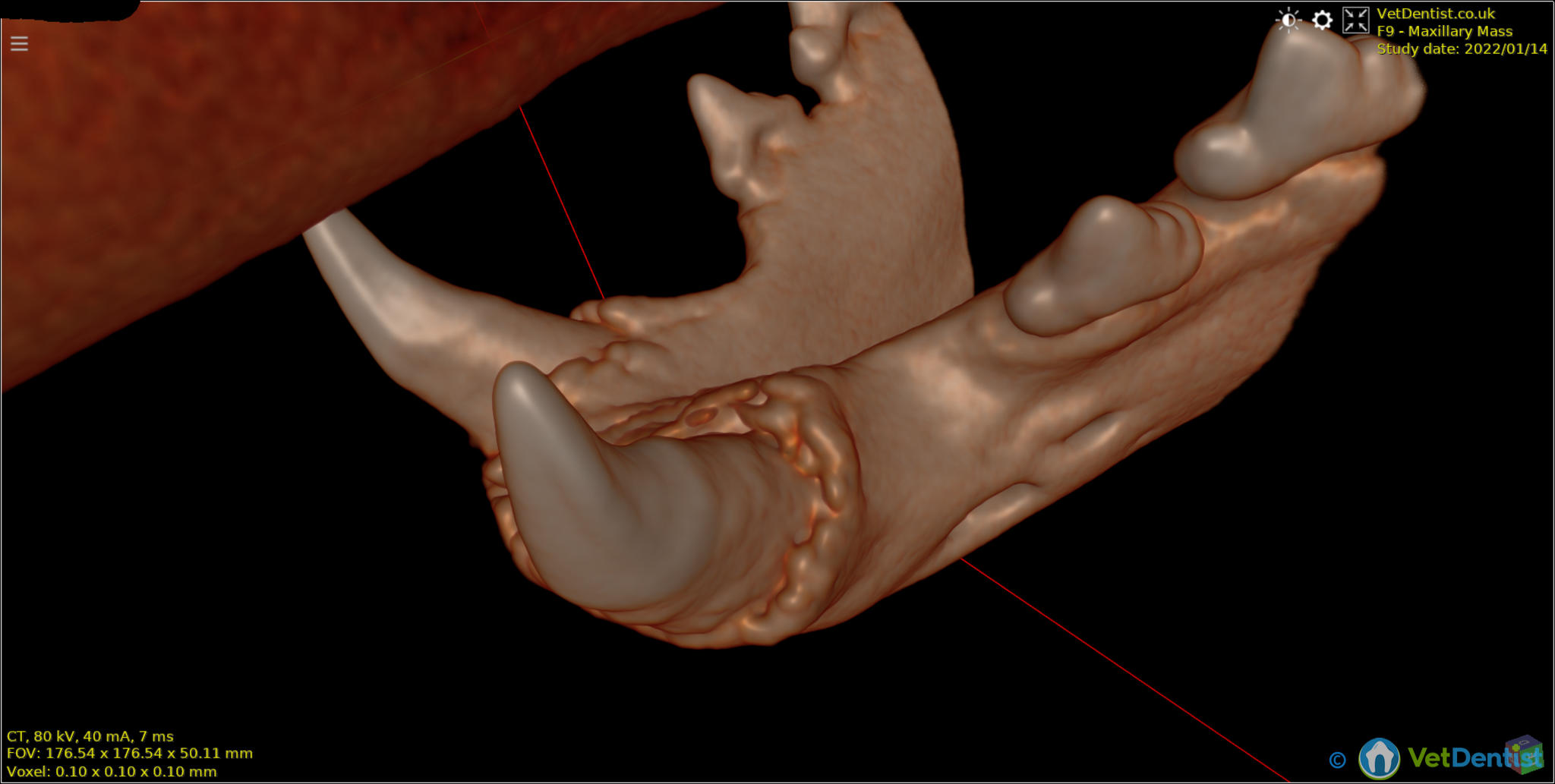

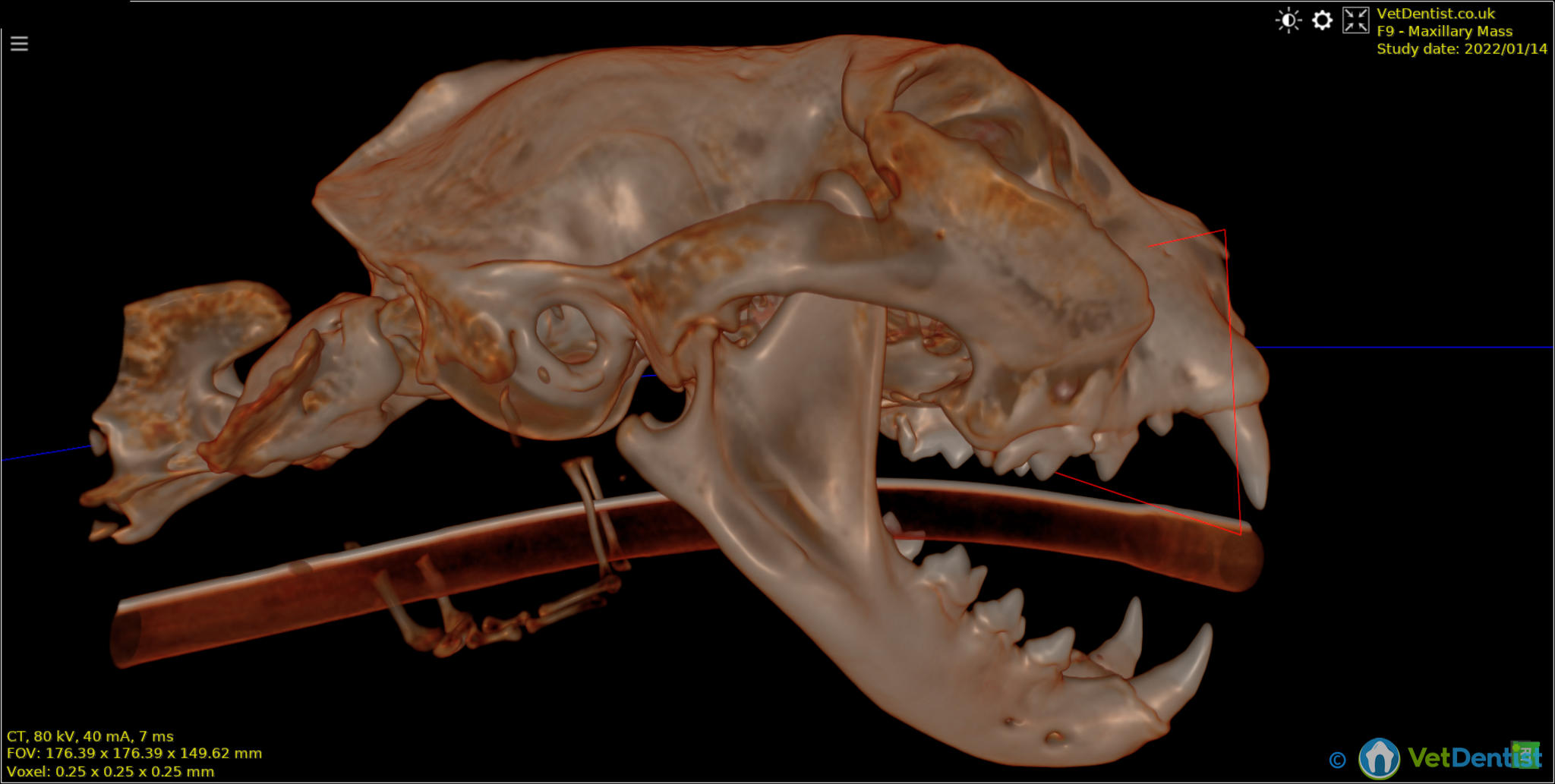

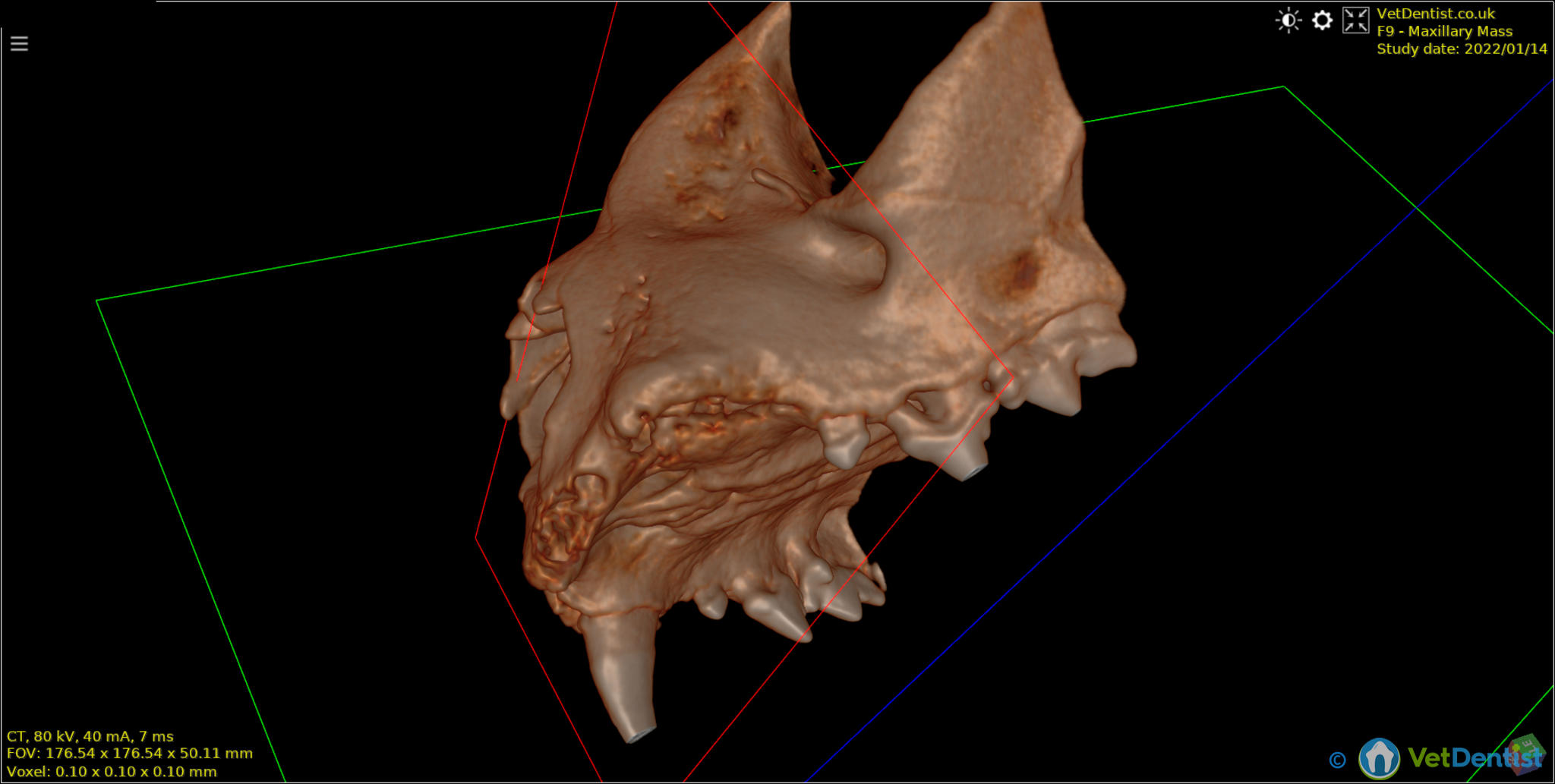

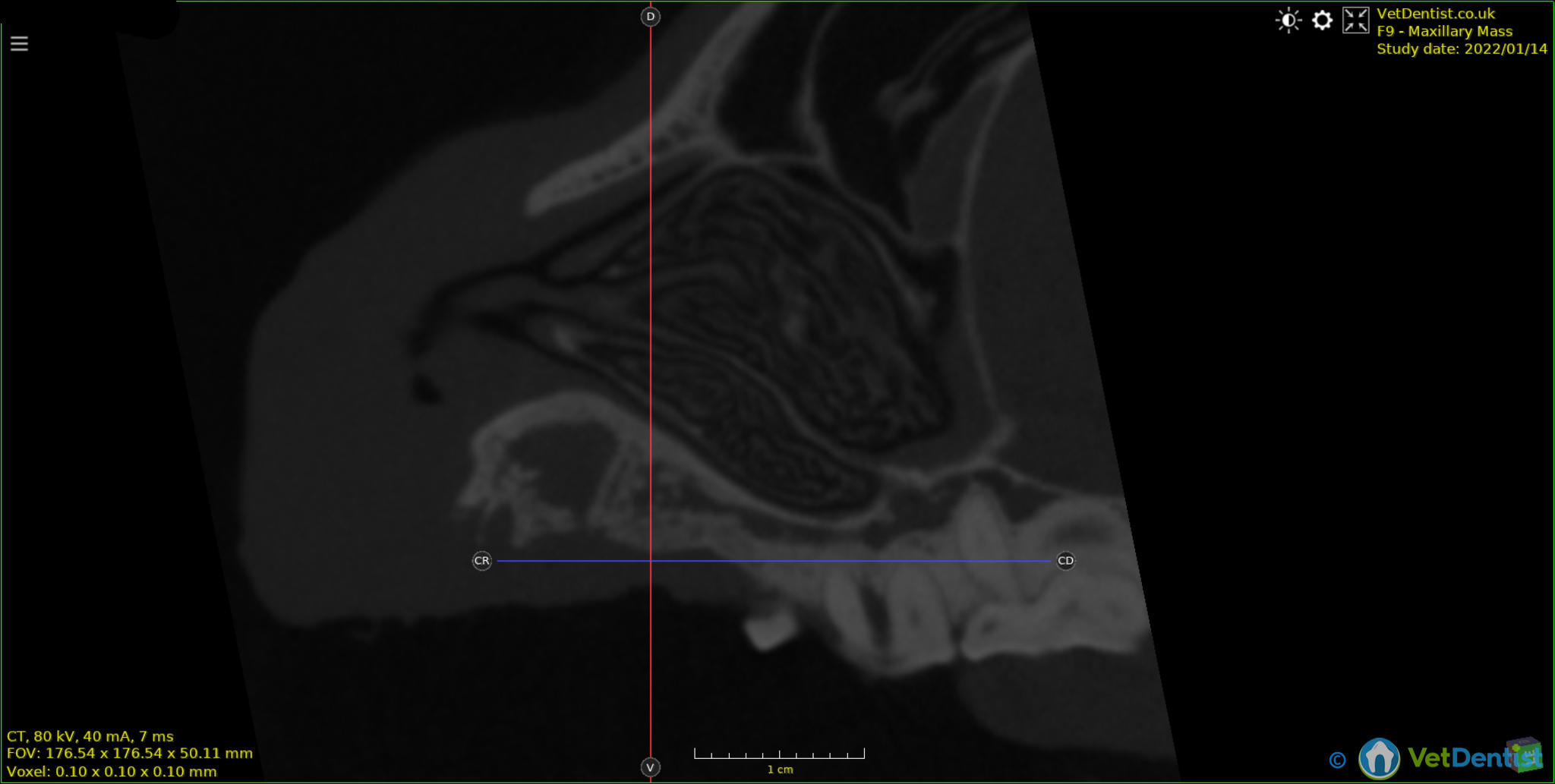

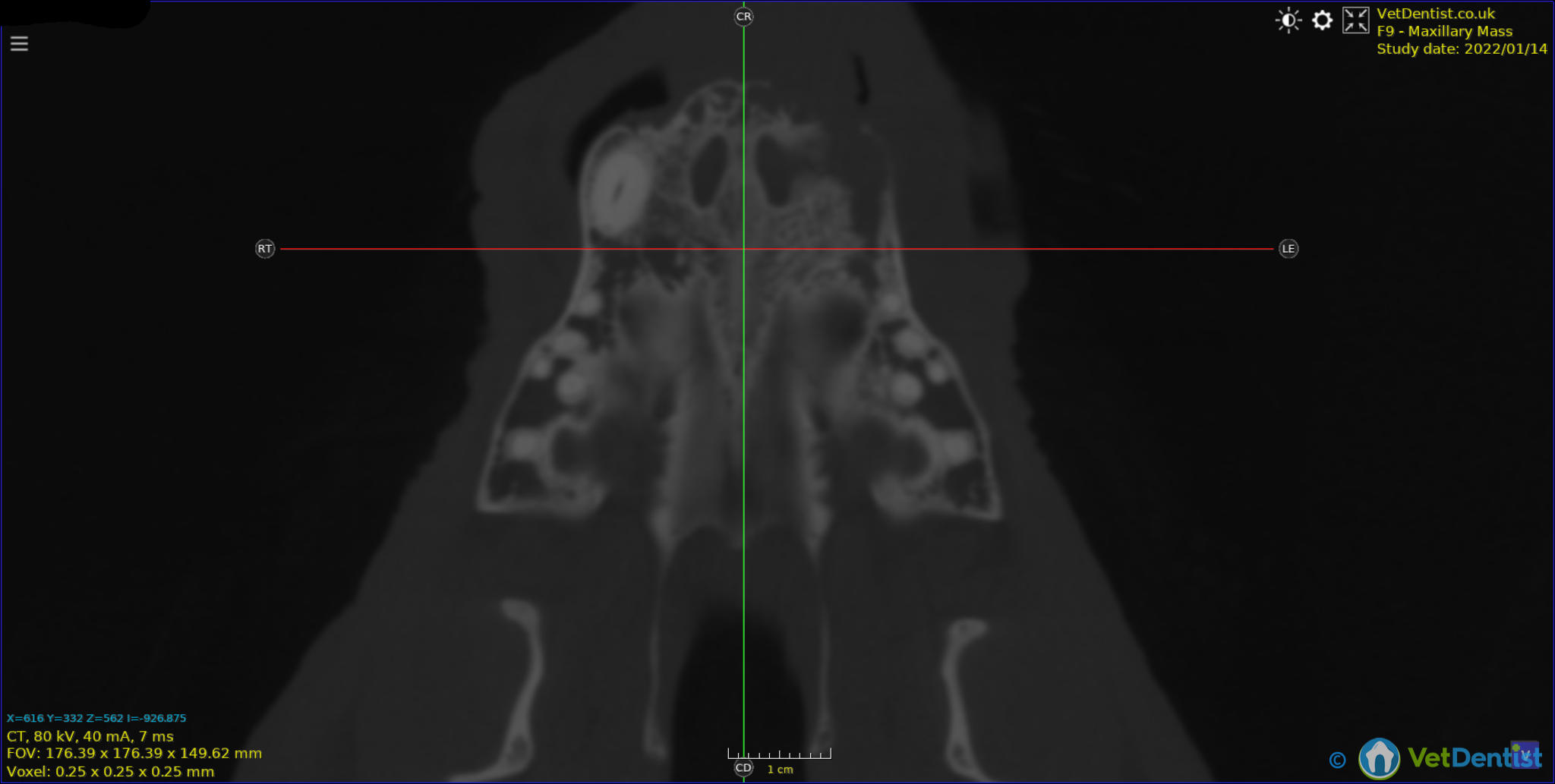
The Cone Beam CT unit provides a method of obtaining 3-Dimensional x-rays of our patients. Essentially the system provides radiographic slices (like a bacon slicer), in all 3 dimensions. These slices can be looked at individually – or the computer can reconstruct a 3D model. This is incredibly helpful when assessing patients with oral or facial disease, or after trauma. Generally, our Head CT’s are carried out with a resolution of 0.25mm (which provides far better clarity than most standard CT’s). However, for fine detail we can up the resolution to 0.1mm. Additionally, the unit can be used to scan chests for evidence of metastatic spread of tumours. We have consultants available in the USA who can provide expert second opinions when required.
Magnifying Loupes





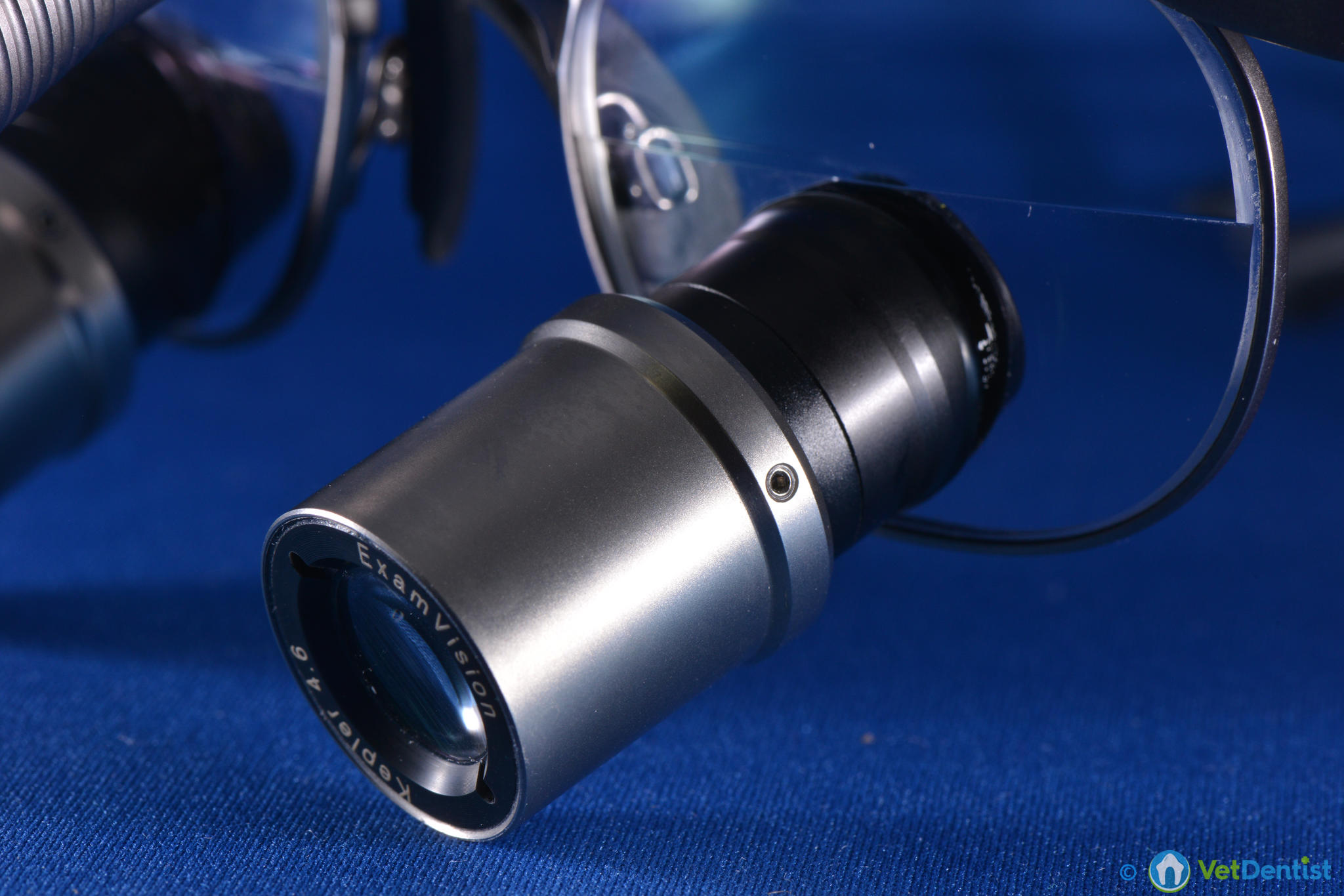
Magnification is vitally important to allow high quality surgery. Over the years VetDentist has invested in many different loupe systems. The standards of manufacture, the ease of use have increased dramatically over the years – whilst the weight of the loupes (important when they are being worn for hours each day) has decreased. The current “gold-standard” loupe provides a range of magnification (3.5 – 7.5*) in one loupe. The loupes also carry a bright LED light source and a camera attachment is also available.
Cameras

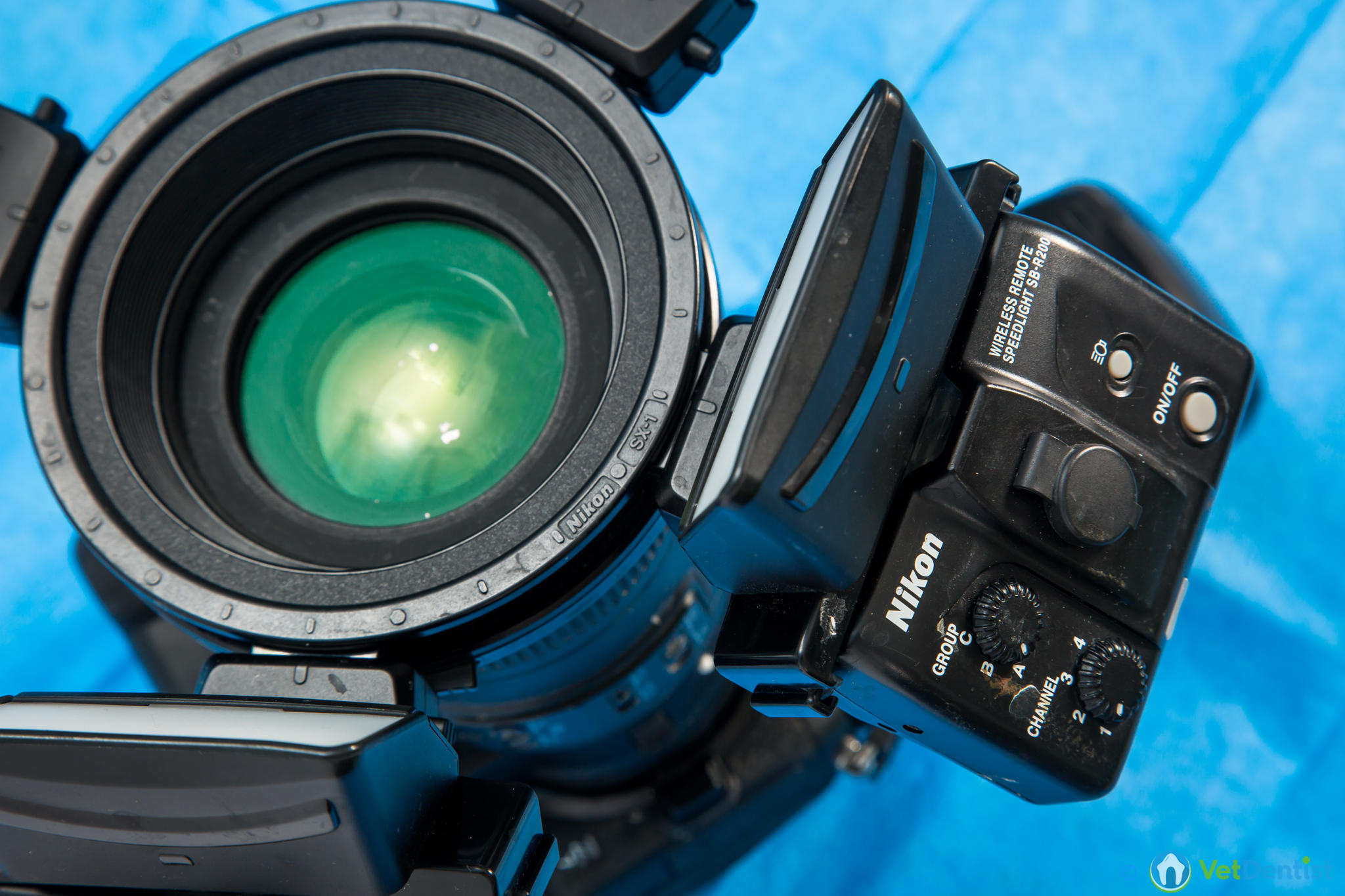
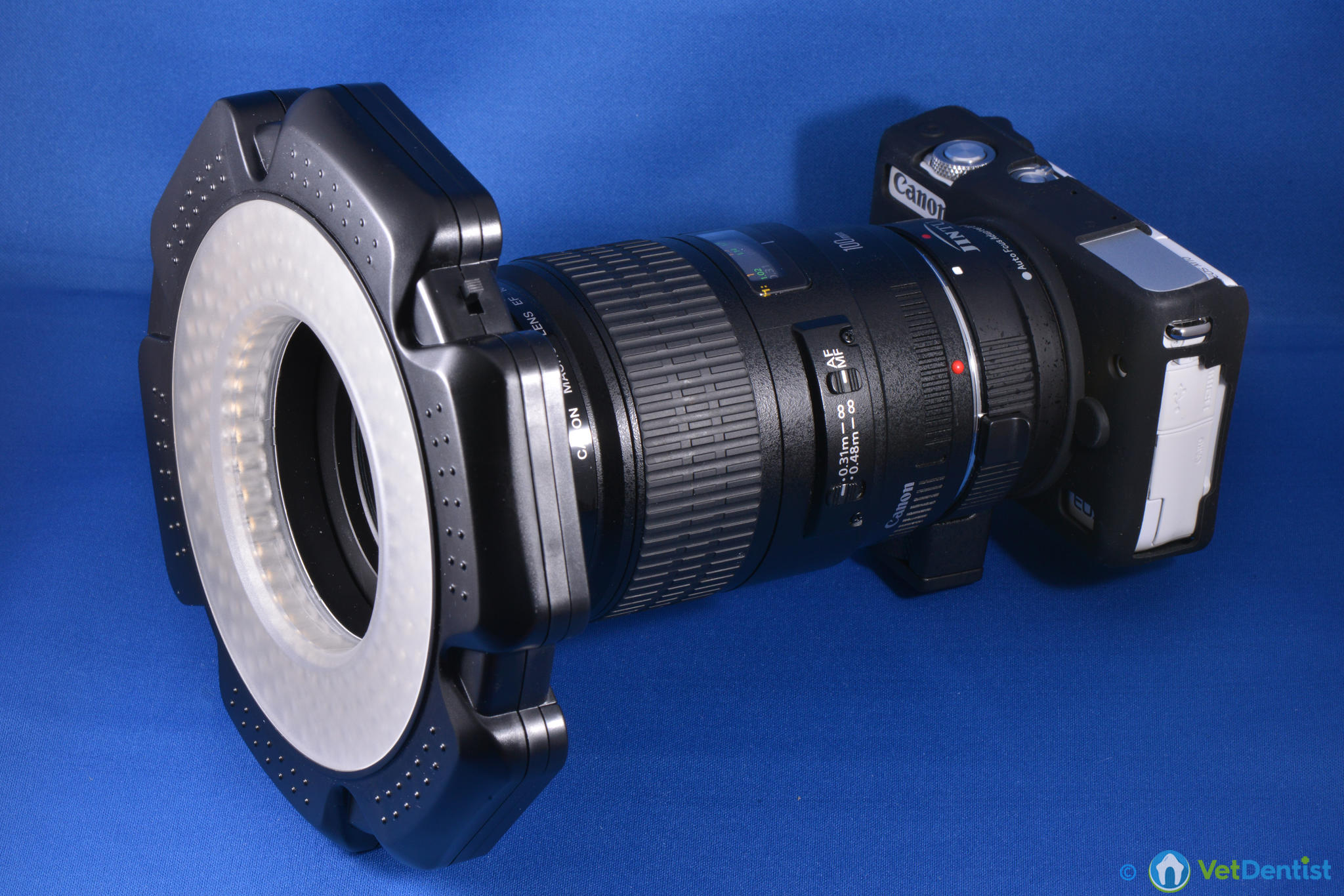
High quality images of our patients and lesions is an essential part of our records. The images are also used to help to convey information to both clients and to the referring veterinary surgeons. The images are also an essential part of the lectures that VetDentist provides, helping to educate other veterinary surgeons and the next generation of professionals. Macro (close-up) images require good lighting – but that can then result in reflections of the flash light. Using special flash lights helps to avoid this problem.
See All





